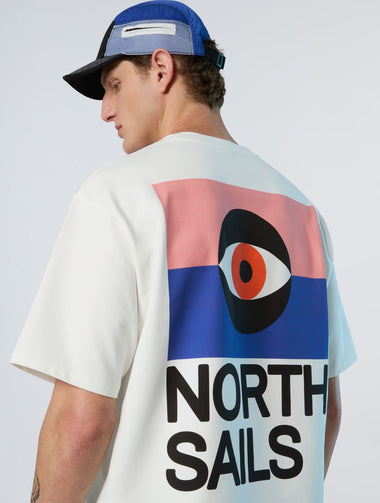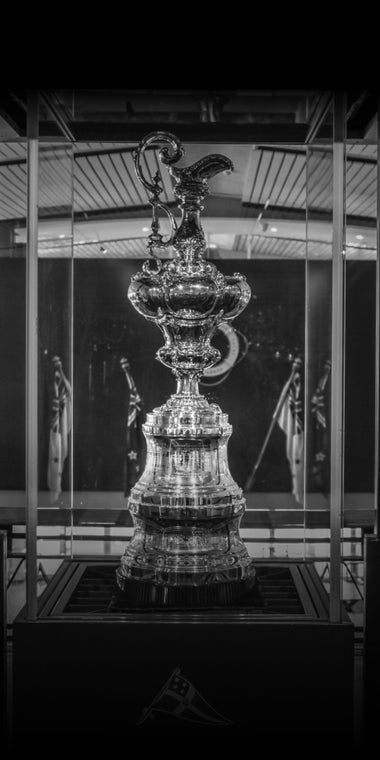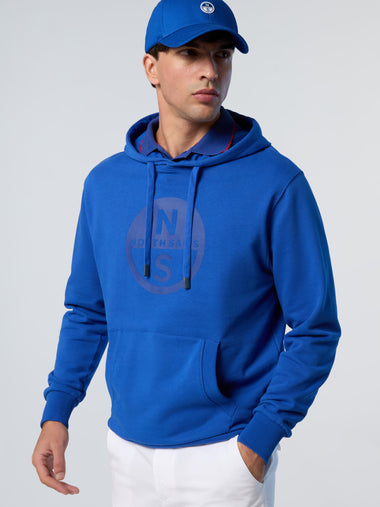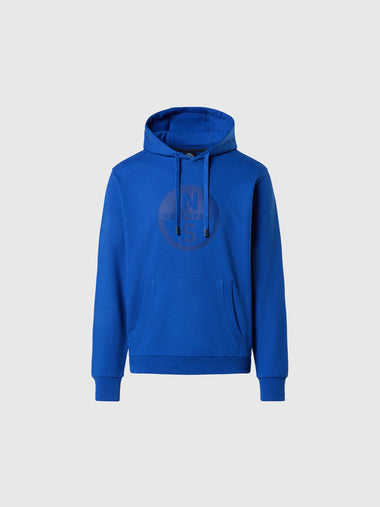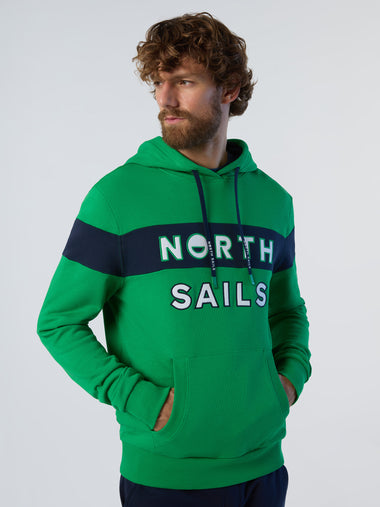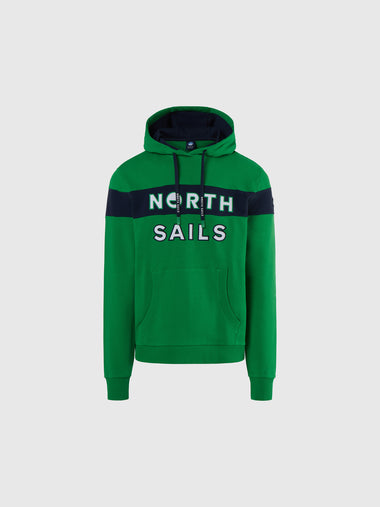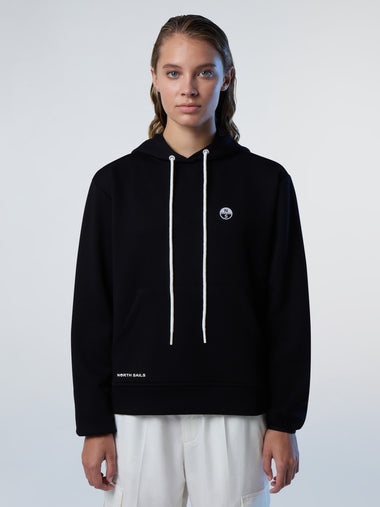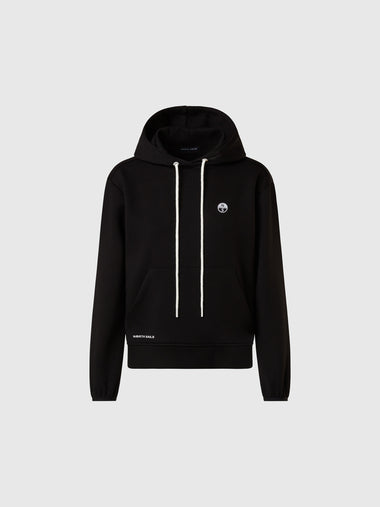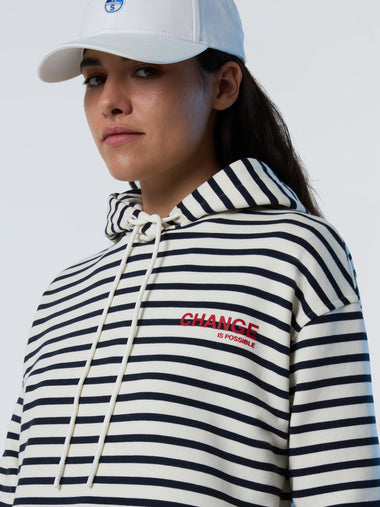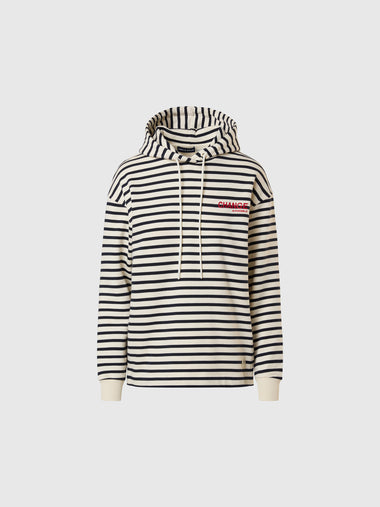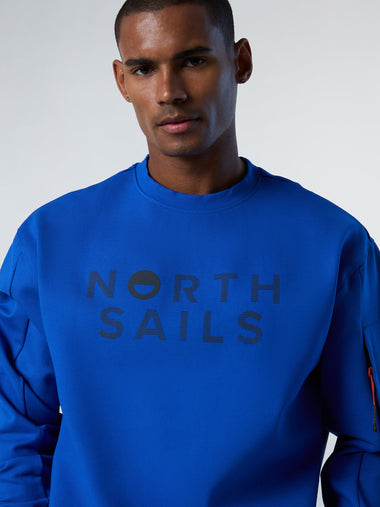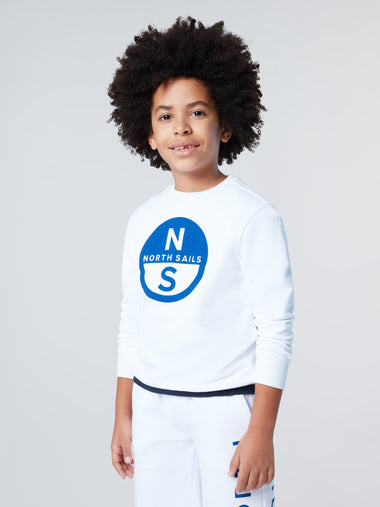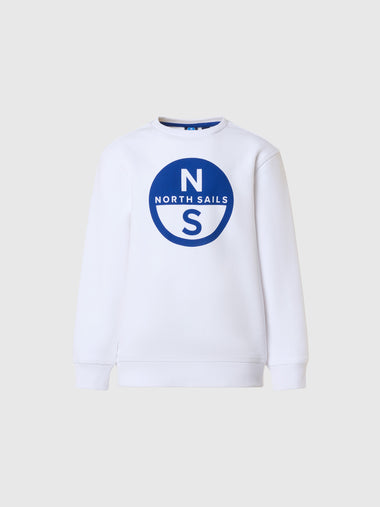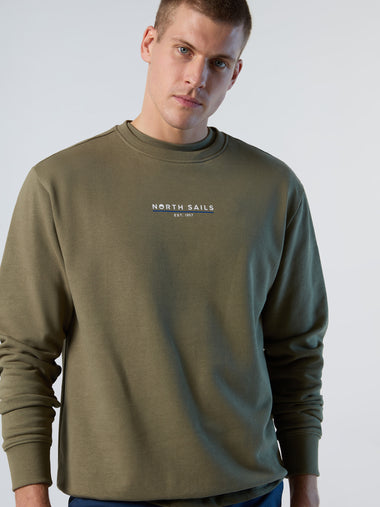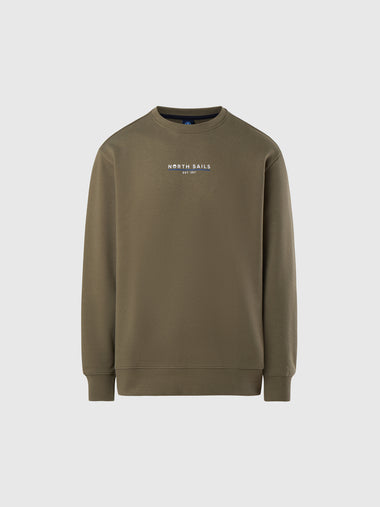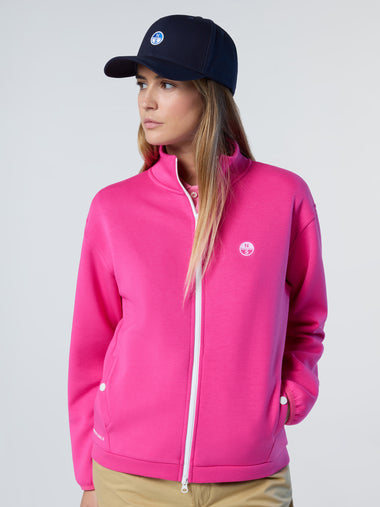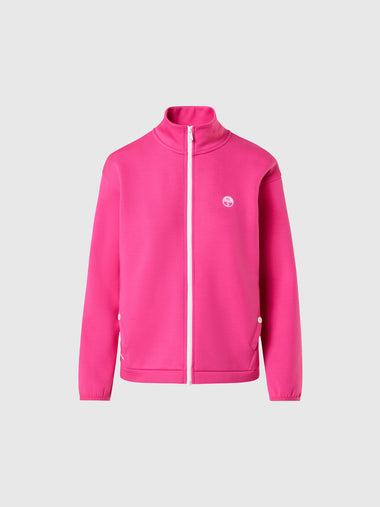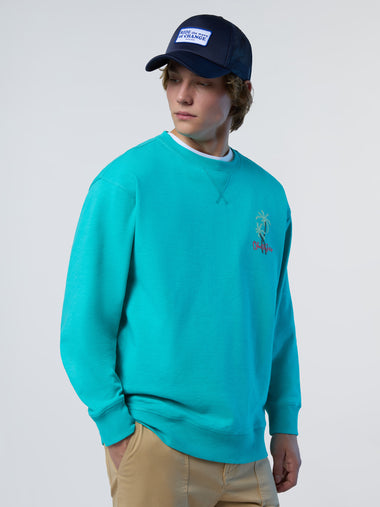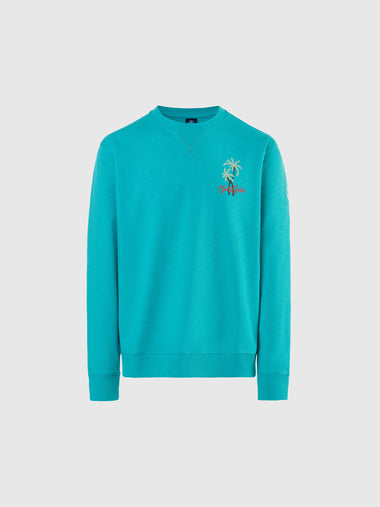NORTH SAILS BLOG
All
Events
Guides
News
People
Podcast
Sustainability
Tech & Innovation
Travel & Adventure
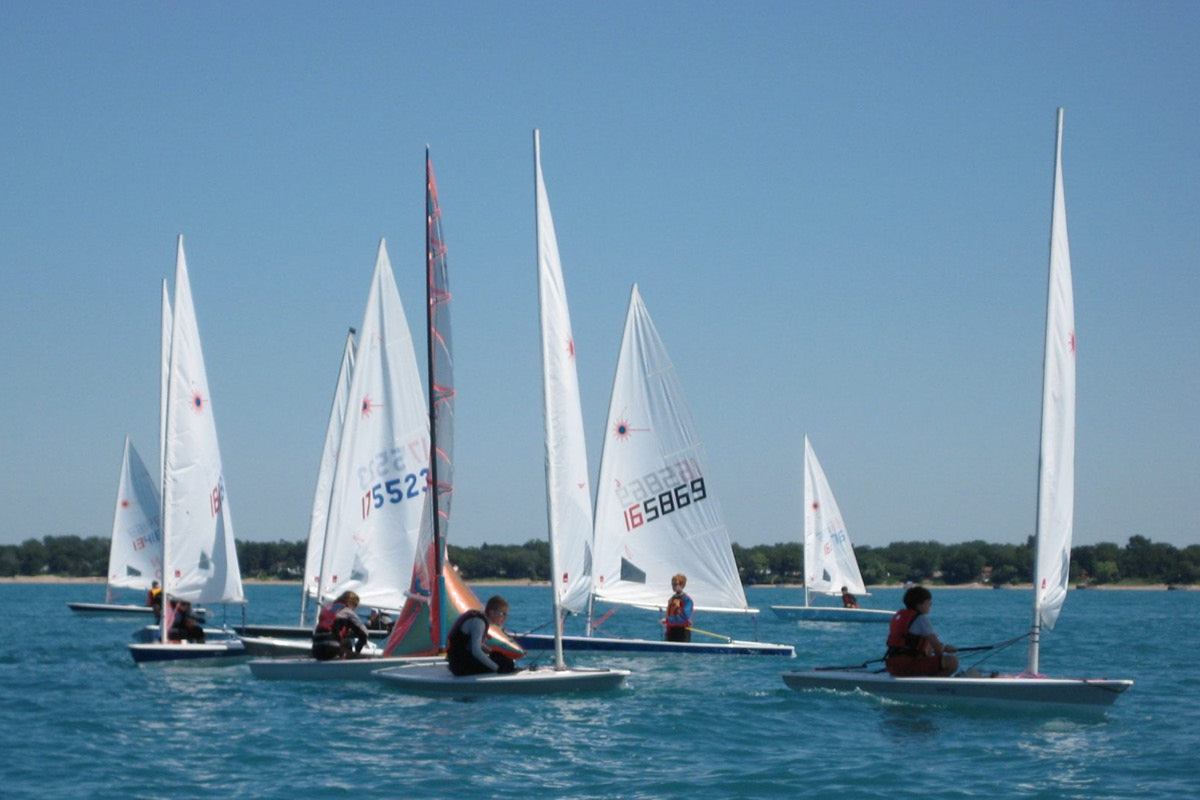
IT STARTS IN JUNIOR SAILING
IT ALL STARTS IN JUNIOR SAILING
One Sailors Journey to Keep Sailing in his Life
Nigel, third from right back row, has been involved in sailing since he was a tiny tot.
Nigel Crosscombe began sailing at a young age through lessons at Etobicoke Yacht Club (EYC) thanks to his Aunt who lived nearby. From the get-go, Nigel became entrenched in the sport and loved being on the water. Fast forward 20+ years and he's still on the water and helping the next generation. When he is not in the classroom teaching, Nigel is a LF with Ontario Sailing, runs his own company focused on sailing education and still actively sails. He shares his sailing story and advice for clubs trying to get more youth involved.
Tell us how you got into Junior Sailing.
Growing up I had an aunt who was very involved in my life and she lived near a yacht club. She always very generous to my sister, myself. She saw a sign, advertising a local sailing program and she thought it'd be a really cool birthday present to gift me a week of sailing camp. I went to sailing camp and then I was hooked and you know, two weeks became a month, which became a whole summer and I wanted to get into racing. I tried racing and I had a really good time, but I wasn't quite old enough to take it seriously. From there, I progressed through the levels very quickly and then became an instructor and for me that, you know, I became a part of a community.
What were your next steps once you became a sailing instructor?
I tried the laser sealing circuit and I was really too young but I was still really keen to go sailing. At Etobicoke Yacht Club, they had a really cool program called the Next Generation Regatta where a bunch of skippers donated their boats and took kids from the sailing school out. The goal was really to get youth from the club and the community out keelboat racing. They'd let you skipper, I mean, they were on board to make sure you didn't crash. After that I found a boat that I clicked with and I, and I got involved in the keelboat sailing seam, sailing C&C 27 out of EYC. Through that opportunity, you know, that's when I really got to learn a lot about racing by being able to take a bit of a backseat role. Now, keelboat racing is what do for the majority of my sailing again.
What is your best advice for yacht clubs or programs to get youth to stay involved? What do we need to do as a community to help keep people involved?
We got a lot of things we get to do, but one of them is definitely to make sure that our sailing clubs are accessible, open and friendly for all. I remember when I was a young kid at a sailing school getting told by a member that we couldn't play over here and we had to go to play over there, and that was a gravel parking lot where they said we could go play. At the same time, you know, I have worked at a lot of clubs that have been very friendly and I've been around clubs that are very friendly for youth and kids. I think when you start looking at the age that you start losing people is around 18. If they don't become an instructor or they leave instructing to pursue a job related to their field of studies they might not come back to sailing. So you have some people who are involved in weeknight racing, but I think a lot of yacht club programs rely on owning a boat and for a lot of people in their twenties, which is when you people can't afford to do it. There's clubs that are doing boat sharing programs, such as National Yacht Club's 420 club where you don't have to own the boat but you still are able to participate in a racing environment, you still have opportunities to continue participating in the sport.
What keeps you coming back?
I love really growing the sport and supporting sailing in all the different forms, through the work I've done with Ontario sailing I've had an opportunity to travel with, see what sailing looks like. I grew up sailing in the Toronto area and it was mostly yacht club based programs. Now I've gone to sailing programs that are in the Muskokas that own one style of dinghies, a shed and they have fantastic programs. But I've learned that sailing looks different all over the place and, and to be able to support those clubs with their growth and development wherever they are, whether it's race or recreational programs, whatever their next step is. If there's a way that I can help them and, you know, give back to the community that gave me the best summers of my life. That's sort of what I'm passionate about in my work as a teacher.
How did you create Crosscombe Sailing?
I had a good friend who went to an overnight camp and they needed a sailing instructor to evaluate bronze five at the time. They didn't have a local instructor and he said any chance you could come to my camp this weekend? And, you know, a deal was made. I went up and I got to work with this camp sailing program, make a little bit of money on the side on the weekend. And you know, for me, I kind of really enjoyed that experience. As I started returning more to my work as a learning facilitator, I realized that there were a bunch of clubs and there was a demand for it . Especially with overnight programs and clubs, a little bit outside of the GTA and just to build capacity; there was a desire for training. Crosscombe Sailing really evolved out of the need for education, especially outside the GTA. A lot of Crosscombe Sailing has come from just saying yes. As long as I feel like it's an appropriate fit and there's a way that I can help them, just say yes to that opportunity. It's something that I've learned a lot through when I was traveling around the world that just say yes and you'd be amazed at where it takes you.
What advice would you give to skippers and clubs to get new members to be involved? How would you get more youth involved long-term?
I think that working with your local junior sail and asking them, in an overall club sense, to create a strategy on how junior sail and your club racing program can work together. As I mentioned, the next generation regatta where you're, you know, giving kids an opportunity to go out on keelboats, giving them an opportunity to drive, make decisions, it allows them to feel that they're involved and that they're not just turning a winch or sitting on the rail or getting told to go down below another racing started. Give them an opportunity to be involved and teach them, train them and they're going to return that investment that you make in them.
Good crew aren't found, they're made.
We need to grow the sport and work on making it accessible. We've got to work on that transition into sort of like what we, in sailing, call long term athlete development (LTD), which is essentially on the one side of the ladder, it's a pathway from being first contact with the sport to the Olympics. But on the other side it's sailing for life. The idea behind sailing for life is that eventually you might not decide that competition's not for you, but that's okay, because there's this whole other aspect of the sport that becomes a lifestyle, a community.
READ MORE
READ MORE
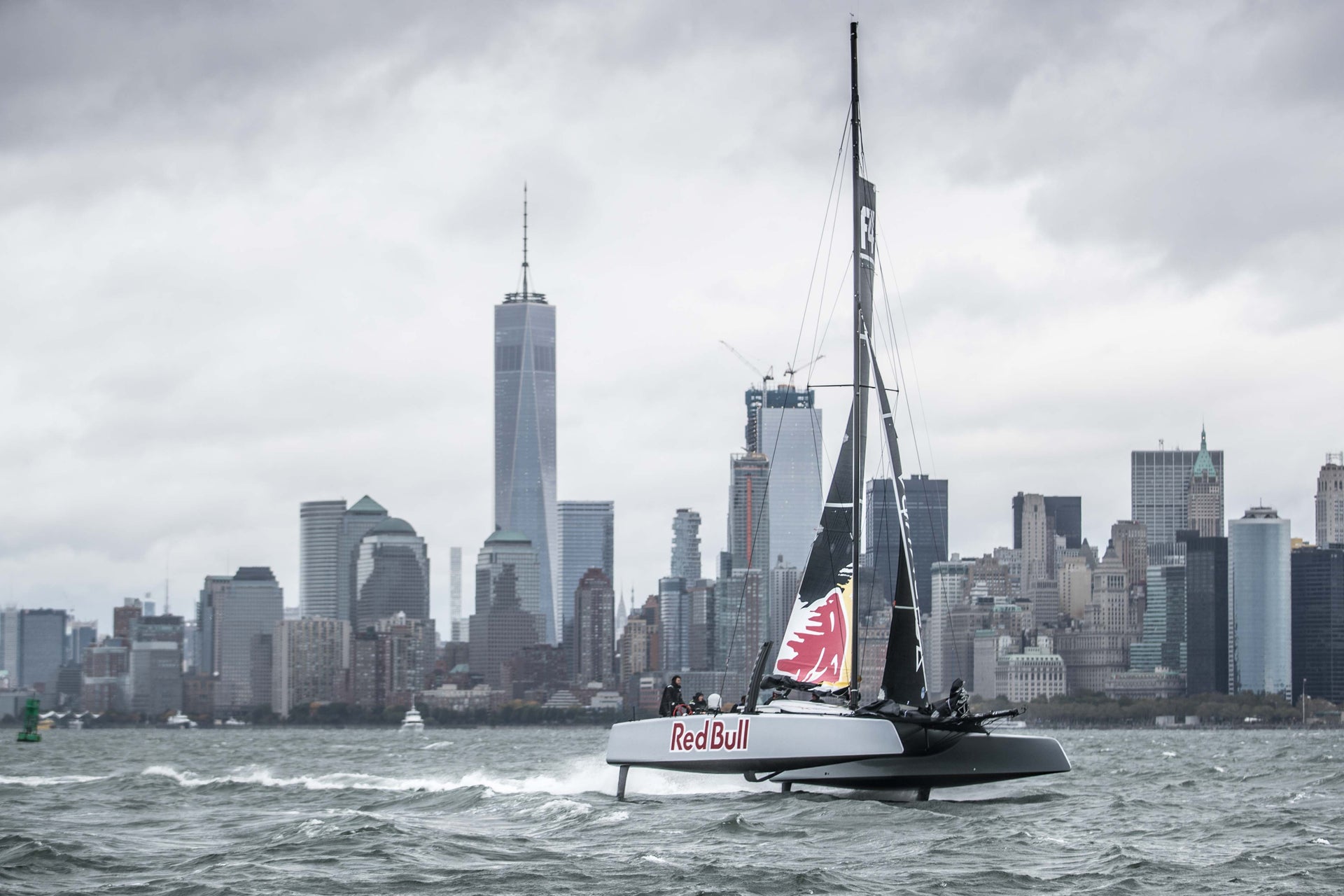
SPAN SQUARED
SPAN SQUARED
What Does It Mean When Wings Create Lift?
© RedBull G2
When a wing (like a sail or a keel or centerboard) produces lift, an accompanying drag force is generated called induced drag. This is related to pressure that is lost around the wingtip and the formation of vorticity. A wing is considered to be more efficient if it produces lift with less induced drag.
Common understanding is that induced drag is lower for higher aspect ratio wings. This is apparent by reviewing the standard equation used to calculate induced drag which contains the term aspect ratio. The problem with this equation is that it defines the value of the induced drag coefficient using the lift coefficient, which is not necessarily constant depending on how aspect ratio is changed.
The equation is useful in situations where the wing area is the same, such as these two wings. Notice that while they have the same area, they have different spans.
A useful definition is to relate aspect ratio to the span and area rather than to the span and chord. This is particularly handy
for tapered wings.
Lift coefficient and drag coefficient are non-dimensional terms that indicate how hard a wing is working regardless of speed or size. Dynamic pressure, which depends on the velocity squared, and area are divided into the lift and drag forces to define these coefficients. As area changes, the coefficients required to generate the same force will change proportionally.
Since the equation for induced drag coefficient relies on the lift coefficient, it is susceptible to changes in lift coefficient that can occur as the aspect ratio changes. For a fixed amount of lift (force, not coefficient), if the aspect ratio is increased by making the span longer while keeping the chord length the same, which adds area, the lift coefficient will be decreased due to the greater area. If the aspect ratio is increased by keeping the span the same length and decreasing the chord length, then the lift coefficient will be increased due to the smaller area. When aspect ratio and lift coefficient both change, it becomes more complicated to assess what the affect is on induced drag.
There is a simpler way to understand how induced drag is affected. By performing some appropriate substitutions in the induced drag equation and simplifying the terms, we define the induced drag force rather than the induced drag coefficient.
The result is that this equation shows that induced drag is proportional to the lift force (not coefficient) squared divided by the span squared. This means that span, not aspect ratio, is the determining factor for the efficiency of a wing. Area and chord do not appear in the final equation and do not impact induced drag. They do affect the viscous (frictional) drag, though.
Unlike the original induced drag coefficient equation, which implies that induced drag is dependent on aspect ratio (but only when the area is kept constant, meaning that as aspect ratio is changed, chord and span are modified to maintain the same area) this equation demonstrates that the induced drag force is really dependent on the amount of lift squared and the span squared. This reveals that the reduction in induced drag in the previous span comparison example is really due to the increase in span. The power of the squared term is significant because, for example, if span is doubled, the induced drag is decreased by a factor of four. Even a 10% increase in span results in nearly 20% less induced drag.
Understanding that induced drag is inversely proportional to span squared has value to improving sailing performance.
A common misconception is that a centerboard or keel with shorter chord but the same span is more efficient because it has higher aspect ratio. When we recognize that when span is the same, induced drag is therefore the same, we can properly attribute any performance differences experienced to the difference in area. These differences relate to the viscous drag instead, which is the friction of the fluid flowing over the surface and is dependent on the area, and also to changes in angle of attack (leeway and apparent wind) that occur as area is changed.
An example of the affect of span on sails that is common for many one designs is that as speed increases, raking the rig aft has been found to be beneficial to performance. This can be explained through span squared.
After a boat has reached its righting moment limit (crew fully hiked or trapezing, or practical limit of heel for a keelboat) the amount of force that the sails produce cannot be increased any more (without causing excessive and detrimental heeling). In order for the boat to go any faster, the drag needs to be reduced. The longest edge of the sail is the leech, which as the rig is raked aft becomes more vertical and maximizes span. So, with the same lift being produced over a sail with greater span, the induced drag of the rig is reduced and the boat can sail faster. In the most extreme case, comparing an upright luff to an upright leech, the induced drag would be decreased by the ratio of the luff length divided by the leech length, squared.
Another benefit of raking the rig is that the clew becomes closer to the deck, and as the trailing edge approaches being sealed, there is less pressure lost around under the boom and the sail becomes more efficient. Span-wise change in pressure differential is what causes vorticity to be shed from the trailing edge. Increasing the distance between the vorticity shed from either end, or reducing the vorticity shed yield higher effective span, hence lower induced drag.
Since drag also contributes to heeling, a lower heeling force allows the total force on the sail to be increased up to the righting moment limit, further increasing the boat’s speed.
When the rig is raked aft to maximize span by making the leech more vertical, the height of the sail is slightly lowered becoming closer to the water where the wind velocity is lessened by friction with the water surface. While this is not a problem once the boat has reached the righting-moment- limited condition where de-powering (and drag reduction) becomes necessary, it might explain why it is not always advantageous to sail with the rig raked aft in lighter wind conditions when creating more sail force could be the overriding factor.
As the rake of the rig is changed the location of the sail’s force moves with it. This changes the loading required on the rudder in order to make the boat sail straight. While this may limit mast adjustment, the potential benefit creates incentive to discover how to set up the boat to take advantage of the lower induced drag of a more raked rig.
The concept of span squared can also be used to determine the optimum rudder load, either to define the reasonable extent of mast rake or to minimize the drag of the underwater foils for a fixed mast location. The keel (or centerboard) and rudder should both contribute to the boat’s side-force to counteract the sail’s side-force. Determining the appropriate load for each can produce significant performance improvements.
While there are some interactions between the two foils, a simple approach to determine the minimum induced drag is to treat each foil as isolated and sum the drag of each. The result with the least induced drag is that the foils should contribute to side-force proportionally to the ratio of their spans squared.
It is important to consider the span as twice the physical span of the keel or centerboard because it is sealed against the bottom of the hull, which acts as a reflection plane. This is because the pressure differential across the sealed foil is maintained at the hull intersection as if there were a reflected image of the keel protruding upward. A completely immersed rudder that is sealed under the hull can also be considered to have a reflected image that doubles its physical span, but a transom hung rudder that pierces the surface of the water would only be considered to have its physical span without a reflected image. This is because the water surface can deflect due to the pressures imposed on it by the surface piercing foil. As the water surface deflects, the pressure differential at the surface is degraded and the surface piercing rudder loses the benefit of a reflected image.
The difference in effective span between an immersed rudder and a transom-hung rudder indicates that most keelboats (with immersed rudders) should be sailed with more rudder load than most dinghies (with transom-hung rudders).
An additional factor is that as rudder load is increased through deflecting the rudder, the leeway angle of the boat is decreased. Decreased leeway has the additional benefit of a higher apparent wind angle and the opportunity to produce higher sail force. This makes it is very beneficial to deflect the rudder at least to the angle that produces minimum induced drag for the whole boat and gain low induced drag, a higher apparent wind angle and larger sail force, and less leeway, all of which contribute to better pointing. It could even be useful to sail with the rudder deflected somewhat beyond the loading that minimizes induced drag. The small additional increment in induced drag for a modest increase in rudder angle could be offset by further improved pointing ability.
A boat with a gybing centerboard or adjustable flap on the keel already has the capability to reduce leeway and improve the apparent wind angle and may not benefit as much from overloading the rudder as much as a boat with a fixed centerboard or keel.
Since sailing with the appropriate rudder load can have a significant affect, particularly in one-designs where there are limited opportunities for performance improvement, it is valuable to determine what the target rudder angle should be. Assessing the issues for a specific boat requires knowing the dimensions and loads. These can be analyzed to produce specific target settings or designs (if allowed).
Here is an example of how induced drag is minimized through optimizing the load sharing of the keel and rudder.
The total amount of side-force that the keel and rudder produces is kept constant but the amount of side-force that each contributes is varied. By ignoring the affect of each component on the other (a simplification that is more valid as the distance between them is large), the induced drag of the keel and rudder can be calculated separately and added together. In this example the keel span has been chosen to be four and the rudder span to be three. The units do not matter, since we are merely looking at the proportionality of the load. Assuming 100 total units of lift, induced drag is shown for several possible load distributions. Note that minimum induced drag occurs when the load is distributed proportionally to the ratio of the span of the keel and rudder, squared (for example 64/36 = 8/6 squared, and 88/12 is close to 8/3 squared).
The example is shown two ways: with an immersed, sealed rudder that benefits from a reflected image with twice the span, and with a transom-hung, surface piercing rudder that only has an effective span equal to its length. The lower induced drag with the longer effective span rudder is dramatic. But what is important to recognize is that the optimum load sharing distribution is quite different between the rudder styles.
While the longer acting rudder can take 36% of the side-force leaving 64% for the keel, the shorter acting rudder can only take 12% of the side-force leaving 88% for the keel. That causes the lowest possible induced drag value to be 37% higher in order to produce the same 100 units of side-force. Again, the units are artificial, as the constants dynamic pressure and pi have been left out of the equation so we can just look at proportional relationships. A similar amount of drag reduction could be expected for the same style rudder that was replaced with one that had twice the span.
Within the constraints of one-design rules, that type of change is usually not allowed, but there is still the potential to achieve a load sharing that yields the lowest possible induced drag for the configuration. The increases in induced drag as the proportions are varied away from the optimums are shown and give incentive to set the boat up to achieve loads that generate the lowest possible induced drag. Also evident is that being away from the optimum is more severe for the shorter span rudder configuration than for the longer span rudder configuration.
By applying the relationship of span squared, the target loads can be determined for a specific boat. The challenge then is to achieve those loads. This is accomplished through changing the mast position, either by moving the mast step or adjusting rake in order to establish the location of the sails’ force so that the boat will sail straight with the rudder deflected to the desired angle that minimizes the induced drag of the underwater foils. As the mast is shifted aft, the rudder load required to make the boat sail straight increases, and as the mast is shifted forward, the rudder load will decrease. Finding the optimum can have a noticeable affect on performance. The goal is to efficiently use the spans of both foils.
Often, a boat has the mast too upright and hence, is not properly loading the rudder. Raking the mast back can cause the rudder load to increase, which decreases the underwater foils’ induced drag, AND increases the span of the sail by making the longer leech more upright, which causes the sail to have less induced drag also. Appreciating the power of span squared can be useful when making decisions that affect performance.
READ MORE
READ MORE
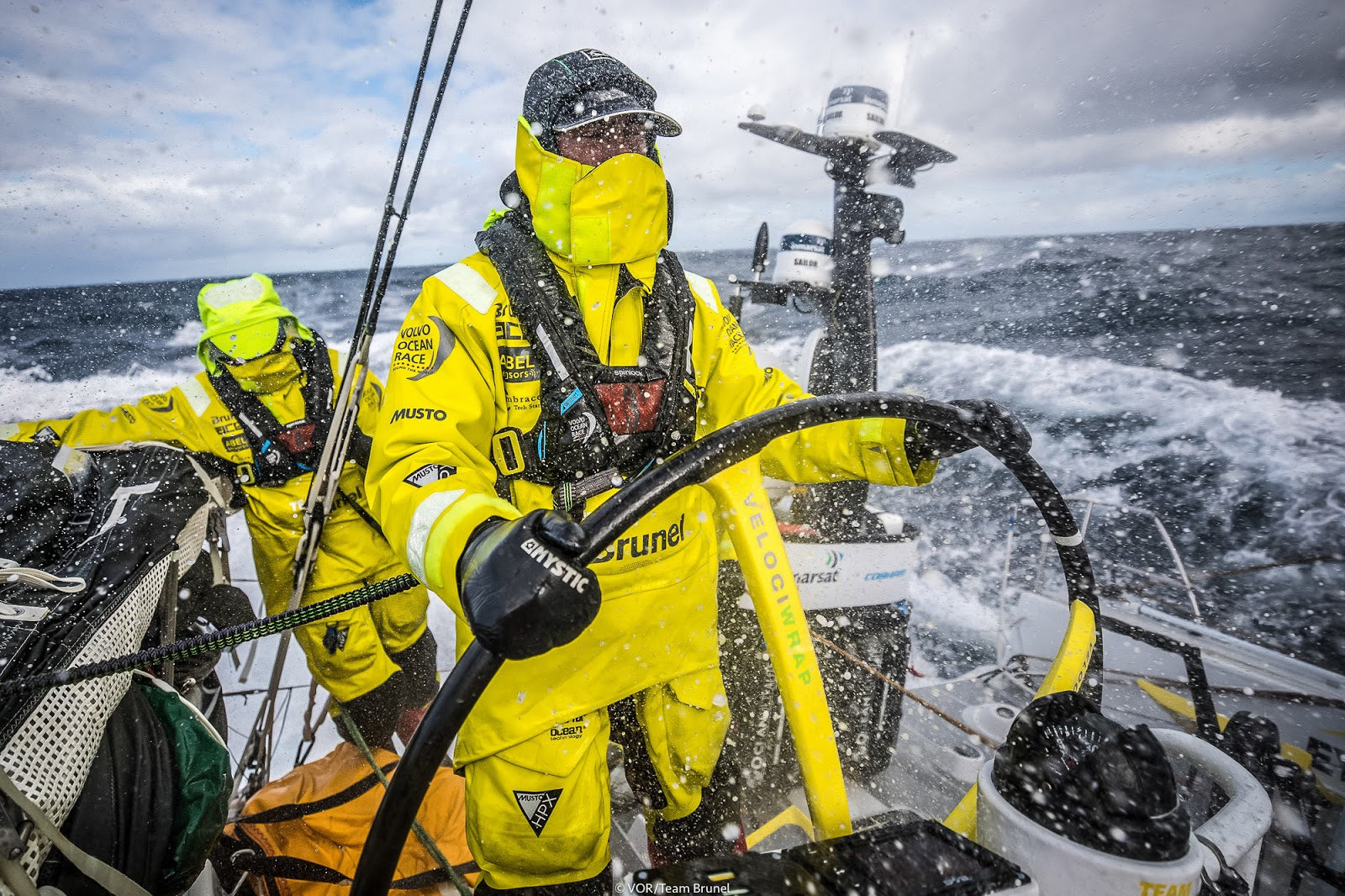
NORTH SAILS E ALBERTO BOLZAN
NORTH SAILS e ALBERTO BOLZAN
Alberto Bolzan racconta il suo rapporto con North Sails e il giro del mondo in equipaggio in una grande serata di San Valentino presso lo Yacht Club Italiano di Genova.
Il velista italiano che ha al suo attivo due partecipazioni al massimo evento velico in equipaggio attorno al mondo con i team Alvimedica e Brunel, racconterà le sue esperienze. Alberto nell’ambiente si è meritato il soprannome di “Ferrari” per la sua particolare abilità a sostenere la velocità delle barche che timona. E’ un grande amico di North Sails, che ha invelato numerose barche su cui ha partecipato alle regate.
“Ho avuto vele North Sails quando ho cominciato con l’Optimist e poi issandole ancora ho vinto due campionati europei con l’Europa – racconta – la vita di un velista si intreccia sempre con quella di questa grande veleria”.
Alberto Bolzan ha un curriculum molto dopo l’inizio con le derive è passato alle classi maggiori, dai Melges 24 e 32 (con Mascalzone Latino) ai Farr 40 (su Joe Fly e Enfant Terrible), ai TP52 (Luna Rossa e Pisco Sour) e infine ai Maxi, con il veloce Esimit Europa 2 e Rambler 88. Triestino, ha fatto della Barcolana un impegno fisso. Nella sua prima partecipazione al giro del mondo, nato come Whitbread Round The World Race e poi divenuto Volvo Ocean Race e ora Ocean Race, era unico italiano ed è stato uno degli elementi fondamentali di Alvimedica. La seconda volta è stata su Team Brunel dello skipper Bouwe Bekking, che ha chiuso al terzo posto in generale vincendo la tappa più leggendaria, quella di Capo Horn. In quella occasione ha condiviso gli impegni al timone con Peter Burling fresco vincitore della 35° Coppa America.
Il giro del mondo sarà il tema principale della regata, una regata che negli anni ha cambiato la sua essenza, e che nella prossima edizione avrà Genova come sede di tappa. Infatti la prossima edizione di The Ocean Race, partirà dal porto spagnolo di Alicante, nell’autunno del 2021 e si concluderà proprio a Genova, nel giugno del 22.
“North Sails – racconta Alberto – ha avuto un ruolo fondamentale nel corso del giro del mondo, i Volvo 65 issavano infatti tutti vele one design North Sails, costruite in 3Di e ottimizzate per la durata e l’affidabilità richiesta da una regata che impegna gli uomini ma anche i materiali ai massimi livelli di stress”. Per North Sails è stata una esperienza importante per lavorare sull’affidabilità e durata delle vele.
“Mi piace North Sails perché è in grado di proporre in tutti i mercati – conclude Bolzan - dalla crociera alla regata estrema prodotti di livello tecnologico assoluto. Sia il regatante sia il crocierista hanno a disposizione il meglio disponibile”.
L’evento è il frutto della collaborazione tra la veleria più importante del mondo e lo Yacht Club Italiano. L’accordo, una inedita partnership tecnica tra il Club e la veleria, prevede una serie di agevolazioni per i soci, un ciclo di incontri e l’assistenza tecnica durante le principali regate della prossima stagione.
READ MORE
READ MORE
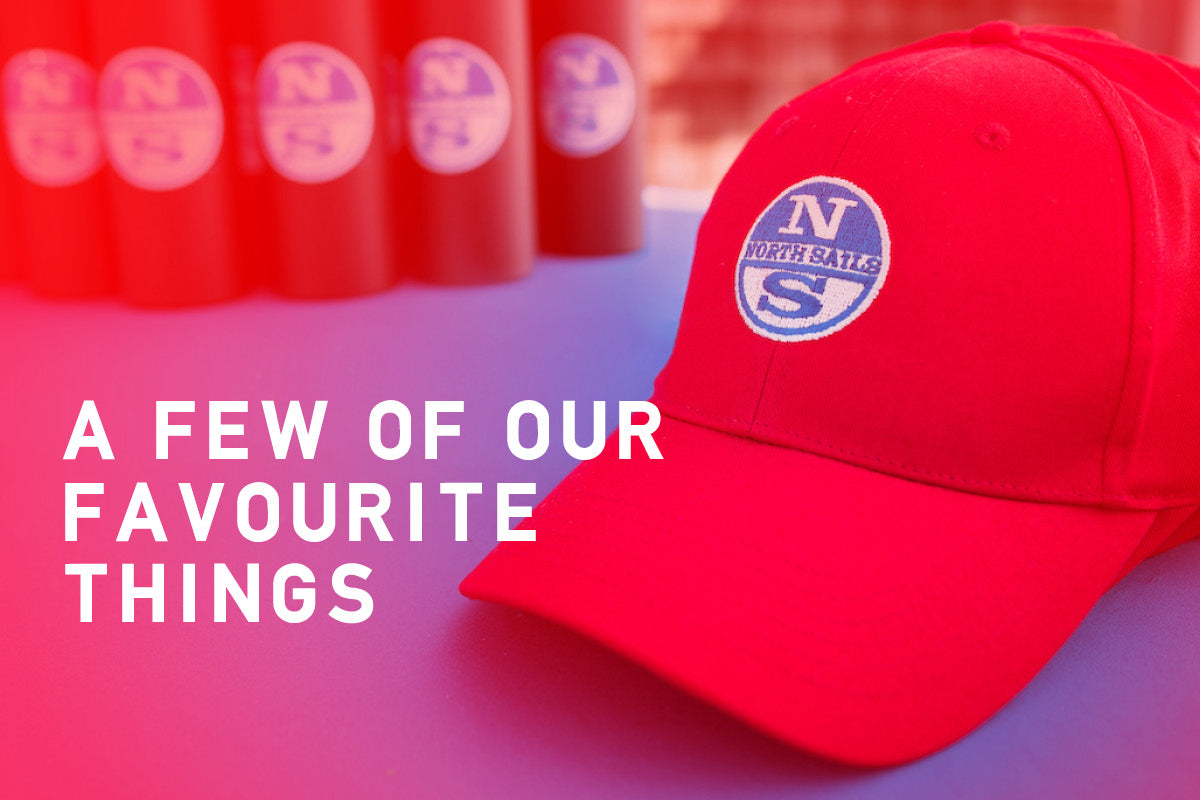
A FEW OF OUR FAVOURITE THINGS
A FEW OF OUR FAVOURITE THINGS
North Sails Fashionistas Share Their Must-Have's
We all have our favourite pieces of gear that we cannot leave the dock without. For me it's my sunnies, for others it's their foulies, and for some it's their hat. Either way, we all have those items that make our life better while out on the water so why not share them? Here's a few of our favourite things:
UV Shirt
The secret weapon to adjusting to temperatures on the water: layering. Beyond dealing with varying temperatures, UV shirts help protect you against harmful UV rays. No one enjoys a sunburn, they are literally the worst. Be smart, layer up and avoid becoming a lobster. My North Sails UV technical shirts are the best for this, especially on warmer days. Technical gear has come a long way meaning these shirts aren't hot and you can wear them on 20+ days. Even on cooler days, or in the morning, these UV shirts can help as a breathable base layer underneath a fleece.
Vest
While most people like a jacket of some sort to take on the water, I prefer to always have a vest. They are just enough weight to keep you warm yet not too hot; while also breaking the wind on those days when it's blowing. Plus the pockets are enough to stash tape, a knife and snacks. My go to vest these days has been the Super Light Vest from North Sails Collection, super easy to pack in your bag too.
Sunglasses
My sunglasses are my best friend when it comes to gear. I swear my eyes have become baby-like and can't function without sunglasses now. It's important to remember your eyes need protection as well when out on the water, not just your skin. Less strain on your eyes and no burning of your eyes are key. Investing in a good pair of polarized sunglasses (croakies too!) is never a bad idea if you spend a lot of time on the water.
Salopettes
Last but not least are salopettes. They keep you warm & dry while also protecting you from the elements. There is nothing worse than being cold while sailing (everything goes down hill when you are).
In addition to the items above, we recommend such as headlights for overnight races and a good pair of footwear to help keep you steady on deck.
READ MORE
READ MORE
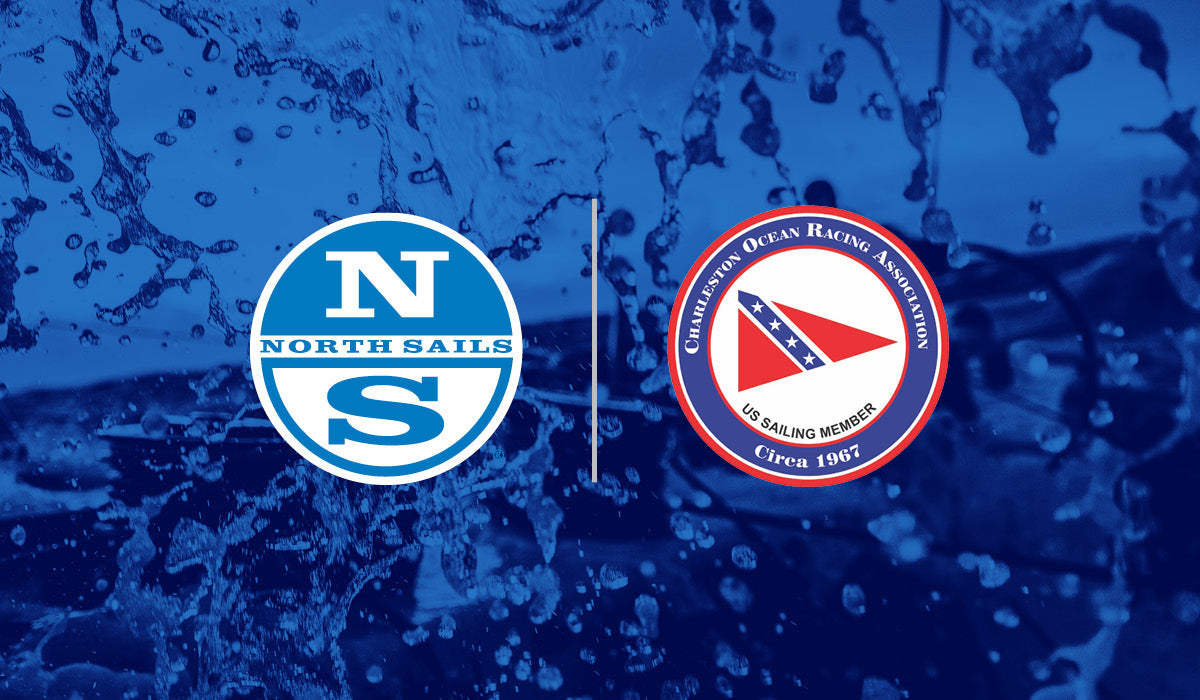
WE'LL COOK, YOU RELAX
WE'LL COOK, YOU RELAX
Dinner Is On Us At CORA's March Meeting
This has been postponed until April 16th. More information to follow.
READ MORE
READ MORE

INTRODUCING THE J-7 ALL-PURPOSE STAR CLASS JIB
Introducing The J-7 All-Purpose Star Class Jib
North Sails Expands Sail Inventory for Those Looking for Maximum Power
North Sails, the world leader in One Design, has added a new all-purpose jib to their inventory for the Star Class. The new sail is available now and can be delivered before the Bacardi Cup, a staple to the Star Class winter sailing schedule.
New for 2020, the J-7 is a powerful all-purpose jib for teams looking for maximum performance; this sail particularly excels in chop. The first J-7 was built over the summer and has been extensively tested, tuned and proven to deliver results throughout the development phase. A progressed design of the popular J-6 jib, this new sail utilizes a full radial panel layout for low stretch and maximum durability. North class sail designers added an entry angle down low for boats with stiffer masts and forestays.
“North Star sails enjoyed great success in 2019 and the J-7 is our first new class sail of 2020,” remarks North Sails class leader Eric Doyle. “The design brief for this was to develop a product which gives the boat plenty of power, while still being easy to trim and steer to. The J-7 is targeted towards lighter air, bumpy conditions but excels across a wide wind range. Our biggest takeaway from the R&D trial is the jib is durable and very fast throughout the range, traits our customers will quickly notice.”
Learn more about North Sails on our Star Class page.
READ MORE
READ MORE
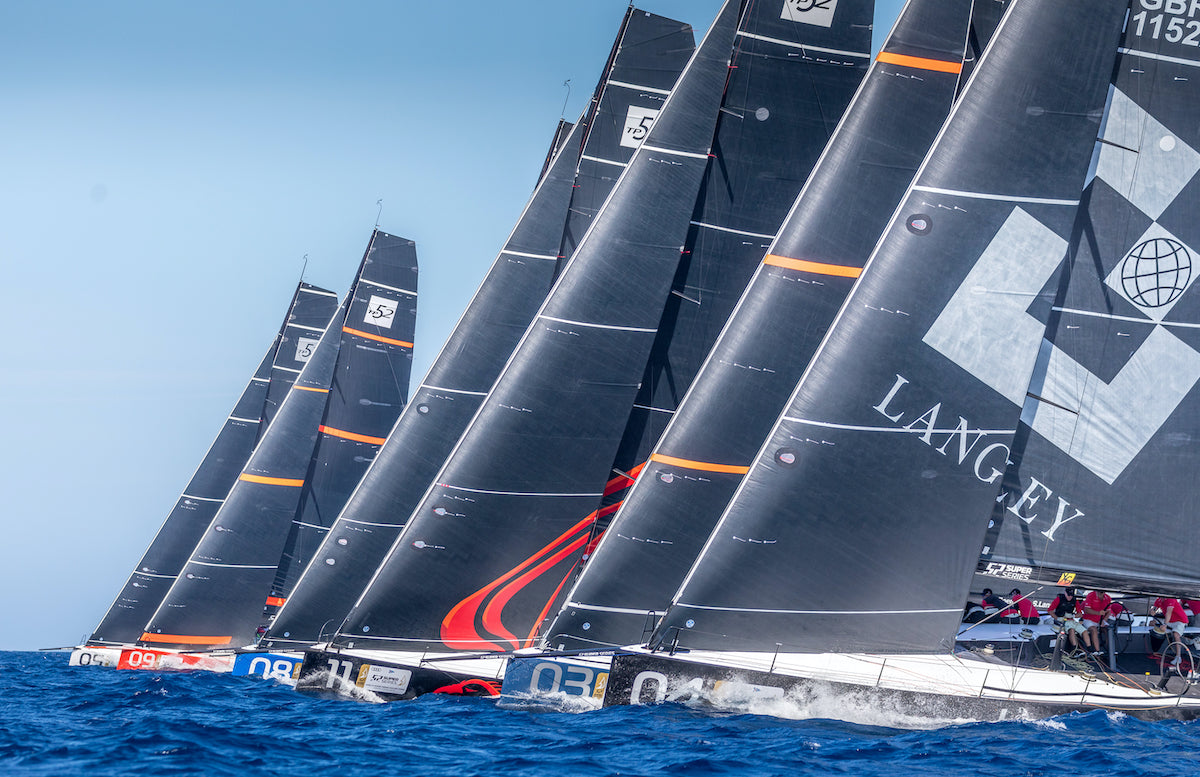
NORTH SAILS RENEWS PARTNERSHIP WITH 52 SUPER SERIES
NORTH SAILS RENEWS PARTNERSHIP WITH 52 SUPER SERIES
World’s Leading Sailmaker Continue their Association with the High-performance, One Design Monohull Circuit
📸Nico Martinez / Rolex
Following a successful partnership over the last two seasons, North Sails has today announced we will continue as an ‘Official Technical Partner’ of the 52 Super Series sponsored by Rolex. The 2020 circuit, now in its ninth season, will again play host to a stellar list of sailors and boats, with 12 boats from eight countries all vying to be number one. Year after year, the competition gets more compelling, with teams forced to out-think and out-sail each other in the high performance, one design TP52s. As an Official Technical Partner, North Sails will bring their world-leading expertise, design and sail technology, as well as sailor support to the fleet, with ten boats choosing cutting edge North Sails 3Di.
The TP52 has become the de-facto top monohull inshore race class in the world, appealing to the very top level professional sailors, discerning owners and teams. The all-carbon fiber boats with powerful sail areas and deep slender keels remain very close in performance. The current Champions Azzurra, racing with a North Sails 3Di inventory, has won the Championship four times (2012, 2015, 2017, and 2019), and there is only one other team who has taken the top spot.
With the America’s Cup just a year away, the ultra-competitive TP52 class continues to attract the best in the business. As North Sails TP52 Design Expert, Mickey Ickert commented: “The pace of this class is relentless – every year we are being pushed more and more out there on the race track, and the differences between boats are getting smaller, so we have to look for any marginal gains. We work very closely with all our North Sails clients in the fleet to help eke out every possible inch of boat speed. Each of our teams has a dedicated North designer who works with their sail coordinator to further refine the baseline inventory, and they are also on hand for feedback to make sure we are constantly moving forward.”
Commenting on the partnership, Paul Westlake, North Sails Executive Vice President, and Mainsail Trimmer for Bronenosec Gazprom concluded: “Every November we get the sail designers who have worked with the various teams together for a full debrief on what we have learned from the previous season and what is next area of development for the coming season. The partnership we have with the Super Series helps us to grow the support we can give clients and to enable North Sails to help them make more gains in the future. We have the utmost confidence in our sail design tools and 3Di composite technologies to provide our clients fast, reliable, cutting edge sail wardrobes. Still, we are always exploring the limits for ways to improve as we progress along the highly demanding season consisting of 60 races with all to count!”
Commenting on the partnership, Agustin Zulueta, CEO of the 52 Super Series said “We are delighted to extend our partnership with North Sails as a Technical Partner to the 52 SUPER SERIES. As a high-performance class, we are driven to push the boundaries of what is possible in our sport, and in North Sails, we have a partner whose mission is naturally aligned with ours. We look forward to continuing our successful collaboration with the expert sailmakers for a further two years.”
The 52 SUPER SERIES covers six trophies from March to September 2020:
Cape Town 52 SUPER SERIES Sailing Week: March 2nd – 6th, Cape Town, South Africa
ROLEX TP52 World Championship Cape Town, March 31st – April 4th, Cape Town, South Africa
Royal Cup 52 SUPER SERIES, Scarlino, Italy, May 12th – 16th, Scarlino, Italy
Audi 52 SUPER SERIES Porto Cervo & TP52 20th Anniversary Invitational, June 17th – 21st Porto Cervo, Italy
52 SUPER SERIES Valencia Sailing Week, July 18th – 22nd, Valencia, Spain
Puerto Portals 52 SUPER SERIES Sailing Week, September 15th – 19th, Mallorca, Spain
📸Nico Martinez / Rolex
READ MORE
READ MORE
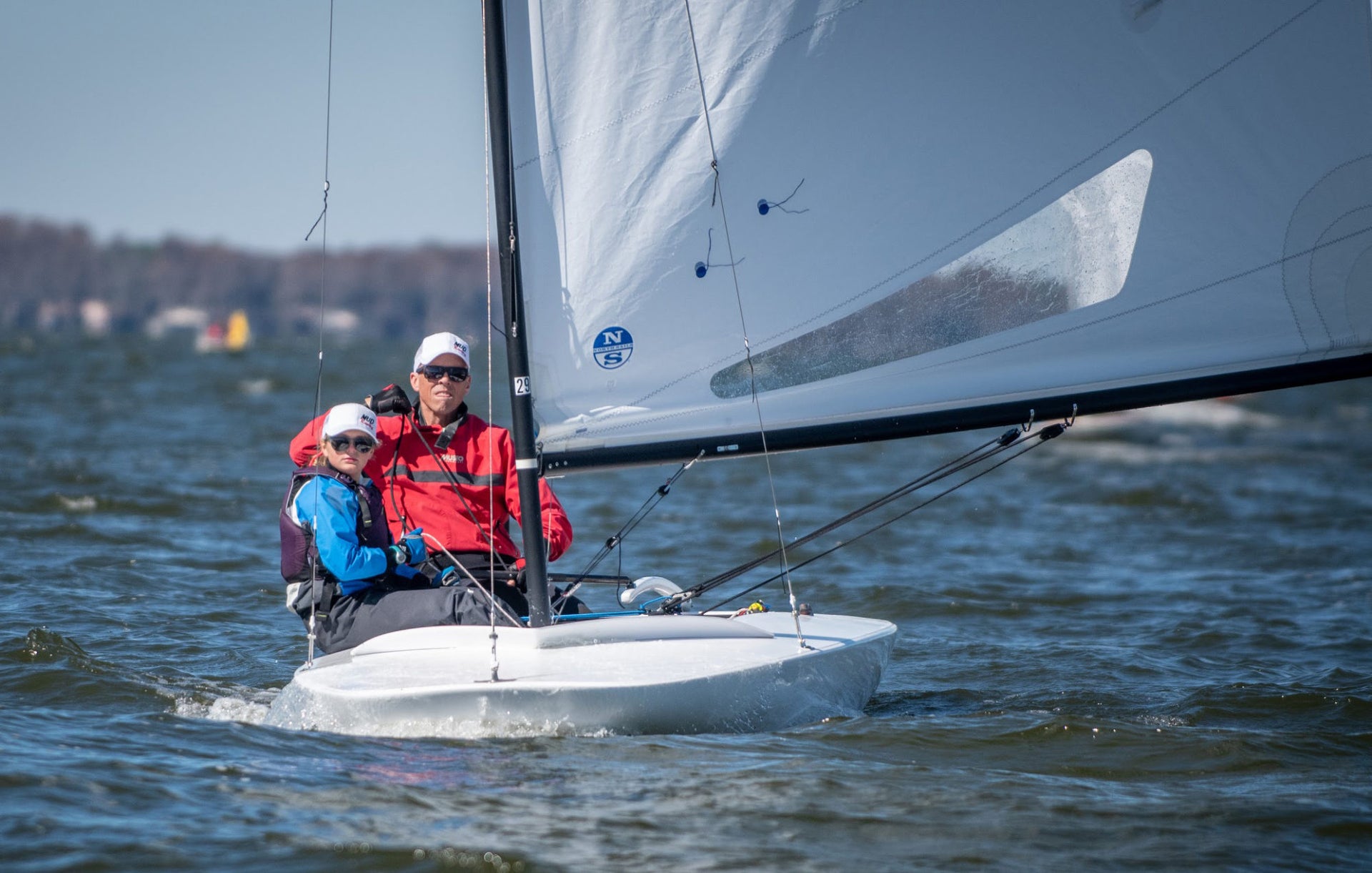
MC SCOW - FAMILY, FRIENDS & COMPETITION
MC SCOW – FAMILY, FRIENDS & COMPETITION
Interview with Chris Andert
📸 Regatta Girl Photography
We caught up with longtime North Sails Zenda customer Chris Andert after winning the second event of the MC Triple Crown Series in Eustis, FL.
You have been sailing all of your life. What sparked your interest in the sport?
Chris: Family, friends, and competition. They’re so intertwined in the sport, and, to me, it’s what makes sailing great! I’ve built lifelong friendships from sailing – some going back to my days in youth sailing, where now our kids are racing against each other. You meet new people at every regatta, you get to know someone whom you’ve only known by name, and you share your stories and experiences as to sailing means to them. Then you go out and compete against each other, trying hard to beat your longtime or newfound friends while on the water. Only to come back to shore where you help each other de-rigand share stories of tactics that led to successes or “almosts.” Sailing is a great fabric and community that every time I leave a regatta I’m longing for the next event.
Sailing scows must be your passion as you have raced them all at one time or another. Now you are sailing the Melges MC. What drew you to scow sailing?
Chris: It’s the character of each of the classes that for me sets scow sailing apart from other boats. Each Scow class is unique, from how you sail the boat to the fleet itself, and each provides its own excitement and challenges. I’ve been fortunate to participate on some great teams racing on As, Es, and Cs, but the MC has taken me a little more time to figure out than I originally thought. There’s such a balance between boat speed and tactics that you can’t emphasize just one. When racing C Scows, I always felt that if I was off on my tactics I could just make up for it with boat speed. The MC doesn’t let you do that – to compete with the top of this fleet you have to be good at both.
I like to think that my time sailing MCs has made me a better sailor, and forced me to think through my racing game plan and execution a little more.
You just won a major MC event in Eustis, Florida with over 40 boats in attendance, some of the best MC sailors in the country. What was the secret to your success?
Chris: I’ve had moments before in the MC – winning races at Nationals and Midwinters – but I’ve never been able to put together a series until this regatta. My goal for this event was to stick to my pre-race game plan and to not take big chances or get stubborn when something goes wrong. My last MC regatta in November, I blew a chance at a top-five standing over one race; a big shift came through that I didn’t want to acknowledge as it meant giving up boats. I hung on so long that I finished in the back of the fleet. The next race I went out and won, but I had already lost that regatta because of my poor reaction in the race prior.
There were so many good sailors at this regatta that I knew I couldn’t take those chances. I set a goal for myself to “sail for 5th,” start on the favored side but don’t try and win the start, watch the breeze come down the lake and position the boat to the course but stick with the fleet while doing so. These were the sorts of thoughts that were in my head as part of my plan for this regatta. I was focused on sailing well, keeping my boat moving, and staying within myself from a tactics perspective. This only works when you can trust your boat speed, and I’ve really come to appreciate the range that the North Sails Z-Max provides across conditions. This regatta had changing conditions each day, and I was confident that both the boat and sail would respond without significant tuning changes. I did a slight sidestay adjustment as the wind came up, but otherwise, I was able to adjust power effectively through vang, outhaul, cunningham, and traveler in that order.
North Sails Z-Max 📸 Regatta Girl Photography
Sailing and Family can go hand in hand. I know you love having your family involved with your sailing. What plans and goals do you have with your family’s sailing?
Chris: My two daughters Anna and Maija really caught the racing bug in 2019. I’ve officially become an Opti Dad! Both Liz and I love being on the water and around sailing, and its just as much fun for us to see them fall in love with the sport too. We’re attending several winter and spring events with them in their own boats, but I’ll definitely keep using them as crew on the MC. Maija got to race in this regatta, Anna is up next!
It’s so much fun to have them crew for me while I’m racing. But as I see them continue to come up the curve in their own sailing skill, I know it won’t be long until someday I’m crewing for them – I can’t wait for that to happen!
Both Liz and I love being on the water and around sailing, and its just as much fun for us to see them fall in love with the sport too.
As you go through this spring and summer, there’s no doubt you’re thinking of the 50th MC National Championship in Lake Geneva, Wisconsin. Do you plan to attend?
Chris: I really hope to be able to make it to the 50th! After racing at this regatta, I spent time talking with Brett Hatton and Scott Slocum, two past class Champions that I hadn’t really met prior. It was great to get to know them a bit, hear about their MC experiences, what they did to go fast, and then being asked what I was doing. It’s a great class with a great history, so I want to be there, but for now we’re just planning the next Opti event, and hoping that it doesn’t conflict with MC Midwinters.
📸 Regatta Girl Photography
READ MORE
READ MORE
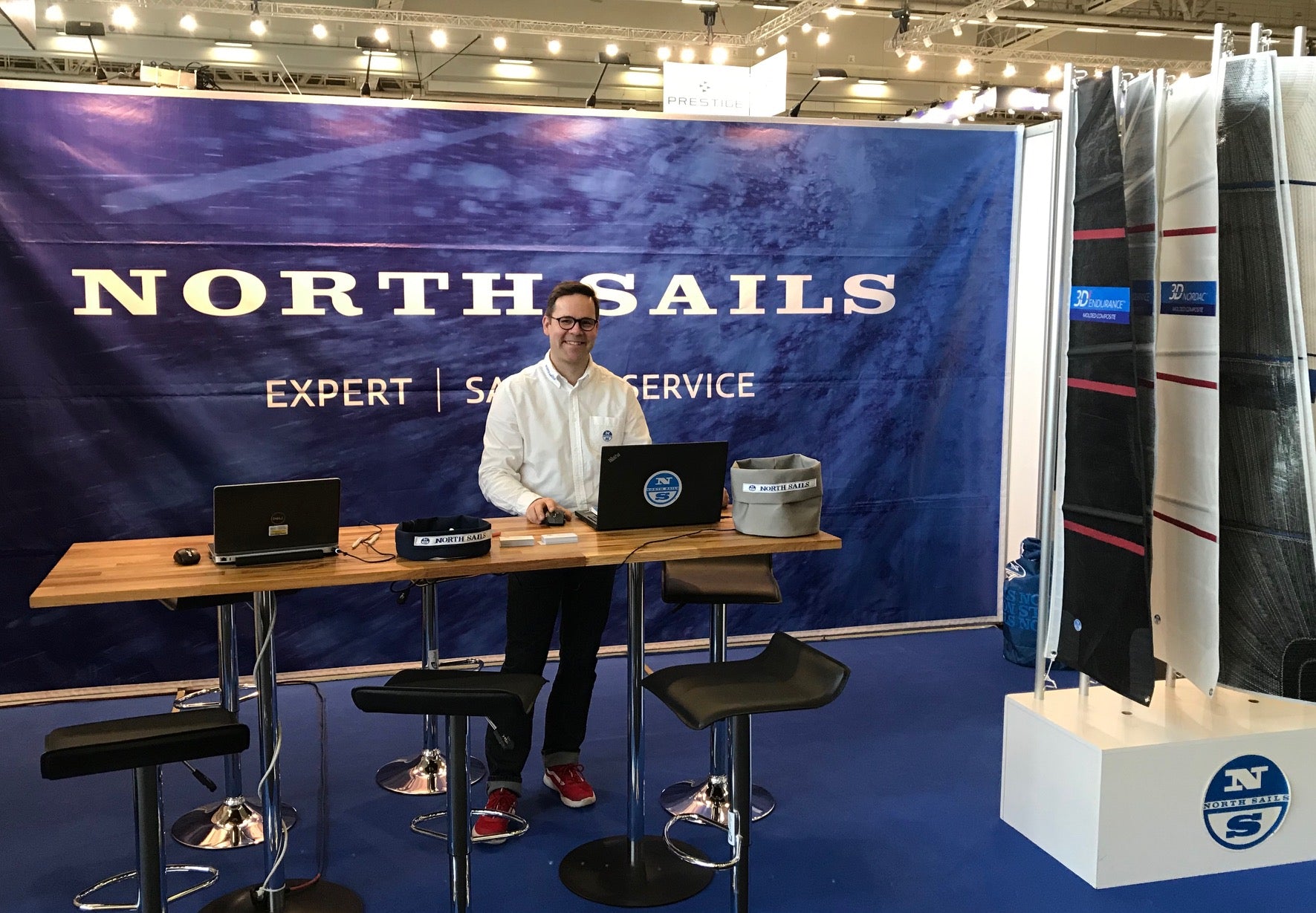
NORTH SAILS VENE 2020 BÅT MESSUILLA - LAUTTASAAREN TOIMIPISTE KIINNI
Purjeneulomo Ninirannan osasto löytyy messukeskuksesta, purjevenehallista, paikalta 7m140. Turon päivystäessä messuilla, Lauttasaaren toimipiste on kiinni 7.-16.2.
Tervetuloa messuille!
READ MORE
READ MORE
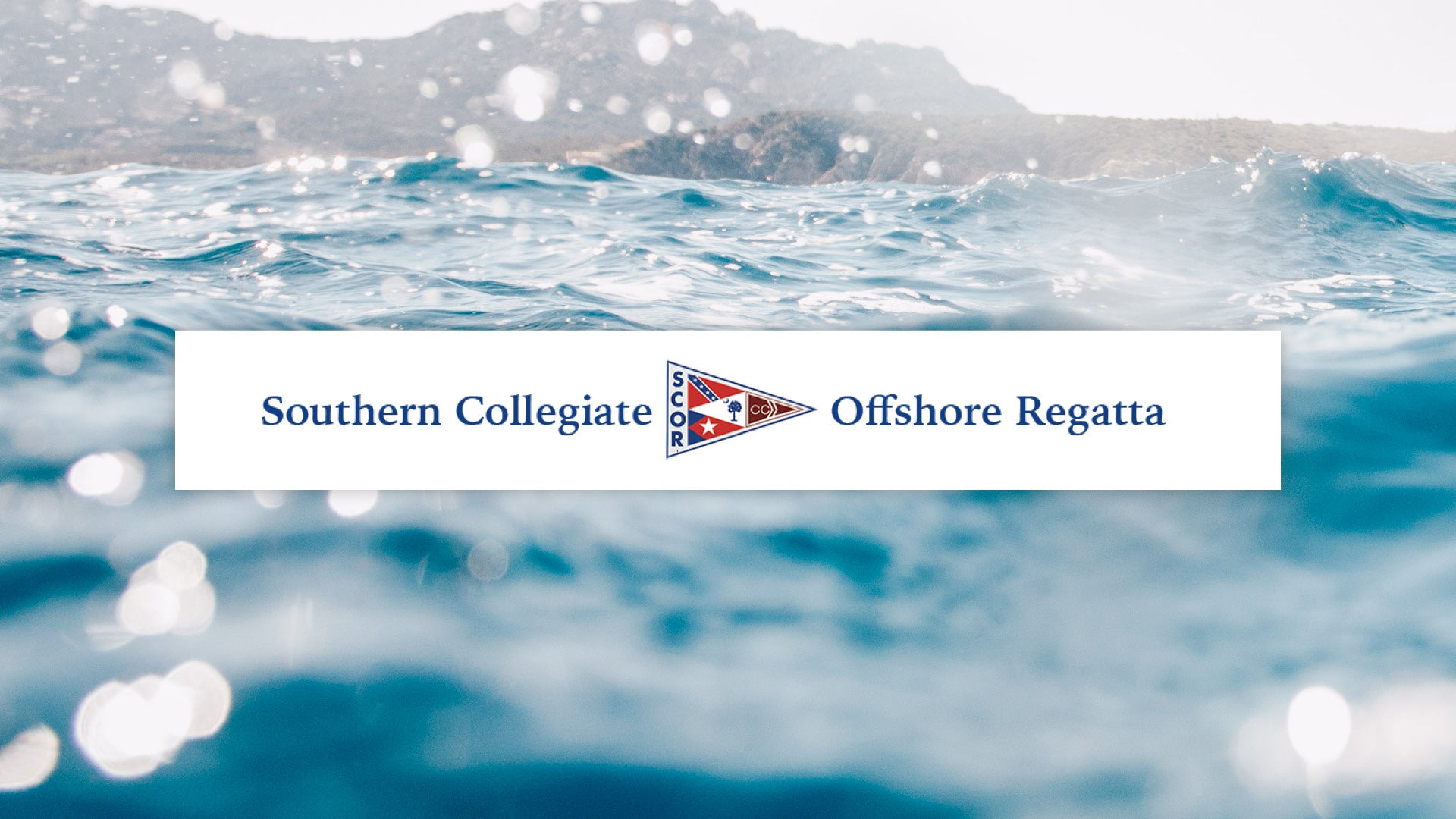
ARE YOU READY TO SCOR?
ARE YOU READY TO SCOR?
North Sails Charleston is Here to Help You Prepare
Onboard since its inception, North Sails Charleston is ready for another year of the 2020 Southern Collegiate Offshore Regatta at Carolina Yacht Club. The North Sails team in Charleston will be on hand to lend support to all teams in preparation for the the upcoming SCOR Regatta.
The ever popular regatta has 13 boats and owners participating with crew from 13 different schools across the country. Taking place February 14 – 16, all teams will have the support of local experts John Bowden, Tripp Fellabom and Ervin Grove as they prepare. Our team will be on the water coaching on Friday the 14th from 1-4pm. Teams are encouraged to come out, meet their skippers and get out on the water to find their groove. As event founder Tripp Fellabom shares, "Chemistry on the boat is incredibly important." The team looks forward to seeing everyone on the water.
READ MORE
READ MORE
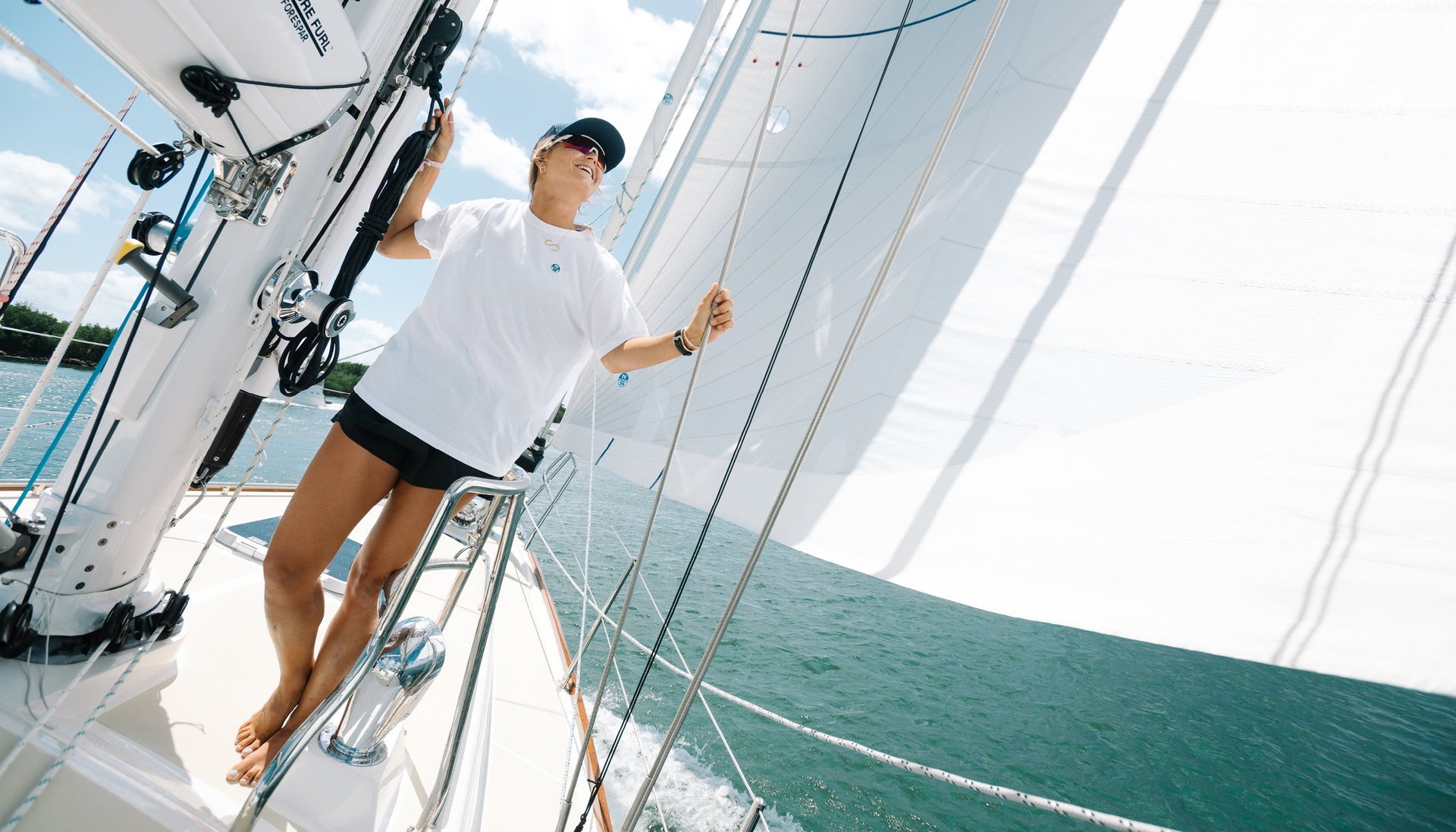
SAIL PLAN DIMENSIONS
Determine the Correct Rig Dimensions for Your Sails
When it comes to optimizing your boat's performance, one of the key factors is understanding your sail plan and how its dimensions affect the overall handling and efficiency of your vessel. The basic rig dimensions for a yacht are generally understood. However, there are some differences in how sailors describe these dimensions. At North Sails, we want to make sure everyone is on the same page, which is why we've put together this guide on how we define sail plan dimensions and how to measure them accurately. Whether you're a seasoned sailor or just getting started, knowing how to properly measure your sail plan is crucial for making informed decisions about sail choice and tuning. Let’s dive in!
I – Height of Foretriangle
Elevation of Forestay, measured down to elevation of main shrouds at sheer line.
J – Base of Foretriangle
Horizontal distance measured from front face of mast at deck to position of headstay at sheer line.
P – Mainsail Hoist
Elevation of upper mast band or maximum main halyard position, measured down to lower mast band or top of boom.
E- Mainsail Foot
Horizontal distance measured from aft face of mast at top of boom to boom band or maximum outhaul position.
Is – Height of Inner Foretriangle
Elevation of Forestay, measured down to elevation of main shrouds at sheer line.
Js – Base of Inner Foretriangle
Horizontal distance measured from front face of mast at deck to position of inner headstay at sheer line.
Py – Mizzen Mainsail Hoist
Elevation of upper mast band or maximum main halyard position, measured down to lower mast band or top of boom.
Ey – Mizzen Mainsail Foot
Horizontal distance measured from aft face of mizzen mast at top of boom to boom band or maximum outhaul position.
ISP – Elevation of Spinnaker Halyard
Measured down to elevation of main shrouds at sheer line.
SPL – Spinnaker Pole Length
Distance from the forward end of the mast to the point where the spinnaker pole attaches to the sail or to the pole’s furthest extension.
STL – Spinnaker Tack Length
Horizontal distance measured from front face of mast at deck, forward and horizontally to position of spinnaker tack attachment point.
READ MORE
READ MORE
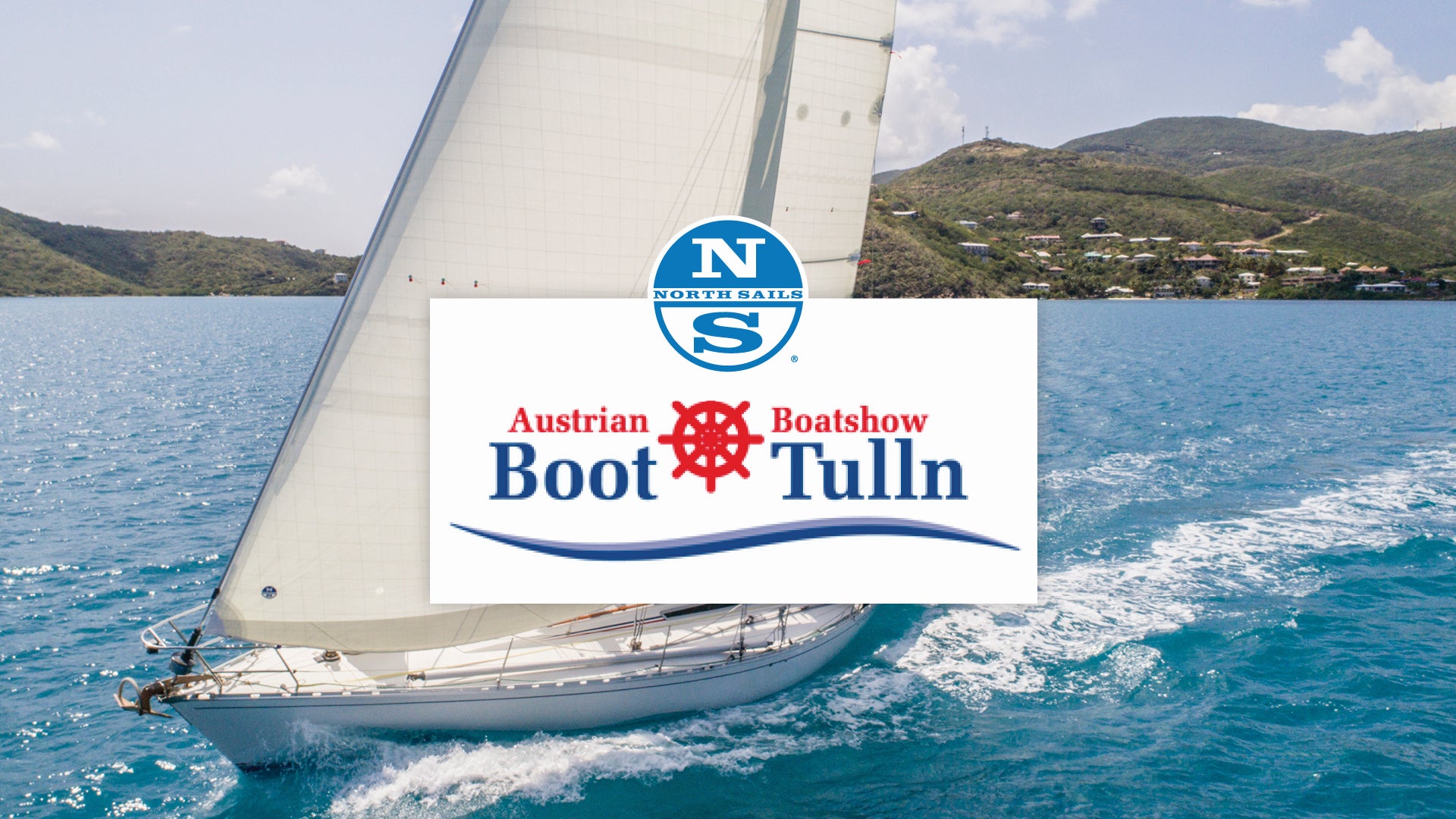
BOOT TULLN 2020
3Di NORDAC AUF DER BOOT TULLN
Das revolutionäre Fahrtensegel von North Sails
Das 3Di Polyester / Fahrtensegel von North Sails ist nun 3 Jahre auf dem Markt. Ziehen Sie gemeinsam mit uns Bilanz. Wir stellen das Fahrtensegel einer 24-ft-Yacht vor, welches zwei starke Segelsaisonen hinter sich hat. Überzeugen Sie sich selbst von der Qualität und Langlebigkeit dieses nahtlosen und dreidimensionalen Segels. Für den ambitionierte Fahrtensegler zeigen wir auf der ausgestellten Lago 26 Großsegel und Fock in unserem anspruchsvollen Xi-Tourenlaminat. Wie fit sind Sie im Segeltrimm? Testen Sie sich selbst am North U. Trimmsimulator. Stellen Sie am Bildschirm bei verschiedenen Windbedingungen mittels Trimmmöglichkeiten, Großsegel und Fock möglichst optimal ein und gewinnen Sie bei unserem Trimm-Challenge. Ihre vergünstigte Ermäßigungskarte finden Sie hier. Nutzen Sie die Möglichkeit und vereinbaren noch heute einen persönliches Beratungstermin. Rufen Sie uns an oder senden Sie uns ein E-Mail. Wir freuen uns auf Sie - am North Sails Austria Messestand in Halle 10 / Stand 1022, 5. - 8. März. Ihr Messeteam Andrea Seidl, Hans Spitzauer und Ralph Koper.
READ MORE
READ MORE

CHICAGO SEMINAR SERIES
CHICAGO SEMINAR SERIES
Enhance Your Racing Skills
Join North Sails experts to hone your racing skills for the upcoming season with North Sails Chicago seminar series. In coordination with Columbia Yacht Club and Chicago Area Sail Racing Association, this three part series will help you prepare for racing both inshore and offshore. All seminars are free from 7-9pm however registration is required ahead of time. To register please email the Chicago loft.
February 12th | North Sails Tactics on the Race Course
Positioning yourselves to win. North Sails expert Allan Terhune has won eleven North American Championships (in the Lightning, Flying Scot and Thistle Classes) and was crowned the 2013 J/22 World Champion. He will walk you through how to call tactics while out on the water.
March 25th | North Sails Distance Race Strategies ** POSTPONED TO MAY 8th **
Perry Lewis is a 40-year veteran of North Sails Chicago and local area expert. His race trophies include a dozen national and North American championships, and another dozen overall Mackinac race wins. Perry will be talking about how he goes about preparing his strategy for distance racing.
April 15th | North Sails Offshore One Design Racing
From racing to cruising, sail testing to helping his clients, Jack Orr is experienced in both inshore and offshore sailing. He has been part of the North Sails team since 1988. In addition, his years of experience in One Design with classes such as J/88, J/109 and J/111 allow him to share his real life experience to help educate sailors. Jack will be talking about offshore one design racing strategies + tips.
READ MORE
READ MORE
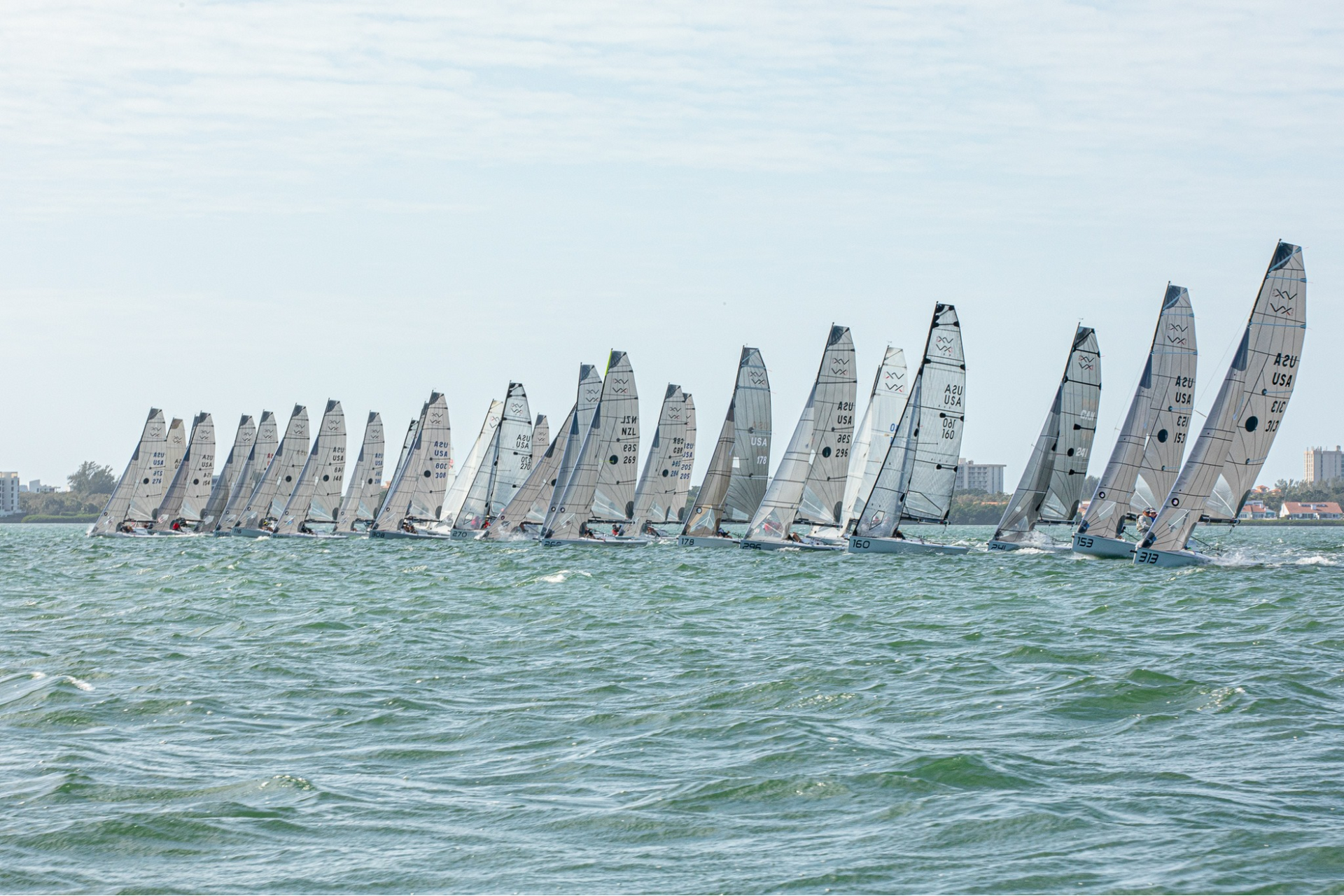
THE NUMBERS AT THE VX ONE MIDWINTERS
THE NUMBERS AT THE VX ONE MIDWINTERS
On-the-Water Observations
Heel angles off the starting line 📸 Sarah Wilkinson
The VX One is a rewarding boat because it is easy to set up, straightforward to sail, and attracts a uniquely fun group of sailors. With simplicity, however, comes the need to absolutely master each possible variable in order to get an edge on the fleet. During the Midwinters in Sarasota last month, VX One North American champion and North Sails sail designer Madeline Gill spent time on and off the water observing the setups of other teams and listening to what they had to say about it. Here are her thoughts:
Looking around the course, it was clear to me that boat setup was anything but uniform. Easiest to note were some of the basic details, like sail trim or leeward cap shroud tension (slack.) But, some of my other observations prompted me to do some more in-depth research after the racing was over. My major hypotheses were:
When it comes to using ‘relatives’ to compare performance, heel angle is a better indicator of net gains or losses than pointing angle is.
In most raceable conditions, getting the main as flat as you can is key to both getting off the start line ahead and extending your lead throughout the race.
Relative Performance
As the middle crewmember on a team with the driver trimming the main, one of my primary responsibilities upwind was to gather data. Keeping my head out of the boat and feeding constructive information to the team exercised my brain as much as hoisting, trimming, and dousing the spinnaker exercised my body.
As I have always been taught, I would relay information about our boatspeed and pointing angle relative to boats across the course. If the combination wasn’t a clear net gain or loss scenario, I would include my best guess with that regard. For example, if we were pointing a little bit lower, but going a lot faster, I would say, “lower, faster, net gain to us.”
Enter MONKEY WRENCH center stage.
I kept finding myself in situations where my conventional system would lead me astray. There would be a boat near us that we were pointing higher than and going the same speed as. This is a clear net-gain-to-us, no-need-to-even-mention-it situation, right? Not so fast. Next time I checked in, we would still be pointing higher and going a similar speed to them, but they had climbed off our windward hip, building gauge to windward and clearly having gained on us. The most glaring difference was that we were maintaining a few degrees more leeward heel than they were.
My realization at that point was that establishing and maintaining attached flow over the keel and rudder is majorly important. The shorter the cord length of a foil is, the more significant impact one unit of detached flow has. The angle of heel, and its subsequent hydrodynamic impact, is vital factor in VMG performance. As is always true, keeping the boat flat minimizes leeway, allows boatspeed to increase, and leads to better pointing angles. But the quantity of that impact is amplified in the VX One, thus my conclusion that, in conjunction with boatspeed, relative heel angle is a more valuable determinant in overall performance than relative pointing angle is.
Flat Sails
In general, we spend so much time talking about how to get the right shape in the right place in our sails, but when it comes to removing the shape, we sometimes forget that there is the same discussion to be had. Tighten the rig, put all of the sail controls on, and pull the mainsheet like your potential world’s strongest person sponsor is watching. Do you see overbend wrinkles extending from the mast toward the clew? Great. But don’t stop the conversation there.
Achieving overbend wrinkles in the main is a good indicator that you are taking power out of the sail and reducing aerodynamic drag on your boat.
Achieving overbend wrinkles in the main is a good indicator that you are taking power out of the sail and reducing aerodynamic drag on your boat. If you are still unable to maintain a flat boat, tighten the cap shrouds more, make sure the checks aren’t keeping the bottom of the main from getting flat enough, and put more tension on the vang. Depowering the bottom of your main is a good starting point, but if you are struggling with too much leeward heel, you should be trying to spread that flatness up the sail where the same amount of power has greater heel-inducing ability.
The Evidence
As it turns out, the event photos hold some nice examples that lend credence to my hypotheses.
First row
Middle row
Back row
The photo at the top of this article is a particularly good illustration of heel angles. I went through and measured the heel angle of nearly every boat on the line and grouped them by approximate row location. Sure enough, our Midwinter Champions in 269 are not only in the front row and sailing in clear air, but are notably flatter (≥2°) than every other boat in a similar position. In other words, Hayden and Mike were sailing their boat with 10%-15% less leeward heel than everyone else in the front row.
Overbend Wrinkles 📸 Sarah Wilkinson
Next, I hunted for upwind images of some top teams (isolating variables and choosing only teams using the same sails, of course.) The red triangles are where the overbend wrinkles on each main are dominating the shape landscape. The overall coverage is 30% of the area on 269 (extending 61% up the luff and 68% down the foot,) 20% of the area on 171 (extending 50% up the luff and 55% down the foot,) and 10% of the area on 276 (extending 20% up the luff and 67% down the foot.)
By extracting this data from the photos, we can see that the event leaders were sailing with a flatter boat and flatter sails than most.
By extracting this data from the photos, we can see that the event leaders were sailing with a flatter boat and flatter sails than most. And although each photo captures but a fleeting moment in time, I think it is safe to say these observations are more likely to be reflective of each team’s typical setup than not. Next time you’re setting up to go for a rip on your VX One, try focusing on (1) achieving as flat a heel angle as you can consistently sustain and (2) growing and shifting the flatness in your sails.
READ MORE
READ MORE
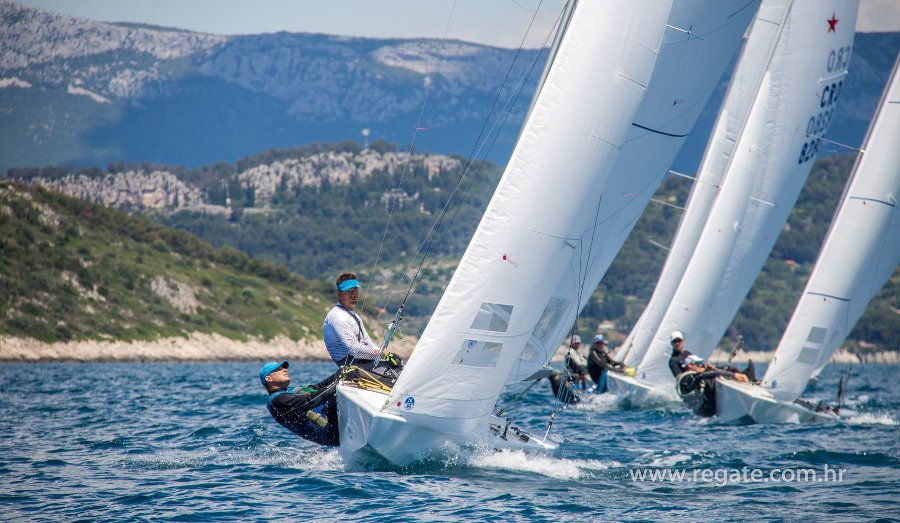
SPLITU EURO 2021. KLASE ZVIJEZDA
Splitu Euro 2021. klase Zvijezda
Dalmatinska flota će u suradnji s Jedriličarskim klubom Mornar biti domaćini Europskom prvenstvu klase Zvijezda u svibnju 2021.!
Da ne bi bilo zabune, s obzirom na ustroj klase Zvijezda (Star, Stella) koji je malo drugačiji od onog kod svih ostalih klasa, kandidaturu za bilo koju regatu ili okupljanje može istaknuti jedino "flota", a ne jedriličarski klub. Zato je u uvodu istaknuta Dalmatinska flota kao nositelj ovog organizacijskog pothvata.
Iznad "flote" kao veća instanca nalaze se distrikti kojih ukupno ima 21. Način kako su formirani distrikti nastoji povezati određena geografska područja u cjeline koje logički idu jedna uz druga. To često ne prati uobičajene obrasce na koje se povezivaju određene države u nekim drugim asocijacijama, pa se kod nekih većih država pojedini dijelovi mogu pronaći u različitim distriktima. Kako točno izgledaju distrikti možete pronaći na ovom linku.
Hrvatski jedriličari u klasi Zvijezda sudjeluju u aktivnostima kao članovi 17. distrikta zajedno s jedriličarima iz Austrije, Bjelorusije, Češke, Gruzije, južne Njemačke, Mađarske, Slovačke, Slovenije, središnje Rusije i Ukrajine.
Unutar 17. distrikta djeluje 26 različitih flota, a među njima su dvije naše. Po podacima koji se mogu pronaći na službenim stranicama klase, Dalmatinska flota je nešto ranije počela s organiziranim djelovanjem. 1952. godina je zabilježena kao početna godina u radu, dok je Kvarnerskoj floti zapisana 1959. kao inicijalna.
Do Domovinskog rata u Zvijezdama se dosta jedrilo, ali krajem 20. stoljeća uslijedila je faza kad je ova klasa ušla u hibernaciju. U tom periodu se jedrilo uglavnom na starim drvenim jedrilicama koje su nostalgično obnavljane bez regatnih ambicija, a jedini ozbiljan pristup se dešavao u Rijeci iz koje su muški članovi obitelji Lovrović odlazili na regate širom Europe, te na Olimpijske igre 2008. u Pekingu i 2012. u Londonu.
2008. godina je ujedno i godina od koje ponovno službeno djeluje Kvarnerska flota, dok se Dalmatinska reaktivirala godinu kasnije. Od tada, najzvučnija natjecanja koja su organizirana u Hrvatskoj bila su Prvenstva 17. distrikta. Organizirana su 2009. u Selcima i 2013. u Biogradu.
Kao zagrijavanje pred ovo EP bit će ponovno organizirano Prvenstvo 17. distrikta, a o svemu je malo više ispričao kapetan Dalmatinske flote, Marko Marinović.
Mi se već dosta vremena trudimo dobiti neko veće prvenstvo. Već puno puta smo se javljali na natječaje, pisali molbe itd... pri tom mislim na moj angažman kao kapetana Dalamatinske flote, Tonća Stipanovića i Tonka Barača, a za ovu kandidaturu dokumente smo poslali zajedno s JK Mornar. Možda malo subjektivno zvučim, ali dobio se osjećaj da su nas svih ovih prethodnih godina nekako ignorirali i da su drugi dobivali domaćinstva umjesto nas. I tako da je sad došlo do toga da su zaključili da su nas malo previše zaobilazili i da smo mi na redu. Tako da me je prije par mjeseci nazvao Christian Nehammer, tajnik 17. distrikta, s direktnim upitom da li i dalje želimo organizirati Europsko prvenstvo 2021. Nakon što smo potvrdili u JK Mornar da i dalje imamo njihovu podršku, krenuli smo s planiranjem. Odmah na početku smo dogovorili format natjecanja. Vikend ranije... petak, subota i nedjelja, 21 - 23. svibnja... jedrit će se Prvenstvo 17. distrikta. Potom slijede dva dana pauze, odnosno premjeravanja za Europsko prvenstvo i potom se kreće s regatama od srijede do subote, 26 - 30. svibnja. Očekujemo vrlo velik broj jedrilica, tako da će nam biti popriličan izazov gdje ćemo smjestiti tako mnogo jedrilica s obzirom da one moraju biti u moru svih dana prvenstva.
Marko Marinović, kapetan Dalmatinske flote
Pojačane aktivnosti oko Stella kreću već u veljači za kada su najavljena dva višednevna treninga s belgijskim jedriličarima. Sudjelovat će većina naših posada, a jedino neće biti nazočan Tonći Stipanović zbog nastupa na Svjetskom prvenstvu za Laser Standard koje će se jedriti u Australiji. Ujedno će to biti dobra priprema našem dvojscu Mišura - Barač koji tradicionalno putuju na Bacardi Cup u Miamiju.
Inače na Europskom prvenstvu može nastupiti neograničen broj natjecatelja iz pojedine države i nije bitan ranking na nacionalnim ljestvicama. To je ključno samo za sastav reprezentacija koje žele nastupiti na Svjetskom prvenstvu.
READ MORE
READ MORE
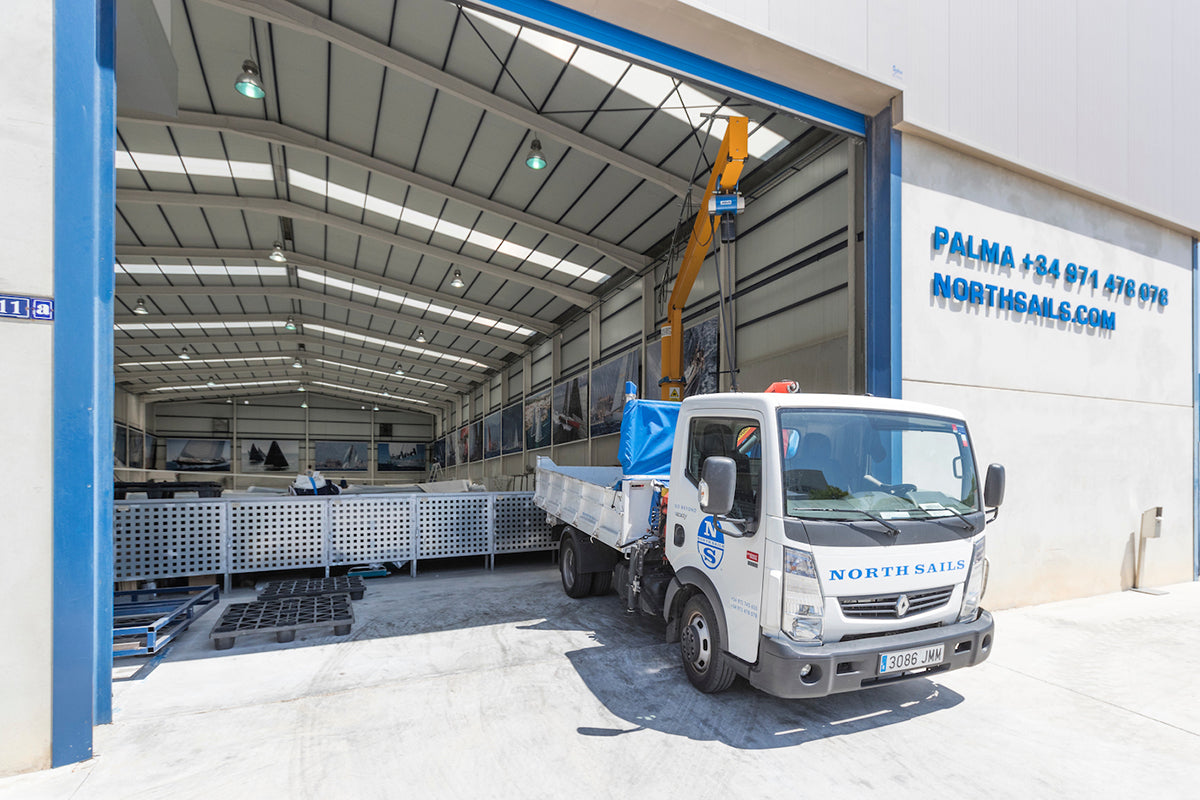
SERVICIO EN TODA ESPAÑA
SERVICIO EN TODA ESPAÑA
Pregúntanos sin compromiso.
📸 Ian Roman
El equipo de North Sails España ofrece servicio en todo el territorio peninsular e insular como parte de una estructura global que incluye 150 puntos de venta, 110 velerías certificadas y 1.600 trabajadores en todo el mundo.
En España, North Sails cuenta con velerías en Cuntis (Pontevedra), Valencia y Mallorca, centros de ventas en Barcelona, Málaga y Santander, y un equipo comercial que abarca literalmente todo el país. Si tienes dudas o necesitas información, pregúntanos sin compromiso y te pondremos en contacto con el experto North Sails más cercano.
READ MORE
READ MORE
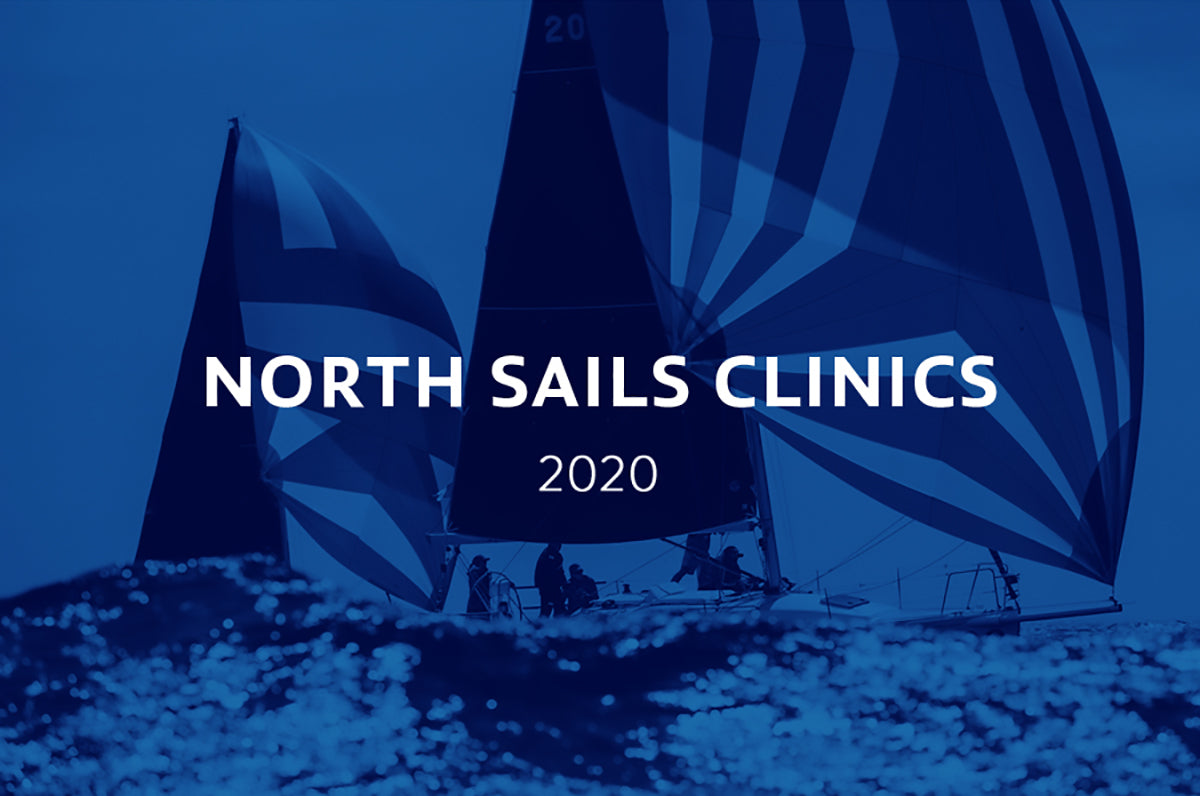
CALENDARIO FEBRERO
CALENDARIO FEBRERO
El calendario 2020 de clinics North Sails continúa en febrero.
Tras el éxito del seminario de Moraira el pasado 21 de enero, nuestros expertos trabajan ya en la preparación del clinic que impartirán en Cartagena el próximo 22 de febrero.
La flota viguesa de J70 decidió reprogramar el clinic de J70 de enero, que será anunciado en cuanto confirmemos nuevas fechas. Contacta con nosotros en info@es.northsails.com si estás interesado en participar o necesitas más información sobre los eventos organizados por North Sails España.
READ MORE
READ MORE
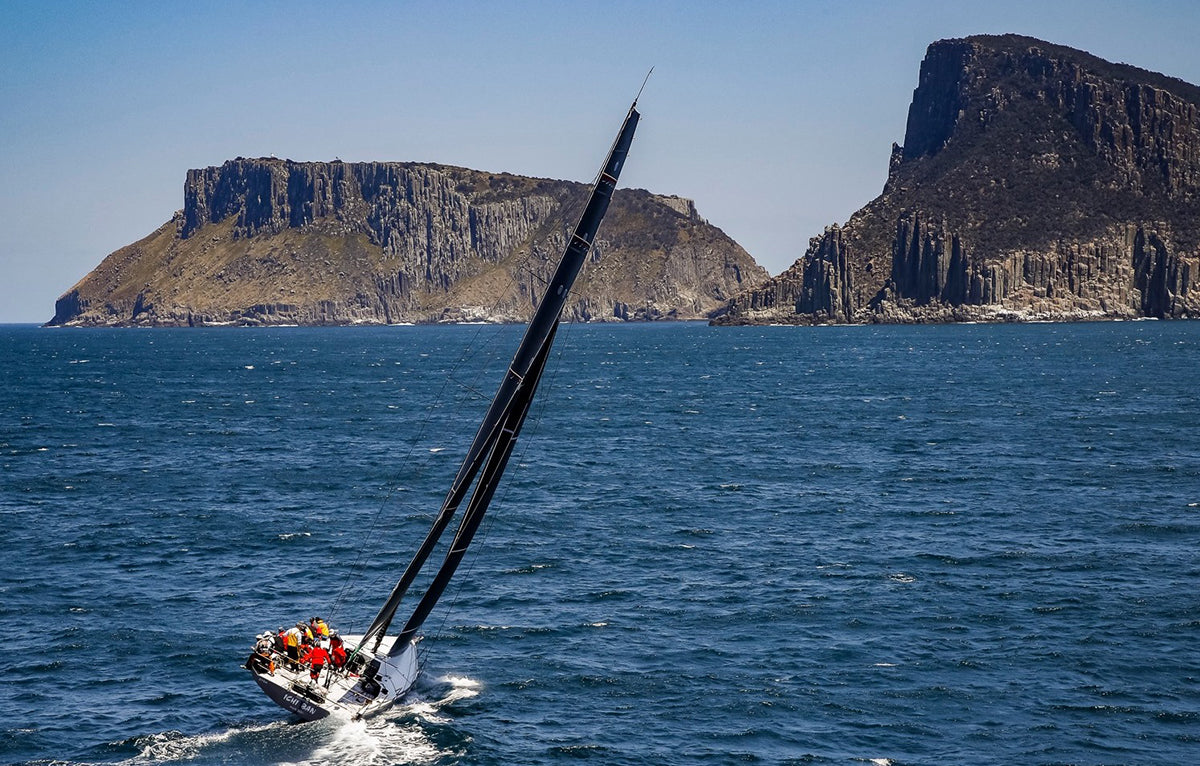
ICHI BAN GANA LA 75A ROLEX SYDNEY HOBART CON NORTH SAILS
ICHI BAN GANA LA 75ª ROLEX SYDNEY HOBART CON NORTH SAILS
La Rolex Sydney Hobart reunió a 157 barcos para celebrar su 75ª edición.
📸 ROLEX / Carlo Borlenghi
El recorrido de 628 millas náuticas entre la bahía de Sídney y el puerto de Hobart, en Tasmania, proporcionó un amplio abanico de condiciones que pusieron a prueba la habilidad de las tripulaciones y la preparación de sus embarcaciones.
El ganador absoluto bajo fórmula IRC fue el TP52 Ichi Ban del armador australiano Matt Allen, campeón también en 2017. El equipo eligió un inventario compuesto por 11 velas, incluyendo un paquete completo 3Di para ceñida y spinnakers NPC. En opinión del experto North Sails Rob Greenhalgh, trimmer a bordo de Ichi Ban, fue una regata muy igualada y la ventaja estuvo en los detalles: "Resultó clave gestionar bien las transiciones que presentó el recorrido. Nos mantuvimos siempre a la vista de nuestros inmediatos rivales, pero conseguimos despegarnos especialmente por el acierto en la elección de velas y un buen trimado".
READ MORE
READ MORE
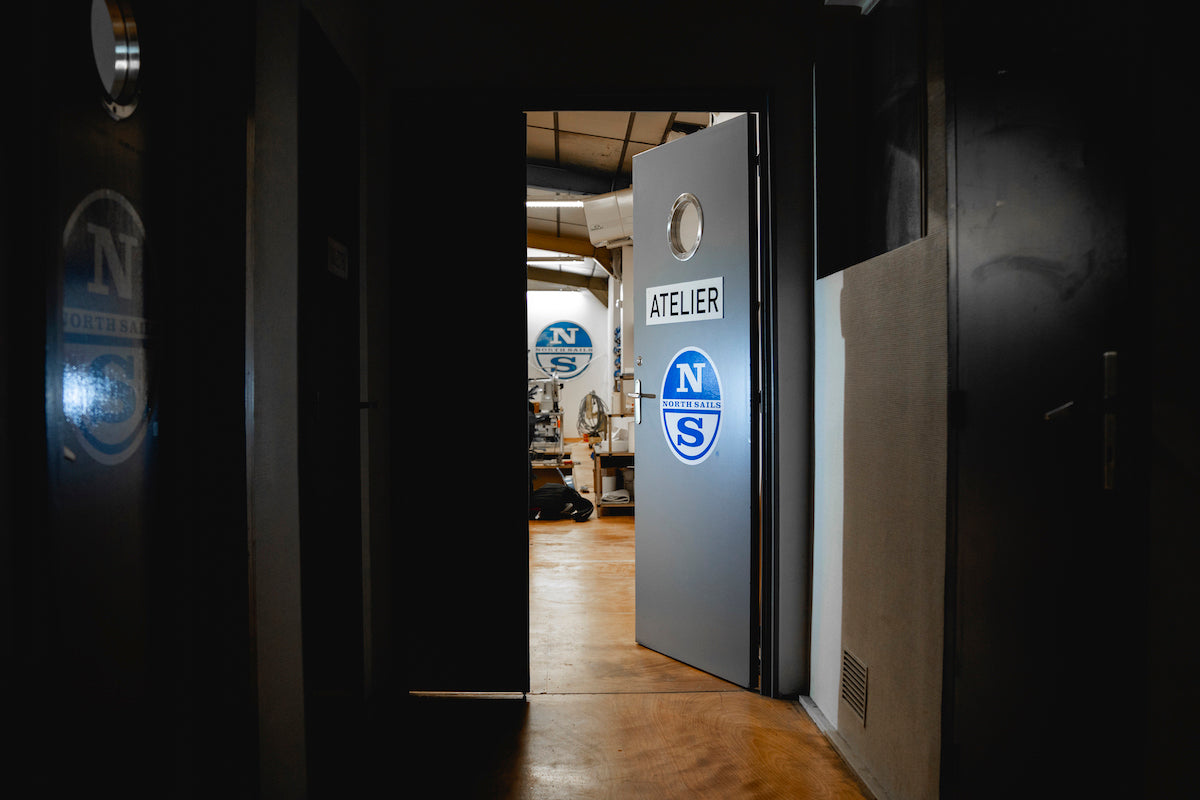
NUEVA VELERÍA EN LORIENT
NUEVA VELERÍA EN LORIENT
Una ubicación estratégica por su proximidad a los mejores equipos franceses de vela oceánica.
North Sails Francia refuerza su estructura con la apertura de una nueva velería en Lorient La Base, una ubicación estratégica por su proximidad a los mejores equipos franceses de vela oceánica.
"La llegada de North Sails a Lorient la Base es muy significativa para nuestro equipo por el acceso directo a la oficina de diseño, con la que pasamos mucho tiempo intercambiando ideas", explica Franck Cammas, patrón de Edmond de Rothschild. La nueva velería cuenta con una sala diáfana de 500 metros cuadrados para dar servicio a los clientes de la marca. Un complemento perfecto para las instalaciones principales de North Sails Francia ubicadas en Vannes, en plena Bretaña.
READ MORE
READ MORE

DISEÑANDO LA YOUTH AMERICA'S CUP
DISEÑANDO LA YOUTH AMERICA’S CUP
North Sails New Zealand colabora en el desarrollo de los nuevos monocascos voladores con los que se correrá la Youth America’s Cup a partir del próximo mes de noviembre.
Andrew Delves / America's Cup
Los barcos, de nueve metros de eslora, son fabricados en Auckland por el astillero Yachting Developments, y el equipo North Sails trabaja con diseñadores y el sindicato Team New Zealand para desarrollar aparejo, velas y configuración de cubierta. El primer AC9F será botado en las próximas semanas.
"Los AC9F van a ser barcos muy divertidos para regatistas jóvenes, especialmente en situaciones de match-race", avanza Magnus Doole, miembro del proyecto dentro de North Sails. "No serán fáciles de navegar, y exigirán que los tripulantes desarrollen las habilidades necesarias para competir en un evento como la America’s Cup".
El formato de la competición establece tripulaciones mixtas con edades entre 18 y 24 años y un programa compuesto por una regata de flota en China en noviembre de 2020, una de match-race en Auckland en febrero de 2021 y la fase final en marzo de 2021.
READ MORE
READ MORE

RÉCORDS 2019
RÉCORDS 2019
Nuestros clientes continúan añadiendo registros históricos al dossier de récords conseguidos con velas North Sails.
A lo largo de 2019 han sido varios los hitos alcanzados en diferentes disciplinas, y en los últimos cuatro años se han sumado más de 40 nuevas marcas al libro de los récords.
Repasamos los más importantes de 2019:
En enero, el ARGO de Jason Carroll batió el récord de la Pineapple Cup (2 días, 7 minutos y 44 segundos); en febrero, el Maserati de Giovanni Soldini, el de la Caribbean 600 (1 día, 6 horas, 49 minutos); en abril, el SHK Scallywag de David Witt (2 horas, 33 minutos y 53 segundos) y el Fujin de Greg Slyngstad (2 horas, 36 minutos, 33 segundos) batieron sendos récords en Les Voiles de St Barth; en mayo, el Rambler 88 de George David, el de la 151 Miglia-Trofeo Cetilar (13 horas, 50 minutos, 43 segundos); en julio, el La Fabrique de Alan Roura, el transatlántico oeste-este en solitario (7 días, 16 horas, 55 minutos); en agosto, el Edmond de Rothschild de Franck Cammas y Charles Caudrelier, el de la Rolex Fastnet Race (28 horas, 2 minutos, 26 segundos); en octubre, el Beau Geste de Kark Kwok, el de la Coastal Classic (5 horas, 27 segundos); en noviembre, el IDEC Sport de Francis Joyon, el Mauritius Route (9 días, 18 horas, 14 minutos, 45 segundos); y en diciembre, el OceansLab de Phil Sharp, el Around Isle of Wight (5 horas, 5 minutos, 4 segundos).
¡Felicidades a todos, y gracias por confiar en North Sails! Todos los récords North Sails están disponibles aquí.
READ MORE
READ MORE

VELAS MÁS COMPETITIVAS BAJO FÓRMULA ORC
VELAS MÁS COMPETITIVAS BAJO FÓRMULA ORC
La nueva reglamentación ORC para la temporada 2020 ofrece interesantes oportunidades de optimización de velas que podemos aprovechar para conseguir que nuestro barco sea más competitivo.
📸 Ben Zucker
North Sails España nos explica cómo:
El pasado 13 de enero, el Offshore Racing Congress anunciaba la nueva reglamentación ORC que se aplicará en las regatas de 2020. El documento muestra modificaciones que afectan a las velas y que ya han sido estudiadas por los expertos de North Sails España, que han identificado interesantes oportunidades para sus clientes. "La nueva reglamentación ORC 2020 abre un abanico de posibilidades para las velas de portantes que merecen ser estudiadas caso a caso", explica Luis Martínez Doreste, director comercial de North Sails España.
Entre los cambios aplicados, hay uno especialmente significativo que repercute a los espís asimétricos. "Hasta el año pasado, se consideraba que un espí era asimétrico si la cadena media era mayor o igual al 75% de su pujamen, y especialmente en rumbos de través cerrado proporcionaban un beneficio frente a la regla", explica Juan Meseguer. "De cara a 2020, ORC ha cuantificado cuánto te beneficias con esa vela y lo ha aplicado para definir el rating. En vez del 75%, ahora se considera espí a la vela con una cadena media a partir del 85% de su pujamen".
¿Esto supone una penalización para quienes equipen códigos cero? En opinión de Martínez Doreste, lejos de suponer una penalización, abre una ventana de oportunidades si dejamos la optimización en manos de una velería experta como North Sails, que cuenta con las herramientas necesarias para conseguir un buen ratio con las velas de portantes. "Para aquellos clientes que ya tengan velas tipo código cero, estudiamos la mejor configuración y la adaptamos al nuevo reglamento. Estudiamos cómo cambia su rating y adaptamos la vela a la mejor configuración posible". Además de mejorar las prestaciones puras de nuestro barco, conseguiremos optimizar su rendimiento bajo la nueva reglamentación ORC, resultando en una mejor competitividad en regata.
READ MORE
READ MORE

RED BULL KING OF THE AIR 2020
RED BULL KING OF THE AIR 2020
Counting Down To The Main Event In Cape Town, South Africa
Make sure you’re following @northkiteboarding to find out exactly what day the competition is called within the two week window, so you can watch the livestream at redbull.com. Want to tune into the world’s most jaw-dropping big-air contest?
The Red Bull King of the Air competition, proudly sponsored by North Kiteboarding will be returning to Kite Beach, Cape Town on the February 1st through the 16th. It’s all about the amplitude as contestants go head-to-head in a “flag out” competition format. During the two week weather window riders will only face-off in the perfect conditions – wind speeds of over 30 knots are ideal for providing the perfect swell from which to boost some extreme maneuvers.
The field for 2020’s Red Bull King of the Air will be made up of top six riders from the 2019 edition as well as 14 wildcards and four satellite entrants. 24 total kite boarders will take to the air between February 1st and 16th for a shot at the big prize.
Confirmed for the 2020 event is three-time defending champion and winner last year, Kevin Langeree, as well as North athlete and winner of the 2017 edition, Nick Jacobsen. He is currently the only person in the world with a set of North prototype kites. Unfortunately Nick missed out on a chance to defend his title in 2019 due to injury.
This year in particular is the first year a woman will have the opportunity to compete for the overall crown. Angely Bouillot will make her debut and is very excited for the chance to compete. “It’s a real honour”, says Angely. “I am excited to prove that women have a place in these extreme events and my mission is to inspire young women to participate in more events like this.”
Red Bull King of the Air is everchanging, and this year brings a new format for competition. Four winners, along with the 14 video/satellite entries will compete in round one and two. Both rounds will take place at a different venue that offers the best conditions; Witsand/Misty Cliffs or Kite Beach, Blouberg. From there, competitors will advance to challenge the top six from the 2019 event at Kite Beach for the big showdown in round three.
Video highlights of 2019:
READ MORE
READ MORE

SUZY LEECH: IMPRESSIVE AND IMPRESSED!
SUZY LEECH: IMPRESSIVE & IMPRESSED!
Teaming Up With Ken Read To Win Ft Lauderdale to Key West Race
📸 Billy Black
For more decades than she likes to admit, Suzy Leech has dealt with whatever challenge is thrown at her, on any kind of boat. From the bow of Mighty Mary, the 1995 all-women’s America’s Cup team, to forward teammate on Betsy Alison’s Olympic Yngling campaign, to navigating Enterprise to 2nd place at the 2019 12 Meter Worlds, Suzy is (in the words of Ken Read) a “bad-ass.” So it’s no surprise that she embraced her newest challenge, a 24-hour double-handed sprint down the Keys, with enthusiasm. It’s also no surprise that she helped Kenny achieve yet another victory.
“He was awesome,” Suzy says, when we caught up with her shortly before the prizegiving. “Kenny just wanted to go out and try this whole thing and see if he likes it. Between Jeanneau and North Sails, all the details were completely covered. I had a really great time, and it was the perfect introduction.”
Two brains are better than one. If you have the same skill set, you’re wasting it.
One reason why this first-time pairing worked so well, Suzy believes, is that it was so symbiotic. “I’m fine doing the sail handling and I loved navigating, but I am not that person to make your boat go fast. I’m not going to look at the sail combination and go, ooh, we need to tweak this here and do that there.” So while Ken kept suggesting sail changes (she figures they made about 20 in the course of the race), she worried about plotting the fastest course into Key West—in the dark. Watching the series of pre-dawn squalls on radar and trying to predict the next shift was totally different from the sailing she’d done before. “You’re completely blind. Maybe you see the stars are going away, but that’s it—a whole new world.”
📸 Billy Black
One of Suzy’s biggest takeaways was the incredible range of new sail designs. “We had a Code Zero and a Code 50, what they’re calling a tweener. It was a great all-purpose sail that we were able to put up and know that it could handle squalls and keep us going when the wind died. That last part of the race there was so much lump and rain, you couldn’t fly the A2. The code sails really came through for us because you could trim to what you needed.”
Suzy also raved about the prototype jib that reefed into a blast reacher, and their incredibly versatile staysail. “No matter what other sails we had up, whether it was the Code Zero, the Code 50, the A2, or the headsail, we always had the staysail up from the beginning of the race to the end.” That meant no bare-headed peels—but it also meant learning new lessons (in the dark, and on the fly) for this former bowman who describes herself as “an old dog.” Back aft after each sail change, the cockpit looked like “a home crocheting project gone wrong.” Fortunately Ken dove into cleanup with enthusiasm. “He didn’t care what he did, he just pitched in to help make the boat go faster. I was so impressed.”
📸 Billy Black
Looking ahead, Suzy says she’s excited to see where the partnership between North Sails and Jeanneau to promote double-handed sailing leads next. “They’re both looking at the long-term game. They want to get more people into sailing, because they want to find more buyers for boats and sails. We came up with a list of things to change, and any idea that we had was like, okay, ‘let’s do that. Let’s try it out. Let’s make it happen.’ It’s very refreshing.”
She’s also excited about the new mixed double-handed offshore Olympic discipline, and racing with Kenny to Key West taught her what to look for in a potential teammate. “First is compatibility. Can I hang out with you? Do we like the same wine?” She laughs. “That’s important!” While that might be the same for any sailing campaign, her second priority is a bit different: complementary skills. “Two brains are better than one. If you have the same skill set, you’re wasting it.”
And after dealing with so many different sailing challenges for so many years, Suzy also knows that the talent pool for offshore sailors who happen to be female is not very deep at the moment. “I hope that this new generation steps up to the plate. It’s going to be a great opportunity.”
📸 Billy Black
READ MORE
READ MORE

BACARDI WINTER SERIES #2: NORTH CLIENTS SHINE
BACARDI WINTER SERIES #2: NORTH CLIENTS SHINE
North Boats Win Both Overall And Corinthian In The J/70 Class
📸 Kathleen Tocke
For the second edition of the Bacardi Winter Series in Miami, 25 J/70s and 25 Melges 24s raced in 5-10 knots over two days. The Bacardi happy hours were a hit as always!
North boats took five of the top ten places in the J/70 class. Oivind Lorentzen, Ian Coleman, David Shreiner, and Lucas Calabrese won overall, while Zachary Segal, Ashton Hamerlin, Enrique Quintero, and Piet van Os won the trophy for top Corinthian team. Both winners used the XCS-2 mainsail, the J-2 High Clew Jib and the AP-1 Spinnaker.
North Sails expert Zeke Horowitz sailed on John Heaton’s Empeiria, and he shares some lessons from a light air weekend.
Dynamic sail trim is hugely important.
If the boat isn’t fully powered up, both sails should be adjusted in every slight velocity change or wind shift. Err on trimming too loosely. The upper leech of the jib should be trimmed to the outside spreader mark, while the foot of the jib should be just touching the toe rail.
Fight the desire to feel weather helm!
Especially in light air, it’s common to want some “tug” on the rudder, because weather helm gives you feel. This is not as fast as the uncomfortable feeling of having zero helm. A “dead stick” means no rudder drag, which is fast both upwind and downwind.
Flat is Fast, even in light air.
Sailing the boat with as little as 5 degrees of heel in flat water is ideal. If you don’t have a heel indicator, get one!
Keep the backstay snug enough to avoid the rig bouncing.
Keeping the backstay just snug is good, even in conditions where you aren’t trying to bend the top of the mast. Reducing headstay bounce makes it easier for trimmer and helm to stay in the groove. This goes for downwind too!
Full results
First Place overall Oivind Lorentzen, team Nine. 📸 Kathleen Tocke
1st Place Corinthian, Zachary Segal and team USA 1154 📸 Kathleen Tocke
3rd place overall John Heaton and team Empeiria. 📸 Kathleen Tocke
📸 Kathleen Tocke
📸 Kathleen Tocke
READ MORE
READ MORE

MATULJI ČETVRTI NASLOV PRVAKA HRVATSKE
Matulji četvrti naslov prvaka Hrvatske
Još jednom je prvo Prvenstvo Hrvatske u kalendarskoj godini, jedne od službenih klasa HJS-a, bilo organizirano u Rogoznici od strane JK Val iz Šibenika. S obzirom da je u inozemstvu Rogoznička uvala poznata kao "raj za RU jedrilice" lako je zaključiti da su u pitanju bile RU jedrilice klase IOM.
Već 14. put se RU jedriličari okupljaju na mjestu koji je geografski centar Jadrana, na mjestu gdje se 2018. organiziralo Europsko prvenstvo ove klase. Ta centralna pozicija na karti se poklopila i s klimatološkim elementima koji omogućuju da Rogoznica često ima mnogo ljepše vrijeme nego što je u njenom susjedstvu, a to je pogotovo u siječnju vrlo primamljiv faktor za sve one koji planiraju provesti vikend na otvorenom.
S obzirom da se šibenski klub već odavno potvrdio kao vrstan organizator i ovakve vrste regata, a Rogoznica kao izvrstan domaćin, nije trebalo puno da se popis sudionika popuni s maksimalnim brojem od 40 sudionika.
Do ovog ograničenja je došlo s obzirom da SHRS sustav,po kojem se jedri na ovoj regati, dozvoljava da istovremeno na moru može biti do 20 jedrilica. A kroz godine rade se pokazalo da je optimalno kad se jedri u dvije skupine jer tada svi sudionici imaju dovoljno vremena i za jedrenje, a i za odmor između pojedinih plovova. Najveći teret je tada na presuditeljima koji moraju presuđivati na moru za obje grupe, a također i donositi odluke u eventualnim kasnijim prosvjedima, odnosno članovima Regatnog odbora koji stalno moraju pratiti situaciju s vjetrom i korekcijama bova omogućavati regularne uvjete za natjecanje.
Od prijavljenih 40 natjecatelja 15 je bilo članova HJS-a, a ono što posebno veseli kako organizatore, tako i članove RU klase je to što je ovo bila već druga godina za redom kad se među njima pojavilo i jedno novo lice. Lani je to bio prvi junior nakon dugo vremena, Bruno Marević, a ovogodišnji premijerni nastup u Rogoznici je imao Tomislav Bezić.
Standardno otvaranje regate je bilo s navigacijskim jedrenjem oko Rogozničkog poluotoka. Međutim, u petak je zapuhalo tek oko 11 sati. S obzirom da je kompletna ruta navigacije duga oko 3.5 NM, a start klasičnog jedrenja oko oznaka predviđen za 12:30 odlučeno je da se jedre samo prva i treća etapa, a najdulja da se ove godine izostavi iz programa.
Kako je vrijeme jedrenja bilo ograničeno start je dan s vjetrom u krmu, nije se postavljala dodatna privjetrinska oznaka.
S obzirom na uvjete i broj jedrilica (ovdje nema ograničenja na veličinu grupe) koje su imale namjeru prijeći startnu liniju, nije se isplatilo igrati s rizikom prijestupa. Zato su svi pažljivo odradili ovaj kritični dio plova i krenuli u lov na svaki namreškani dio morske površine. Pokušavana su imalo ekstremnija odvajanja od grupe, ali u tom prvom dijelu regate je najviše profitirala sredina i jedrenje po najkraćoj ruti. Tek nakon obilaska prve oznake (na karti žuta oznaka - Mark) svježe je zapuhalo iz E-SE i dionica preko mosta je odjedrena praktički u "vlakiću" i tek nakon "control gatea 1" ponovno kreće taktičko nadmudrivanje i biranje prolaska rutom bliže kopnu ili više u sredini uvale.
Flota se u principu podijelila u tri skupine. Prvih 5-6 jedrilica se dosta odvojilo na čelu, a zatim jedna veća skupina i zatim društvo sa začelja.
U principu standardan rasplet na kraju, osim što se desio jedan presedan u vidu ulaska mađarskog jedriličara Lászla Csóke kao pobjednika u cilj etape. Iza njega završava Ante Kovačević, te još dva mađara ispred najboljeg od talijanskih predstavnika. Prvi idući hrvatski predstavnik je tek na 8. mjestu. Ove godine su se zamijenile uloge... a jedrila se još samo jedna etapa...
Nakon kratke pauze nakon što je posljednji ušao u cilj, RO je pokrenuo predstartnu proceduru za povratak na Miline, dio Rogoznice pred ulazom u marinu Frapa od kuda je i krenulo navigacijsko jedrenje.
Po sad već pomalo formiranom laganom SE-S krenulo se ponovno u krmu. Ovog puta jedrenje je bilo značajno brže. Scenario sličan prethodnom... nekoliko jedrilica se izdvaja na čelu, potom velika grupa i nekoliko jedrilica na začelju. Međutim ovog puta flotu je predvodio domaći jedriličar Boris Bakotić. Njemu je za rukom pošlo ponoviti ono što je napravio László Csóka u prošloj etapi, ali nažalost je Boris bio dosta sporiji u tada, pa se nije mogao nadati dobrom generalnom rezultatu. Zato je László jedrio u jednakom stilu kao što je i otvorio navigacijsko jedrenje i ulazi u cilj odmah iza Borisa.
U konačnici je cijela flota bilo mnogo brža, a osim Borisovog skoka na prvo mjesto, ostali akteri u vrhu su bili isti kao u prvoj etapi. Međutim, u ovoj revijalnoj regati jedini tko je na kraju bitan je pobjednik, a kao što ste pretpostavili to je ovaj put bio HUN 23 - László Csóka. To je bio tek drugi put da je trofej pobjednika Rogozničke navigacije otišao van granica Hrvatske. Prvi stranac kojem je to pošlo za rukom bio je talijanski jedriličar Matteo Longhi 2011. godine.
Kako su prošli ostali možete vidjeti u rezultatima na ovom linku.
Prva iduća točka programa, a prije početka jedrenja Prvenstva Hrvatske, bilo je premjeravanje jedrilica. Od svih pravilima dozvoljenih kombinacija provjeravanja opreme i zadovoljavanja pravila, izabrana je najjednostavnija. To je vaganje ukupne mase jedrilice, kompletno opremljene s najtežim kompletom jedara i baterijama. Ta masa ne smije biti manja od 4000 grama.
Svi koji nisu zadovoljavali ovo pravilo morali su u trup ubaciti dodatni balast i tek nakon što su svi zadovoljili ovaj nužni uvjet moglo se krenuti s kvalifikacijskim jedrenjima.
SHRS sustav predviđa šest kvalifikacijskih jedrenja nakon kojih se formiraju zlatna i srebrena jakosna skupina. Kvalifikacijske skupine su svaki put različite, a formiraju se na osnovu rezultata prethodnog plova, dok je samo za prvi plov sastav skupina određen položajem na rang ljestvici za hrvatske jedriličare, a slučajnom metodom za inozemne sudionike regate.
Južin koji je puhao na drugoj etapi navigacije držao je skoro cijelo poslijepodne i regatno polje je postavljeno u skladu s njim. Po tim uvjetima odjedrena su po četiri plova za obje skupine.
Rezultati su bili dosta "šareni" i za dio jedriličara se nije moglo prognozirati u koju finalnu skupinu će upasti. U svakom slučaju trebalo je pričekati subotu, pa da se završi cijeli kvalifikacijski ciklus s obzirom da su u kvalifikacijama dva odbacivanja!
Subota je po prognozi trebala ponovno biti u znaku laganog južina, ali je Rogoznica bila u znaku laganog levanta koji ipak nije otišao u desno za suncem. Iako je puhao skoro cijeli dan ipak nije bio dovoljno stabilan da bi se moglo odjedriti dosta plovova.
Uglavnom, završile su se kvalifikacije. Deset hrvatskih jedriličara je ušlo u zlatnu skupinu, dok ih je petorica morala nastaviti jedriti u srebrenoj.
U jednom trenutku je vjetar okrenuo na NW i cijelo polje se zarotiralo ali nažalost nije dugo potrajalo... sve nade svih sudionika su se okrenule prema nedjelji i da će zaista probiti bura koja je bila u najavi za cijeli Jadran.
Na obostrano zadovoljstvo svih uključenih u regatu, bura je uistinu i zapuhala u nedjelju. Preko 10-12 čvorova je puhalo od samog jutra, da bi se kasnije tijekom dana u refulima dizala i na preko 15 čvorova!
Ove granične vrijednosti su dijelom bile i razlogom zašto su flote bile mješovitog karaktera po pitanju jedrilja koja su se koristila. Većinu jedrenja jedriličari su kalkulirali da li da jedre s najvećim jedrima ili da se prebace na srednji komplet. Po pitanju brzina u orcu uglavnom su bile slične za oba kompleta. Mala razlika bi se javila u kutu jedrenja, ali najveća razlika je bila vidljiva prilikom jedrenja dionica niz vjetar. Dok ne bi stizali refuli brzine su bile malo više u korist veće kvadrature, ali kad bi "stisnuo" reful jedrilice s velikim jedrima su doslovno jedrile slalom izmeu onih s manjim, sve do trenutka kad više ne bi mogli kontrolirati kretanje i s "nose diveom" nekontrolirano štraorcaju.
Ovo su bili uvjeti po kojima se najbolje vidjela razlika među jedriličarima, a i među njihovim bolidima.
Velika većina jedrilica na regatnom polju je bila od poznatih i provjerenih proizvođača, ali Kantun 2, Zvonka Jelačića je apsolutno dominirao, pogotovo po jakom vjetru! Čak prvih 13 jedrilica u generalnom plasmanu su bile K2!
Što se tiče borbe za vrh ona se vodila između Roberta Matulje iz JK Opatija i Ante Kovačevića iz JK Zenta. Ostali nisu mogli pratiti njihov tempo i nadmetanje je bilo napeto do samog kraja. Jedini Kovačevićev kiks je bio u predzadnjem plovu kad je imao DNF. Nakon toga se definitivno otvorio prostor koji je Matulja izvrsno iskoristio i s pobjedom u posljednjem plovu potvrdio svoj četvrti naslov prvaka!
Ukupni rezultati regate mogu se pronaći ovdje.
A evo i kratkog razgovora s novim prvakom Hrvatske. Inače, ovo mu je drugi naslov koji je osvojio u Rogoznici:
Ove godine je konkurencija malo iznenadila po pitanju inozemnih natjecatelja. Nekolicina ih se dignula jedan viši nivo, pogotovo László Csóka iz Mađarske koji je završio na 5. mjestu. Šteta je što su falili neki naši vrlo dobri jedriličari, a svi ostali smo bili manje više tu gdje smo svi očekivali. Tako su završili i talijani koji su s nama jedrili na Europskom prvenstvu. Završili su u prvih 15 i to je po mom mišljenju za sada njihov doseg, a tu je također bio i turski predstavnik Kaya Dinar koji je na prošlom SP završio 34. Ostali strani predstavnici bili su uglavnom u srebrenoj skupini koja je neka njihova realnost s obzirom na našu trenutnu snagu. Mislim da je jedrenje u nas trenutno na stvarno visokom nivou. Evo nakon dužeg vremena ponovno vidimo i nova lica među splitskim jedriličarima, a moram reći da i kod nas u Opatiji ima nekih osvježenja. S nama su počeli povremeno trenirati Boris Rosović i Damir Puhar. Inače jedre za JK Orion iz Mošćeničke Drage, ali treniraju s nama u Opatiji. Istina, u Opatiji nam nedostaju juniori u IOM-u, dok klinci iz kluba tu i tamo znaju zajedriti u RG65. Uglavnom je to još kroz zezanje, tako da još neko vrijeme neće iz te skupine isplivati neko novo ime. Ali nadamo se da će se i to popraviti. Tako da smo ja i Robert Grubiša manje više sami na treninzima kojih je bilo nešto manje u posljednje vrijeme dok sam ja bio bez jedrilice... do prije 15 dana sam jedrio sa starim bratovim Lintelom ali evo sam i ja sad član K2 flote :) Sad se nadam da ćemo odjedriti sve naše zimske regate, a možda otići na po jednu regatu u Italiju i Mađarsku. Jedino što je još upitno u sezoni ispred nas je Europsko prvenstvo koje će se jedriti u talijanskom Orbetellu od 25. travnja do 2. svibnja. Što se tiče samog Kantuna 2 i kratkog vremena kojeg sam imao za prilagodbu na njega, mogu reći da ga ne mogu usporediti niti s jednom drugom jedrilicom koju sam vozio. Jedan osjećaj je po laganom vjetru, a s druge strane je strašno dominantan po jakom vjetru. Moram reći da mi se njegove maritivne mogućnosti generalno sviđaju, dok bi se o vizualnom dojmu moglo raspravljati :) I za kraj želim pohvaliti sve koji su bili uključeni u organizaciju i suđenje, savršeno odrađena regata!
Robert Matulja, JK Opatija
Kao što je bilo i najavljeno, u Rogoznici se jedrilo i s jedrilicama klase RG65. Sudjelovali su maleni rogožnjanci, primoštenci i splićani, a stiglo je i nekoliko seniora.
I ove jedrilice su se uspješno nosile s burom, a priliku za upoznavanje s RU jedriličarstvom na svim razinama iskoristili su juniori JK Split koji su stigli iz Splita na studijsko putovanje s praktičnim vježbama.
Inače, u ovom klubu se nakon dosta vremena ponovno organizirala modelarska radionica, a u sklopu nabavke opreme nabavljeno je i 8 jedrilica klase RG65, te se nadamo da će i taj klub postati još jedno jako uporište ovog vida jedrenja u Hrvatskoj.
Kompletnu fotogaleriju ovog atraktivnog vikenda u Rogoznici možete pronaći na ovom linku, dok kratki video presjek nedjeljnih jedrenja možete pronaći u video galeriji.
READ MORE
READ MORE

EFFECT OF WINTER SUN ON BOAT SAILS
EFFECTS OF WINTER SUN ON BOAT SAILS
UV Is Not Your Friend
We all know that ultraviolet (UV) light breaks down traditional fabrics, which is why sunshine is bad for your sails. (FYI 3Di is composite technology, not a sail laminate. For info on 3Di sail care, read Sail Maintenance.) Even the lower sun angles of winter can wreak havoc on our sails. Here’s what you need to know about UV damage on traditional fabrics. Fortunately, there’s a way to protect your sails and extend their life expectancy: be diligent about covering them up when they are not in use. Once fabric is rotted from UV exposure, the only remedy is replacement. Read on for other factors that make a difference.
Fiber type
Some fibers have better UV resistance than others. For two fibers of the same type, a smaller diameter fiber will degrade more rapidly than a larger diameter fiber. Woven polyester fabrics are made with warp yarns that are almost always smaller than the fill yarn. So when dacron has been rotted by the sun, it will rip more easily across the warp (parallel to the fill).
The simple test of your sail’s fiber integrity is to lightly scrape the surface of the fabric with a dull metal object, like the edge of a spoon or the thick side of a knife blade. If the fibers are still in good shape, the fabric will become shiny and smoother where you rubbed it. If the fibers are rotted, the filaments on the surface will fuzz up or sluff off of the sail. If the UV damage is very advanced, the fiber might rub away completely—the sign of a sail that is going to fail.
Most UV exposure occurs when the boat is sitting with the sails down. Accordingly, some areas of the sail will get more exposure than others. The mainsail leech lying on top will rot long before the parts of the sail hidden beneath it. The same is true for a roller-furled headsail. The fabric on the inside of the roll will last much longer than the leech, which forms the outside of the roll.
Sometimes the degraded area of a sail can be economically replaced. But more often, when the sail fabric is degraded enough to easily rub the fibers away, or to tear a Dacron fabric along the fill yarns, it is time to replace the sail.
Suncovers
You may be surprised to learn that your sail will degrade right through its sun cover. As the cover ages, it becomes less effective at blocking the rays of the sun. Heavier fabric provides a more effective barrier than lighter fabric, and dark colors provide better protection than light colors. If you spend time in the tropics, consider a multiple layer cover. It will be much more bulky, but your mainsail will last longer.
Last but not least, the deck of your boat is an excellent UV barrier. Keep your sails below decks whenever possible.
A suncover can help protect your sail from UV rays, but step one is making sure your sail is furled correctly so the suncover is on the outside. This image shows how the sun has damaged the sail material because the sail was furled incorrectly.
Stitching
Sewing thread will rot in the sun much sooner than a fiber of the same size woven into sailcloth, because it sits on top of the fabric and is more exposed. If resistance to UV rot were the only criteria for selecting the thread weight, bigger would always be better. But selecting thread too heavy for the application will result in a hopelessly puckered up seam and eventually the fabric will tear along the dotted line. A needle that is too small for the fabric weight can bend and deflect around large fibers, adversely affecting the timing tolerances of the machine. With these considerations in mind, the sailmaker typically chooses the lightest thread and smallest needle that the fabric will allow.
Thumb Test
Anyone with a thumb can test for rotten thread. If you can scrape the thread away with your thumbnail, it’s time to restitch your sail. Check each seam in several locations, especially along the leech tabling or on the sail cover of a roller furling genoa. Some areas will rot sooner because of the way the sail is rolled or flaked.
If you can scrape away any of the thread, circle the area with a pencil and then start looking for more rotten thread. Restitching is an easy, time-consuming job, but less time-consuming if you catch the rotted thread before the seams come apart.
Sun degrades stitching. It’s important to get scheduled sail service to address these types of issues to avoid disaster on the water.
Straps and webbing
When you inspect your sails, take a close look at the outside of any web straps. If you see any broken fibers, start planning to get the sail into a loft to have new straps sewn over the old ones. It is not a good idea to attempt to sew through an old
corner strap with an onboard sewing machine, or any other light duty machine. The corners of the sail get harder as the sail is used, and you will be exploding lots of needles.
Excerpted from The Complete Guide to Sail Care and Repair, by Dan Neri
Webbing damage due to long-term sun exposure.
READ MORE
READ MORE

THE YEAR AHEAD
THE YEAR AHEAD
North Sails Experts Share Their 2020 Season Hopes
We had a great year in 2019, from distance races to weeknight racing to Saturday cruises, our time on the water was fantastic. As we start the New Year ahead, our team shares what they're looking forward to this sailing season and what makes them excited to get back out on the water.
Doug Folsetter
J/70 Canadians at Charlottetown Race Week. I'm looking forward to sailing with friends and visiting PEI as I've never been there.
Mike Wolfs
Sailing on the new Saffier 37 lounge coming from Amsterdam.
Hugh Beaton
I'm looking forward to delivering new modern cruising sails we've been working on all winter and doing sea trials with them. For racing, I'm excited for the 8 Metre Worlds in Enkhuizen, Netherlands.
Louisa Bobyk
All racing this summer. I'm excited for the 2nd annual Raft Party Race as well as J Fest at Etobicoke Yacht Club. Combined with some weekend sailing with the family, I think it will be a fun summer on the water.
Have an event you're looking forward to this summer? Or want to share a local activity you think we should be apart of? Let us know. We're always looking for new and exciting things to sail, support and share on the Great Lakes. Email us today.
READ MORE
READ MORE

CUSTOMER SPOTLIGHT: TOM MULDER
CUSTOMER SPOTLIGHT: TOM MULDER
An Extra Special Christmas For Sailing Enthusiasts
Now that the holidays are over and we focus on what’s ahead in 2020, I was able to get in touch with Tom Mulder about a very special gift from his parents on Christmas and ask him a few questions about his new North Sails, his sailing past, and a peculiar question about the Edmund Fitzgerald.
I had the pleasure of speaking with your dad about a very nice Christmas gift that you received last month for Christmas….a new set of white North Sails for your Harpoon boat. Did you have any idea that they might do something like this?
How it all started was your previous location was in Grosse Point if I remember correctly, off Mack I think. I I’ve had my Boston Whaler since 1988, 32 years now. It had original sails, I’m the second owner. Those sails after 42 some years, started to decay obviously. I kept them in good condition, kept them protected obviously, and what not. I figured that right now would be a good time to replace the sails, both the jib and the mainsail. Since we knew that you had an office location nearby to get in contact with you guys. And as we found out, you can do repairs as well as fabricate sails at your location. That’s really what started it, to contact you guys North Sails Detroit> to help us replace sails.
I was under the impression that this was going to be a surprise. Was it supposed to be a surprise?
Yes, it eventually ended up as a surprise. It started out as, especially leading to a place-- Both my wife and I live down here in North Carolina and my parents are still up in the Metro Detroit area, so it was behooving them and us to see local availability for them. And for us to see if you could either repair them or if the sails were not repairable, if you could replace them. We knew that the sails were going to get dropped off. I wasn’t quite sure if they had resolved whether the sails could be repaired or not or if they were just going to get replaced.
What thoughts were going through your head when they told you about the new sails?
So when they came down here just a couple weeks ago for our son’s birthday, they showed us the pictures of the new sails and the new sail bags. They were actually fantastic. The new sails looked absolutely wonderful. I am so very excited for summer time to get back up to Michigan and put the sails on the boat and get out on the water.
Your Dad mentioned that you are a bit of a North Sails enthusiast. How did you originally discover North Sails and what about the North product do you appreciate the most?
It was kind of by happenstance. In the late 80’s my cousin-- both my mom and my dad’s side are from the west side of Michigan, Holland and Grand Rapids area. I have several cousins over in Muskegon and one of my cousins invited me out there to go sailing with him. I had never been sailing before, it was about ‘87. I ended up being a part of his crew, if I remember correctly on a 27’ J-Boat and well, he had North Sails. Ironically at the time my other cousin, his brother was on the boat and then their sister, my other cousin was on a different boat. I just was enamored. I got the sailing bug. Right away. With the experience of the North Sails that he had and the equipment I just thought-- it was one of those things that I had a great experience, fantastic sailing and just thought instead of trying to change something, I’ll just stick with it. Ironically within about a year I had bought my Boston Whaler and that came with 2 North Sails on it, a jib and a main and just stayed with it. Didn’t look at Hood or any other type of sailmaker. I Kind of thought, just stay with North. We never had any problems with any of the sails or durability so it’s been great.
Your dad said that you were adamant about white sails, no other colors, can you elaborate?
Yeah, I know through just experience and racing and watching on TV growing up in that timeframe, before the current sails I’ve always just wanted white sails with numbers for personal and for racing thoughts. That was it. No colors. I know with spinnakers we can get colors, but for me it’s always been about just a clean white sail on the blue waters.
Your Dad claims that you made a model of the Edmund Fitzgerald when you were a kid. Could you tell me what inspired you about this particular boat that now lies on the bottom of Lake Superior?
I did; out of a 2x4. Living in Michigan, it was the inland lakes where we have had cottages and where my boat currently is- at my parent’s cottage. I love the great lakes, the freighters, the lake boats. I don’t quite remember how I got caught on that bug, with the Edmund Fitzgerald, but I’ve had that knowledge with me and that desire to just obtain as much information as I could. I still have the information with me, as well as the documentaries and books that have been published. It came to a point where while my grandparents on my mom’s side were still alive, I made a USS Constitution for my grandpa and grandma. I just thought why couldn’t I? It didn’t seem too complicated that I make an Edmund Fitzgerald out of wood by myself. I started with the hull out of wood from a 2x4, and then taking cardboard to create the super-structure, all the forward and aft. And it worked out pretty good, not too bad for that age that I was and ironically when my parents came down last fall, they brought the original boat down with them. I still have it here, in my possession.
Did you carve it?
The hull was carved and shaped into the bow structure and then the stern was rounded. I didn’t get into the finite details of under the hull of it with the propeller or the tiller, or the rudder. I just did to whatever accent I could. And just sort of made out of cardboard, thin cardboard, the super-structure from there. I took a little bit of architectural license with it, but it was quite good.
Do you have any stories from your past that may have helped shape your appreciation of the sport of sailing?
I will say this. Part of the official sailing experience with my cousins on Lake Muskegon was, if I remember correctly, I was there for about 4 days. We sailed on Wednesday or Thursday qualifying and the race was on a Saturday. On the qualifying, off of Lake Michigan there was a squall that came in. I remember being on Lake Muskegon and reefing the sails and the harbor was too tight with the boats and the slips on the dock that we had to actually stay out on the lake during the storm. It didn’t last more than 30 or 40 minutes but part of that experience was getting the bug inside me. That was another reassurance for me that the North Sails were strong enough and would last forever.
After that throughout the 90’s and early parts of 2000, I know being on my Boston Whaler I broke both shrouds at the mast out in the middle of the lake the mast keeled over into the water. You’ve got to do what you’ve got to do. You disconnect it, pull it back out onto the boat, and haul yourself back into shore or flag someone down for assistance. But at the end of the day, North sails never caused any problems or any issues what-so-ever. It’s been another element of experience and I’ve been a very happy North Sails customer.
Have you been able to pass along your interest in sailing and marine activities to your family?
Well, honestly, our son is going to be 12 this week and our daughter just turned 5 last September and they’re not quite- My son has been interested in sailing but at this point it’s not quite as fast as the power boat. And the amount of work to be done on a boat; especially on a smaller sailboat where your controlling the jib and the mainsheet with the lines it’s not just get on the boat and go. That part of it, the way I look at it- you’re by yourself on the boat trying to find your own propulsion with the wind. That I’ve never lost. It’s been great, but on the other side too, not to be a traitor to sails but definitely having a power boat has been another element for us to at least be on the water. Which both my wife and I are very-- growing up in Michigan we need to be near a lake to get out on the water and just enjoy the peace and quiet and the solitude, lake-wise.
Now that you know you have the new sails waiting for you in Michigan with your boat, what are your plans for the upcoming sailing season?
We do, we started past years coming up in the summertime for a week and just based on our sons school schedule and my daughters starting kindergarten this summer. Both of them will be in year round school down here and usually the July or August timeframe is when they have 3 or 4 weeks and that’s when we plan to be going up. This year we’ll be going up in July around the 4th timeframe. It’ll be good up there. Right around the time when the Michigan lake waters warm up just enough. We’re excited to get up there and to see the sails and try them out.
READ MORE
READ MORE

GONE SAILING
GONE SAILING
Ft Lauderdale to Key West with Ken Read and Suzy Leech on Alchemist
Ken Read explains why he raced double-handed in a new 33 footer from Fort Lauderdale to Key West.
I just broke a cardinal rule that I was told a long time ago by a Bermuda Race veteran. NEVER go offshore in a boat shorter than your age!
This week I raced a Jeanneau Sun Fast 3300, which is a boat I’d never sailed before, from Fort Lauderdale to Key West, with Suzy Leech—and I’d never sailed with her before. And since it’s a sailboat race, we set out win the whole thing—not just our two-boat class. Sounds cocky but you have to set the bar high no matter what you do, right?
Reality is we had very little expectations and I was super-anxious to have some fun and see what this short-handed racing is all about!
The rhumb-line distance was about 160 miles, so it was a quick race. As we skirted along the outside of the Keys, we were still trying to figure out the boat’s polars and how to operate all the state-of-the-art electronics (can anyone tell me how to use that self-steering thing?), as well as how to make efficient sail changes with only two pairs of hands.
You might remember that several years ago, I took on a totally unknown challenge for me and sailed around the world a couple times in the Volvo Ocean Race as a cure for windward-leeward boredom. Let me tell you, going from a fully professional, fully crewed program (with lots of staff, ashore and afloat, to make everything happen) to only one other teammate is equally drastic. I’ve never been shy about embracing a new challenge, but if I’d known how much work this would be… ah hell, I would’ve done it anyway.
📸 Billy Black / FL to Key West 2020
Why? There are several reasons.
First, for North Sails it is critical to have strong relationships with companies like J/Boats, Beneteau, Jeanneau and all the other sailboat manufacturing companies like them. I happened to mention my interest in shorthanded sailing to our North rep in Annapolis Allan Terhune, who set up a meeting with Mike Coe at Jeanneau, and we talked about using their SunFast 3300 for a few events. It just so happens to match the newly announced Mixed Two Person Offshore Keelboat class, though let me be perfectly clear: this is not the beginning of an Olympic campaign. Another point of interest in the 3300 is its co-designer Guillaume Verdier, a major force behind the Comanche design team and a good friend. Anytime he’s involved with the design of a boat, I know it will be a good ride.
Next, I want to do everything I can to encourage more sailboats to be built and get the ones that already exist out on the water more often. One complaint I hear all the time is that it’s too hard to find crew, but for this kind of sailing you only need to find one other person. Double-handed sailing has exploded in France and England, because the people who are doing it are just having fun. There have been pioneers of short-handed sailing on this side of the Atlantic as well, so this is not a reinvention; maybe I’m just finally smartening up to what others have been saying for a long time.
Last but certainly not least, North Sails designers JB Braun and Max Tringale have been working really hard on our Helix layouts for upwind sails, and they needed a guinea pig. Out of five front sails on this boat, four were Helix for this race (the only one that’s not Helix is the A2 Nylon sail). It’s the biggest Helix percentage of any racing inventory to date in my estimation.
📸 Billy Black / FL to Key West 2020
How to choose a teammate?
As soon as I had the idea, I realized I needed a teammate who would cover for my own weaknesses. Because the Olympics will require a mixed gender team, I figured that instead of just getting one of my usual buddies I’d practice what I preach and actually invite the other gender to come participate with me. Sailing is still a boys’ club, and we boys need to start doing something to fix that. I also decided my teammate should be American, partly to fit Olympic requirements and partly to promote shorthanded sailing in my own country, where sailing frankly needs a shot in the arm.
Suzy Leech ticks all of these boxes, and she’s a bad-ass. She did bow on Mighty Mary (the all-female team) in the America’s Cup trials in 1995, and they came within one race of going to the Cup. Back then the boats were pretty sketchy, a serious challenge especially forward of the mast. She obviously knows how to handle boats and she is not afraid to get her hands dirty. She’s also smart and understands instrumentation, so I don’t have to figure out any of that. (It’s called an auto pilot, right?) Remember, I’m used to having staff! And I say that in a good way because when you run America’s Cup or Volvo or Comanche and Hanuman type programs with dozens of people involved, you end up with staff! For this race, she had to rely on me and I had to rely on her. And with so little time to practice and trial this new ride, practically the first time we left the dock on our own was to head for the start.
Because of the late announcement by the organizers the doublehanded class only has four boats, but we’ll be scored against the entire fleet in ORC as well. It’s such uncharted territory—the sail crossovers, the people, the process—that I had fewer expectations than any race I’ve ever sailed. All I’m really sure of at this point is that we had fun!
📸 Billy Black / FL to Key West 2020
READ MORE
READ MORE

SARASOTA WINTER SERIES #2: SPEEDY TIPS
SARASOTA WINTER SERIES #2: SPEEDY TIPS
Bennet and Beardsley Dominate Weekend Regatta
Congratulations to Hayden Bennett and Mike Marshall, 2020 VX One Midwinter Champions! 📸 VX One Class/Sarah Wilkinson
The VX One and Viper fleets enjoyed two days of great sailing on Sarasota Bay last weekend. Saturday started off with a nice 12-15 knot breeze that slowly died, while Sunday brought a steady 9-16 knot breeze. The Vipers completed 8 races and after a tie was broken, Rachel and Peter Beardsley came away with the win over Jackson Benvenutti sailing with Jan Majer and Jesse Fielding. Hayden Bennett and Mike Marshall won the seven-race VX One Midwinter championship.
What We Learned
VIPER 640 CLASS (Jackson Benvenutti)
📸 Sarah Wilkinson
Puffy conditions create possibilities for huge gains (or losses) downwind due to the boat-speed and angle differences between puffs and lulls. The tactician should spend most of the time looking backwards, studying the wind to see where the next puff is coming from, and figuring out how to take advantage of it. Questions include
Is that next puff within reach?
If so, how do we get to it as quickly as possible?
Figure out which jibe keeps the boat in the puff for as long as possible.
Having an in-between race routine is just as important as the routine at the start of each race day. Develop a checklist that allows for a quick mental rest and then quickly reenages both skipper and the crew. Here is what we do, in order:
Water and food
Debrief from previous race (What worked? Were we fast or slow? Did one side of the course pay off?)
Adjust rig (Check rig on both tacks)
Ping line
VX ONE CLASS (Mike Marshall)
A flat boat and flat sails are very fast. Anytime you are hiking, get the sails as flat as you can so that you can trim them hard without heeling. A combination of vang, cunningham, and rig tension all combine to make flat sails. Don’t be afraid to pull the lines harder.
Sport boats have two modes: searching for power, and depowering. In light air, the goal is to get the crew hiking. Trimming the sails extra hard can help add power, as long as they are not stalling. As soon as you are consistently hiking, you are looking to flatten the sails to reduce drag.
A flat boat is key in the breeze, VX One Midwinter Champions! 📸 VX One Class/Sarah Wilkinson
North Sails post racing debrief
📸 VX One Class/Sarah Wilkinson
READ MORE
READ MORE

BOOT IN DÜSSELDORF
BOOT IN DÜSSELDORF
Treffen Sie uns in Düsseldorf
Bis am 25. Januar können Sie Ihren Schweizer Segel-Spezialisten Daniel Schroff in Düsseldorf am North Sails Stand H22 in der Halle 10 treffen!
READ MORE
READ MORE

EVENT SPOTLIGHT: KRIS KRINGLE REGATTA
EVENT SPOTLIGHT: KRIS KRINGLE REGATTA
A Fun Annual Event For West Coast Etchells Sailors
San Diego Yacht Club played host to the annual Kris Kringle Etchells Regatta. Established to keep the local fleet in touch with the latest advancements in Etchells racing, this regatta brings all levels of experience together for good times, competitive camaraderie, great racing, learning new things, and an awesome party! Expert Alex Curtiss provided a chalk talk at the beginning of the day with the help of Chris Busch and Benny Mitchell. Each speaker went into detail on how to set your Etchells up for speed, and explained new developments in the class. Speakers were also able to touch on what the new sail inventory North Sails is providing clients, as well as the new changes to finishing details on jibs. Once the fleet hit the water, they couldn't ask for better sailing conditions. Heading off from the Bali Hai with breeze from the southwest, Jeff Johnson and his team ran three great races for competitors. Chris Busch, Benny Mitchell and Max Hutchinson took the overall win, with Charlie Mann and team close behind in second place. Up next for the local Etchells fleet is the February One Design Weekend, which is before the class welcomes some East coast sailors in for the West Coast Spring Series, which includes the 2020 edition Etchells Nationals. For more information about whats new with North Sails Etchells Class in your area, contact your local experts for more information on how to make your 2020 a successful run! Contact Alex Curtiss, Long Beach, CA Contact Brian Janney, San Diego, CA Contact Eric Doyle, San Diego, CA
READ MORE
READ MORE

CUSTOMER SPOTLIGHT: ROB DEWITTE
CUSTOMER SPOTLIGHT: ROB DEWITTE
Childhood Sailor Builds Dream Team
His crew has sailed over 900 nm in the past year not including casual sailing or deliveries. Friends first, teammates second , Robert Dewitte and his crew have delved into the world of club racing and now distance racing on Dewitte's J/100 Perspective.
Tell us how you became a boat owner and what the learning process was like for you.
I learned to sail an Optimist down at the Hamilton Harbor Commission back when I was... well, I guess it would have been late '70s. My dad and I sailed when I was a young teenager in dinghies. We had so much fun and it really brought us together. But I grew, I became a big guy and the two of us we didn't fit. The boat got sold and we didn't sail again. I got busy, school, work, family, but always in the back of my mind was, "I want to sail again." Once the kids were big enough, I bought a Hunter 170. My wife and kids started to like it. They didn't fall in love with it and one of the reasons was that dinghy's are tender and my wife expressed the idea that something more stable would be great. I thought, "Hmm, time for keelboat." But one of the real thrills in all this was sailing with my dad. I went looking for a keelboat and I had no idea of what kind of boat I wanted. I didn't want it to big, but also wanted to avoid two things. I wanted to avoid a boat that required a lot of maintenance. We imagined day sailing and then had a good friend who had a keelboat in the States and he was giving me some coaching. I told him how I enjoyed heeling the boat on the windier days and going fast and he said, "You should get a J/Boat." So I did. There was an incredibly friendly guy at the club, I'm at Burlington Sailing and Boating Club, He saw that I joined as a new member and he phoned me up and he told me to come to the meeting of the racers before the season. I said, "I'll go and meet some people." They asked me what kind of boat I had, I told them and that I hadn't raced before. None of them believe me and I didn't quite understand this. But now I realize that J/Boats are very well known for racing.
One of the big joys for me in all of this is building a crew essentially out of my friends and learning together.
That's great to hear. So you are all about sailing now?
Yes. It's just been amazing. Of course during the first race, they all believed that we'd never done this before. I mean, we went around the wrong side of a mark. We came dead last in the wrong fleet. One of the big joys for me in all of this is building a crew essentially out of my friends and learning together. Now that we've learned how to sail it, it really is a joy and it's fast. You're among the bigger boats, it's really fun. We were still bottom of the fleet, but we started to feel like we were in the hunt and that I think stimulated us to begin to learn more and but also once we were in the hunt, we started to attract some people who had more experience than us.
What have you done to build your crew that sets you apart from other teams out there?
What we've done that I think has been really, really fun and helped us learn is what I call the winter series. We're about to start our third winter series, which is essentially like a book club or like a book study. The other thing about my crew though is their contribution and skills. There's some really, really handy guys on board and they're far more capable than me with drill saws and tools and electronics and engines. These guys have contributed so much time and energy making the boat better, and when we get her in in the spring, they come and help wash and wax. One of the things I think that makes the crew work, by the way, is that the personalities of the people. One other thing has really helped us because is the I-Regatta app and it happens to have the J/100 polar configuration, like what we have. We have this real time performance indicator, like what's our boat speed relative to our polar at this moment? When it's saying, 65 that means, "Okay, guys, we're not going fast. We have to make an adjustment." When it tells us, we're going 115 it's like, "Okay, guys called down. We've got the boat going, let's look around and see what we need to do." It's a guide and has accelerated our learning because then you get in a situation where the boat's slow, the app tells you it's slow, you make an adjustment.
I wouldn't say that we got into this to win races, but we get a certain joy just from getting better.
What drove you to your decision to go with North Sails?
The number one reason I began to work with North Sails was Doug Folsetter, who had already been very helpful in helping me think through the sail plan. He sailed with us on three or four races. He's got an incredible amount of knowledge. I think the service philosophy and him investing his time in a new sailor, new racer, let's say. He sat in my backyard and had coffee; we had diagrams and pushed our spoons around like they were the boats. Talked about tactics and things like that. Meanwhile, he beats me out there all the time. Then I would say next would actually be the spinnaker, the downwind spinnaker. When I switched to the symmetrical, it was quite a lot of conversation about how to design it. It's a mast type of rig, so it's a pole mast, high aspect ratio sail plan and there was a conversation about how wide to make the spinnaker, how tall to make the spinnaker to make it fly stabling. The designers that looked at it did a really fantastic job of that because we struggle to stay even with the fleet upwind. When we get in reaching angles with the pole all the way forward, we can fly it almost like a giant Code Zero. It's just very versatile. The boats really, really well balanced with that sail. I think that one made a huge difference because we didn't have anything in that range. This number two is just a fantastic sail and it's my go-to unless we're down below 12 knots. Follow the crew and their experience on their website. They blog each race, have a lot of video (prior to 2019), some photos, updates on what they've learned or adjusted on the boat, and a few pages of resources for crew.
READ MORE
READ MORE

ANOTHER YEAR, ANOTHER BOAT SHOW
ANOTHER YEAR, ANOTHER BOAT SHOW
2020 Toronto International Boat Show Kicks Off
Another year, another boat show begins; it's how our Toronto team knows the New Year has really begun. The team consisting of Hugh Beaton, Mike Wolfs, Geoff Moore, Louisa Bobyk, George Jackson and Doug Folsetter were on hand for a chilly preview day to welcome customers, friends and sailors alike. In classic boat show fashion, the first weekend of the show was greeted with a snow storm that had us longing for summer even more. No fear though as the snow didn't detour visitors and we saw lots of water enthusiasts come out for the show. The team will be on site for the entire show to help you find the right sail for your needs. Take advantage of North Sails Boat Show Special by placing your order today for preferred pricing. Heard about Helix? It's our new specialized sail structure evolved from North Sails Load Sharing Technology. Load Sharing Technology is a sail design and engineering solution that redistributes rig loads from a cable or headstay into the sail membrane. The Helix structure is designed to handle sailing loads while providing sufficient torque for furling. Helix sails are more versatile, from light air close reaching to heavy air broad reaching. Helix structure and optimized shaping results in sails that are furling, self supporting and forward projecting. Interested in learning more? Speak to our team at the show, booth 1623 in Hall D. Looking for cruising sails? Check out our award-winning 3Di NORDAC for a better cruising experience. 3Di NORDAC reinvents the traditional dacron cruising sail providing more aerodynamic shape without compromising control, speed and comfort; rather it enhances and improves all the above. Order the revolutionary cruising product today. Interested in our products? Visit us at the Toronto Boat Show or Contact our local loft today!
READ MORE
READ MORE
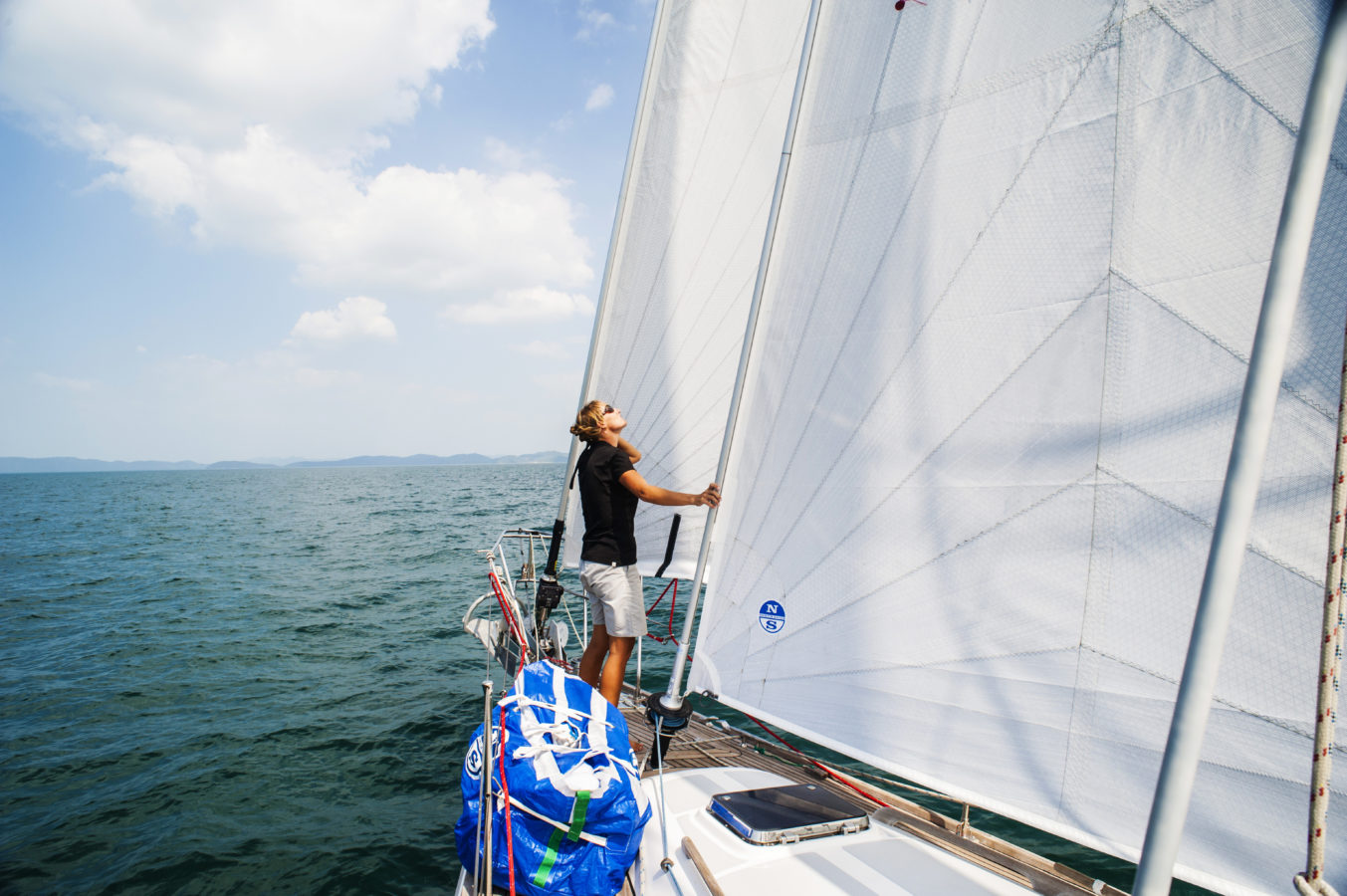
SAIL HANDLING SYSTEMS: WHAT YOU NEED TO KNOW
SAIL HANDLING SYSTEMS
What You Need To Know And More
Personally, one of my least favorite jobs after sailing is getting the sails down and rolled or folded. Fortunately, there is a sail handling system that can take some of the pain away for just about any sail. In this article we will take you through some of the major systems and how they can help make your sailing experience more enjoyable. Whether its your main, genoa, or spinnaker, there is a system that can help.
Mainsails often give us the most grief. Falling off the boom, tall stack heights, and binding slides are all very common problems but can be relieved with the correct system(s). Lazy jacks, Dutchman systems, and Quick Covers can all help keep the sail stacked neatly on take downs, the later being a combination of lazy jacks and mainsail cover. Pairing one of these systems with a Tides track will not only solve the problem of binding slides, it will also make hoists and take downs effortless.
While genoas are usually one of the easier sails to deal with, there are still some great systems you may consider upgrading to depending on your current set up. If you have a wire forestay and still using hanks, you may consider changing to a luff tape and using a head foil or roller furler. Much like main sails, hanks can often bind on hoists and take downs and also makes it very difficult to change sails on the go. A head foil can make your life a bit easier with twin grooves for fast sail changes and one solid attachment point along the luff, your time spent on the bow preparing to hoist and after take down will be reduced dramatically. For those of you looking to spend no time on the bow, a roller furling unit may be the right call. This will allow you to keep your genoa up all season with the ability to partially roll the sail for reduced area while sailing and completely furl it while at the dock.
Lastly, one of the more daunting tasks, especially for day sailors and larger boats can be the launching and dousing of a spinnaker. Fortunately, there are a few great systems that can really make this maneuver easier. Furlers aren’t just for genoas anymore. Recently a common trend for A-symmetrical spinnakers on larger boats is adding a furler. This will allow you to control the launching and dousing of your spinnaker just like a furling genoa. For smaller to mid-size boats, a dousing sock may be right for you. This is essentially a lightweight sleeve that connects to the head of the sail and is pulled up and down with a continuous line and pully system as needed. Dousing socks work great for shorthanded sailing with an A-symmetric spinnaker.
If you have any questions about the products we’ve mentioned in this article, feel free to reach out to Bill Lesnek (Bill.Lesnek@northsails.com) or Mike Stark (Mike.Stark@northsails.com) or you can call our Detroit office at 586-790-7500.
READ MORE
READ MORE

BOISW TOOL KIT
Everything You Need to Know For BOISW
BOISW is shaping up to be the main event with over 130 boats registered! Divided into many classes, it looks to be a fun and competitive regatta for sailors of all kinds. Get your team race-ready with our tips and tricks to guide you around the race course and prepare for the ultimate racing experience here at Bay of the Islands!
Local Knowledge Can Help
Bay local Chris Hornell, skipper of TP52 Kia Kaha shares his insights that could help you catch the first shift at sailing week.
Learn More
Make Sure Your Boat Is Race Ready
With many variables in sailing outside of our control, it is important to make sure your yacht is cleaned, light, and ready to be used with ease once your sails and crew are added.
Learn More
Maintaining Speed Through Changing Conditions
Whether it’s your first BOISW, or you are a race veteran, it’s hard to anticipate the ever-changing conditions. North U Expert Bill Gladstone explores Angle of Attack in moderate air trim and also techniques for de-powering in heavy air and powering-up in light air.
Learn More
Know Your Job. Do Your Job.
On board communication for racing yachts is a key factor for performance, no matter what type of sailing. However, when the number of crew increases, it becomes more and more important.
Learn More
Certified Service Guaranteed
Bay of Islands Sailing Week is just around the corner, and your North Sails team of experts will be onsite and ready to help you with all of your sail care needs. North Sails is a long-time sponsor of BOISW, and we are back again this year to help make sure you are ready to race.
Learn More
READ MORE
READ MORE

WORLDS BEST SERVICE AT BOISW
WORLDS BEST SERVICE AT BOISW
Keeping You On The Water and Having Fun!
Bay of Islands Sailing Week is just around the corner, and your North Sails team of experts will be onsite and ready to help you with all of your sail care needs. North Sails is a long-time sponsor of BOISW, and we are back again this year to help make sure you are ready to race.
In a beautiful location with a unique atmosphere, Bay of Islands Sailing Week is one of New Zealand's premier regattas. A highlight to the sailing calendars of many clients and staff, BOISW is an excellent opportunity for all to participate in great racing. The social aspects of the regatta are one of a kind when it comes to networking, and the race itself is a beautiful sight to see. It's a great chance to race, socialize, network, and see a full range of North Sails products in action, not only on superyachts and big race boats, but also on one designs and cruisers.
North Sails experts will be on hand to answer any questions and will run a service loft at the regatta to repair sails from any manufacturer. We look forward to seeing you there!
Offering you the Worlds Best Service, no matter where you are
At North Sails, our mission is to provide you with expert repairs, maintenance, and upgrades promptly. We know that whether you race or cruise, your sails are a significant investment, and we're committed to helping you maximize their performance and lifespan. Our unmatched worldwide network means you get the same quality service, whether you're at home or joining us for sailing week here in the islands.
Are you attending Bay of Island Sailing Week? We'll be onsite and ready to take care of all your sail needs.
Have questions about tuning? Need a sail repair? Contact us today, and we'll meet you at the dock.
📸 Lizzo Photography
READ MORE
READ MORE

MAGPIE WINS ETCHELLS AUSTRALIAN CHAMPIONSHIP
MAGPIE WINS ETCHELLS AUSTRALIAN CHAMPIONSHIP
Graeme Taylor Takes Home the Title with a Race to Spare
Magpie (AUS 1474) and Shoulda Gone Left (AUS 1395) go head-to-head 📸 John Curnow
35 teams arrived at Royal Brighton Yacht Club in Melbourne to battle for the Etchells Australian National Championship title. North Sails clients claimed all top 10 positions overall, so we had to find out why from Graeme Taylor, the helm onboard the winning Magpie (AUS 1474).
Graeme has been part of the class since 2000 and has racked up multiple victories, including four top-three finishes at the Worlds and four Australian National titles. For this year’s Nationals, he teamed up with James Mayo and Tom Slingsby and won the regatta with a race to spare, despite the varied bag of wind strengths in Port Phillip Bay.
“We are very comfortable in all conditions,” Graeme explains, crediting their inventory of PC-FM Radial Head Mainsail, GT Jib, MAL Jib, Full Radial Spinnaker, and VMG Spinnaker. “Having worked hard to be competitive in the light air, we now feel fast in those conditions.’’
In an experienced fleet with so many competitive boats, Graeme stresses that keeping a level head is key. “Never rip up your tickets! You will not always be at the front but there are usually a lot of opportunities in each race to improve your position. It’s always a long regatta and it is important to focus on the overall goal. Bad results and tough days are just part of the sport. You can never be perfect in every race and catch every shift during a regatta. I think it is important to know your team well and understand how they overcome obstacles.’’
Asked about the pressure of being one of the favorites, Graeme replied, “We don’t care about being seen as one of the favorites and it does not affect our performance at all. Generally, I feel like other boats do not want to engage with or tack onto us. If they want to follow us, we are good with that because they are already behind!’’
Graeme says the team’s consistent top-five results came from a positive mental attitude, along with finding what worked and sticking with it. “The start and the first windward leg are very important. We try to stick to a standard routine around the start line to make life easy. Every race is a new race and we see each one as a new opportunity for a good result.’’
“Every race is a new race and we see each one as a new opportunity for a good result.’’
He also has some advice for anyone looking to up their game in 2020. “I have always told myself that all of the great sailors are human too and not to be intimidated by them; they only have two legs, two arms, two eyes, two ears, and one brain, the same as me, so there is no reason why I can’t beat them! There are many talented sailors in the Etchells fleet, and being a class member for such a long time, it’s great to constantly be challenged. Train and sail lots, and the results will come.’’
Team Magpie is already thinking ahead to the 2020 Worlds in Fremantle in November. “We have a lot of opportunities to improve our downwind speed through technique and different modes, so we will use the limited time we have to train to be as effective as we can be in this area.’’
Congratulations to all North teams, especially all of the top 10 finishers! View the full list of results.
📸 John Curnow
Corinthian winners, TRIAD (AUS 1383) 📸 John Curnow
📸 John Curnow
📸 John Curnow
Rat Pack (AUS 963) 📸 John Curnow
TAMM HA TAMM (AUS 865) 📸 John Curnow
READ MORE
READ MORE

BOISW LOCAL WEATHER
BOISW LOCAL WEATHER
Chris Hornell Sets the Scene for Weather on the Bay
📸 Lissa Photography
One of the biggest attractions for first-timers and Sailing Week regulars alike is the weather and wind conditions enjoyed in the Bay of Islands. Bay local Chris Hornell, skipper of TP52 Kia Kaha, says the most common conditions for the height of summer is an east-northeasterly sea breeze, which can fill in up to 15 knots, especially if the wind is lighter in the morning.
"However, every few years we do get a front that pushes in and we can get two to three days of a decent southwesterly and a breezy regatta," Chris says. Like much of the upper North Island, the bay has been experiencing a persistent southwesterly since Christmas, so he is hoping for a change back to more typical conditions by late January.
Sailors that are familiar with our version of harbour racing often also enjoy sailing in bigger seas. While the inshore courses are more sheltered, the sea state can build in the afternoon with the sea breeze. This can also be affected by offshore systems which send in big rollers from the Pacific. Either way, the conditions and setting usually combine to create ‘champagne sailing’ for the bay races around the islands.
The early morning calm before the sea breeze fills in. 📸 Lissa Photography
READ MORE
READ MORE

WINTER SERVICE TIPS
WINTER SERVICE TIPS
The Top Three Benefits of Winter Sail Service
Winter is now in full swing, and it's time to have your sails evaluated. In the colder months when you are staying warm and off the water, you should think about giving your sails the same treatment.
Three Benefits for winter sail service:
1. The sails will be inspected and ready to roll out in spring. Our 10 point inspection covers all the bases to ensure your sails are in working order come spring.
Our 10 Point Inspection includes:
Inspect head, tack, clew and reef attachments. Inspect webbing & hardware for chafe and UV damage. Inspect hand stitching.
Inspect luff tapes and luff attachments.
Inspect for chafe at external hardware contact points at spreaders, shrouds, stanchions etc.
Inspect leech line, foot line and attachment system.
Inspect sail for UV damage and proper furling side (if applicable).
Inspect batten pocket ends, attachments and fit (if applicable).
Inspect sail body for condition of cloth, seams, sail numbers, draft stripes and windows. Replace or add telltales (complimentary).
Inspect miscellaneous gear: Spinnaker Snuffer line and hoop, mainsail external flaking system, headsail vertical battens, UV covers, etc.
Inspect sailbag draw string, zippers, web straps, and label properly.
Sail report, 10 checkpoints, comments.
2. The sails will be out of the elements of winter. No chance of a headsail unfurling in a windstorm, no more UV damage, and overall knowing that your sails are in good hands.
3. Cleaning. Did your sails seem dirty? Winter is the best time to have them cleaned, they are already off the boat and not being used. Cleaning your sails will brighten them and eliminate dirt and stains.
Don't forget about our One Year Free Sail Care for North Sails under 1 year old. This program is honored anywhere in our worldwide network of sales and service locations. Every sail serviced by North Sails undergoes a thorough inspection designed to identify maintenance issues early, so they do not become major problems later on. An annual inspection of your inventory will aid significantly in extending sail life and maintaining peak performance.
READ MORE
READ MORE

VX ONE SPEED GUIDE
North American Champion and North Sails Expert Mike Marshall explains how to sail this exciting sportboat well.
Who sails a VX One?
This is the nuts and bolts of VX One sailing. First off, VX sailors are really fun and we all have a blast sailing this boat. Even on a day when we can’t sail, we have a good time. One reason the class is gaining in popularity is that you can sail it with either two or three people, and at a wide variety of weights. Most people sail with three, and the accepted class weight is around 420 pounds. I have been in the top three at major regattas sailing with just one crew, and had great results at weights ranging anywhere from 380-450 pounds.
📸 Tim Olin
What’s involved in crewing?
The boat responds very well to hiking, so it’s important for the entire team to be physically fit. Pulling the spinnaker up and down is the hardest job, so put your strongest teammate in the middle. Sailing with three, jobs are divided up as follows: Upwind: the forward person adjusts the self-tacking jib and the middle crew trims main. Downwind: forward person adjusts weight (both fore and aft and side to side) to keep boat flat and fast, adjusts the jib as needed, and trims the kite during sets and douses. Middle hoists/douses the kite and trims it the rest of the time. Sailing with two, the helm handles the mainsheet and also takes the spinnaker sheet during sets and douses.
Top VX speed tip?
You just can’t get the boat flat enough upwind. Hiking harder will make you flatter, but if you aren’t able to do that ease the main out farther than you think, and then pull the heck out of the vang. Oh yeah, and hike HARD.
What should buyers know when choosing a boat?
There are two builders, McKay and Ovington. Any of the newer boats (above #150) are quite similar. Below that number, the boats are a bit heavier. You are allowed to take weight out of the keel to bring them down to minimum weight, but it’s a little extra work and there is a limit to how much you can take out.
How does a VX get around on land?
For just one boat, the load is light and you can pretty much tow it behind anything. It’s got an aluminum trailer, and the keel goes up and down. So you put the boat on the bunks, put the covers on, put the mast on top, and head off to the next regatta. It’s a similar load to a Lightning. If you are traveling more than an hour, it is a good idea to take your keel out.
How many sails are required?
Three sails, made of polyester cloth. Our goal is to keep costs down. There was a push in the class to go to Aramid, but a brand new polyester sail is going to be better than an older Aramid sail so we think it’s more important to be able to buy new sails more often. That’s also why we only offer three sail options: one main, a jib, and a spinnaker.
VX One Tuning
What are the keys to rig set-up?
The VX has uppers and diagonals, as well as checkstays that attach to the top of the vang, and balancing the tension between them is crucial. Set your rig tension to the tuning guide’s base numbers for the conditions before leaving the dock. Once on the water, fine-tune the uppers so the leeward one just goes slack when you're sailing upwind. That gives you enough prebend, and enough headstay sag or headstay tension for the conditions. Total range is 18 turns from light air to really windy. Once I get my uppers correct, I continue to sail upwind and overtrim the main a few clicks. The overbend wrinkles should go about 50% of the way back. If they're going above the spreaders and more than 50% of the way back, I immediately put a turn or two on the diagonals. If they look okay at the spreaders, but they're going more than 50% of the way back through the window in the main, I put maybe one turn on the checks (the whole range should only be one to two turns, so if you are doing more than that, your base tuning is off). The diagonals will go through about 10 full turns of adjustment up the range. For more detail, read the Tuning Guide. And don’t just count turns; the key is to look at the main while tuning, to dial it in. Then go sailing!
📸 Jeff Westcott
VX One Upwind Sailing
Upwind the front person adjusts the jib sheet and car. It’s self-tacking, but sheet tension and car angle are critical to boat speed. The middle person trims the main, which also controls angle of heel. The driver adjusts vang and cunningham.
Which is better, sailing high or fast?
Sailing fast is much better, but the boat has to be flat. Keep the jib telltales flying 100 percent of time; don’t let the windward one dance until you are overpowered and have to ease the jib out to keep the main from backwinding.
Upwind, where does the crew sit?
Keep crew weight as far forward as possible. If I take three big waves over the bow in a row, everyone moves back a half body width. Otherwise stay as far forward as possible.
📸 Tim Olin
How do you trim the VX mainsail upwind?
Unless we’re overpowered, I trim it in until the top telltale just stalls. Once we get overpowered, mainsail trim doesn’t matter—boat heel does. Ease it out as much as you need to in order to keep the boat flat.
How do you trim the VX jib upwind?
The top of the upper leech should be parallel to centerline with the telltale flying 95% of the time, and the jib car should be sitting at 7-7.5 degrees out from centerline until it’s time to depower. Start depowering by moving the car halfway down the track (10-13 degrees off centerline); I like to keep the sheet on as long as possible. The standard attachment point on the clew is the fourth hole up from the bottom. In breezier conditions, move down a hole or two. Jib halyard tension is key in the VX One and should be played constantly, especially in puffy conditions. When you do have the main eased to keep the boat flat, don't overtrim the jib. If the main starts luffing, it’s backwind from the jib so it is time to ease!
How do you shift gears upwind?
Put the bow down and go faster! Off the starting line, it’s so hard to consistently sail the boat high and slow that you’re better off extending away than trying to pinch someone off. Shifting gears in this boat means figuring out that you’re too high and not fast enough. The faster you go, the more effective the keel and rudder are so the higher you will point.
Who says what when sailing upwind?
On our boat, the forward crew talks about pressure while the middle talks about boat traffic and speed. The skipper has pretty good visibility, and I don’t hike hard enough… so I can look around to decide where to go. When I sail with two, my forward crew talks about pressure and fills in my blind spots.
📸 Jeff Westcott
VX One Downwind Sailing
How fast is the boat downwind?
It feels like you're doing a million miles an hour, but it’s also totally manageable. The boat talks to you; when it does wipe out, just let the kite out, pull the jib in, and get the bow down and the boat flat again. There are two very distinct modes sailing downwind; lower/not hiking, and higher/hiking. The higher mode is better, but harder to maintain because it requires riding the fine line of not sailing too much distance while going fast. The goal is to stay right on the edge of control.
Where does your crew sit when sailing downwind?
The middle crew needs to be able to see the spinnaker, so that means sitting (or hiking) on the weather rail. The forward crew gets as far forward and to leeward if necessary (in light air) to keep the correct angle of heel. It’s easy to move back too soon; wait until you’re planing and hiking or taking waves over the bow. In very light air, the forward crew can sit on the floor in front of the shrouds. Don’t drag the boat’s butt in any condition. If you ever feel like the bow is up in the air, then you're probably too far back.
Under spinnaker, how much heel should be carried?
Just enough to get one half of the hull out of the water, about eight degrees. It’s very similar to upwind.
📸 Chris Turner
What are the keys to trimming the kite?
Biggest key is to ease when a puff hits, even though the kite might curl a little. Trimming heels the boat over, which turns the boat up—the opposite of what you want in a puff. Easing frees the helm and allows the boat to pop onto a plane. In theory, the apparent wind will remain constant downwind, because as you accelerate you turn down. So don’t move the kite sheet too much. In lulls, trim a bit as the driver heads up, but be careful of overdoing it.
How do you shift gears downwind?
There are two modes. Displacement (under 10 knots of breeze) and planing (above 10 knots of breeze). Above 18, it’s easy to find the planing mode. From 10-18 knots, the higher mode is faster but it’s also harder to achieve.
VX One Boathandling
What are your top 3 tips to starting well in a VX?
For the first five seconds after the gun, put the bow down and commit to getting boat speed up. If you do this, you’ll probably be going faster than the boats around you, so you’ll no longer need to sail high to keep your lane. If you don’t commit to the low fast mode, you’ll end up pinching and watching others sail away from you. While in sequence, keep a small part of jib unfurled to make it easier to tack. The jib trimmer needs to be very active. I’d love the jib to come out at 20 seconds, but realistically it’s out at around two minutes to get to the right place on line and control the boatspeed. Never slow down too much. The keel has a very short cord length, so you’ll end up sliding sideways and eating up your hole to leeward.
What are the keys to tacking a VX well?
Keep your crew weight forward. If you drag the stern, you’ll slow down even more. When you come out of the tack, ease both sails to keep the boat flat and powered up until you get back up to speed.
What are the keys to jibing a VX well?
There are two kinds of jibes: the high speed blow through, and the displacement. For the first you turn a lot faster, trying to keep the speed up. Trim the old sheet in before letting the sail blow through to the new side, and then fill it again by trimming the new sheet. It’s fast, but not conservative. For a displacement jibe, the old sheet gets eased early and you trim on the new sheet as you’re turning. You should be about halfway in on the new sheet when the main crosses. This isn’t quite as fast, but it’s a lot less likely to get you into trouble if it’s windy or your crew is not too experienced.
📸 Jeff Westcott
How do you make a fast spinnaker set?
Turn down 15-20 degrees lower than your sailing angle before calling for the hoist, just long enough to depower the sails and get the boat flat. Then turn back up as the kite goes up. If you hoist while the boat’s heeled, the tack will fall in the water and you will shrimp. The middle crew hoists, using legs rather than arms, and it should be fully hoisted with 2-3 pulls. The forward person trims the sheet until it’s handed over to the middle crew. If you have to stay high to maintain a lane, ease the main to get the boat flat before hoisting.
What are the keys to a good spinnaker takedown on the VX?
Pass the sheet to the forward crew so they can keep it filled right up to the douse. The middle crew pulls on the douse line; the first two pulls are easy, but once the bulk of the sail reaches the snuffer (usually on the third pull) it gets a lot harder. Try to adjust your first two pulls so that you’re just beginning the third when it gets hard; that way you can use your legs and have more power. On any takedown where you have to get the sheet around the headstay, I like to grab the weather sheet and pull it back until the clew is just behind the headstay on the windward side. That helps the kite land in the boat, not in the water.
How do you recover from a broach or capsize?
I haven’t done that yet! Fingers crossed! But the boat talks to you… so when you feel the rudder cavitate, ease the main to get it under control. If you don’t catch it in time, luff the kite while trimming the jib until the boat is back under control.
Any recommended boathandling drills?
Setting and dousing are the two hardest boathandling moves. Practice with an older kite, and work on the timing of the pulls as well as the direction that the bow is pointed. Also practice stopping and starting. Getting up to speed quickly can make (or break) your starts. One good check is at what speed on your Velocitek you loose flow on the foils; try to never get below that on the starting line.
The coolest thing about the VXOne class?
The people! The boat is an absolute riot to sail, but it wouldn’t matter if you didn’t have fun people to sail against. No matter where you are in the fleet, you’ll be crossing tacks and jibes with someone who will be sharing their war stories over a beer back on shore. Everyone is just so excited about going sailing and having fun.
📸 Jeff Westcott
READ MORE
READ MORE

TROFEJNA 2019. ZA HRVATSKE LASERAŠE
Trofejna 2019. za hrvatske laseraše
Vjerujem da Europa Cup ne treba posebno predstavljati. Ipak je riječ o natjecanju koje traje dugi niz godina i naši jedriličari i jedriličarke su redoviti sudionici od samih početaka.
Nekad su uspješniji, a nekad manje, a za 2019. sigurno se može reći da ulazi u one kojih ćemo se rado sjetiti. Od pet kategorija koje se boduju kroz različite regate širom starog kontinenta, Hrvatska je imala predstavnike na postolju u čak tri!
Kategorije po kojima su podijeljeni sudionici Europa Cupa su Laser 4.7 za momke, Laser 4.7 za djevojke, Laser Radial za momke, Laser Radial za djevojke i Laser Standard. U principu nema dodatnih podjela po godištima za generalni plasman, a jedino dobno ograničenje je da natjecatelji moraju biti stariji od 12 godina. Naravno, na pojedinim regatama se dodatno nagrađuju i pojedine dobne skupine. O kojima je riječ najbolje se može vidjeti na popisu nagrađenih na posljednjoj Novogodišnjoj regati, a točna razgraničenja za sezonu 2019 izgledala su ovako:
IZVOR: EURILCA
Da bi se ovaj tour ravnopravno popularizirao u cijeloj Europi, EurILCA je odlučila uvesti podjelu na pet zona:
Sjeverozapad: NED, BEL, GER, DEN, GBR, IRL
Sjeveroistok: NOR, FIN, EST, LTU, POL, SWE
Jugozapad: ESP, POR, FRA, SUI, MON
Centralni istok: AUT, HUN, SLO, ITA
Jugoistok: ROU, GRE, ISR, CRO, SRB, BUL, MNE
Da ne bi bilo zabune, EurILCA je organizacija s mnogo više država članica nego što je na ovoj karti, a ove podjele su napravljene s obzirom na želje nabrojanih da budu domaćini nekoj od regata iz ciklusa. Naime, dogovoreno je da se svake godine organizira deset regata koje će se bodovati za tour i u svakoj od zona se organiziraju po dvije regate. Glavni cilj toga je da jedriličari iz pojedine zone imaju jednaku priliku sudjelovati na bar dvije regate, a ne da su hendikepirani zbog velike udaljenosti i financijskih troškova putovanja na udaljene destinacije preko cijele Europe.
Regate su raspoređene tijekom cijele godine, a u 2019. na raspolaganju su bile:
Europa Cup Slovenija - 15-17.03. - Koper
Europa Cup Švicarska - 29-31.04. - Lugano
Europa Cup Francuska - 11-14.04. - Hyères
Europa Cup Italija - 9-12.05. - Torbole
Europa Cup Norveška - 31.05-02.06. - Stavanger
Europa Cup Nizozemska - 07-09.06. - Hoorn
Europa Cup Bugarska - 14-16.06. - Varna
Europa Cup Njemačka - 11-14.07. - Rostock-Warnemünde
Europa Cup Mađarska - 06-08.09. - Balatonfüred
Europa Cup Hrvatska - 28-31.12. - Hvar
Naši predstavnici su se uglavnom koncentrirali na 5 regata, pa ih se uz Hvarski EC može pronaći i na rezultatima Europa Cupova u Sloveniji, Švicarskoj, Francuskoj i Mađarskoj. Osim očiglednog razloga o sudjelovanju u Hrvatskoj, Sloveniji i Mađarskoj, zbog blizine, natjecanja u Švicarskoj i Francuskoj su organizirana zbog povezivanja nastupa na nekoliko Europskih i Svjetskih prvenstava za Lasere koja su organizirana u Francuskoj prošlo ljeto.
Što se tiče bodovanja, u obzir su se uzimala po tri najbolja rezultata, dok ih se sedam najlošijih moglo odbaciti.
Pa krenimo po "kvadraturi" od najvećih prema najmanjima... U klasi Laser Standard Marko Smolić iz šibenskog JK Val osvojio je prvo mjesto! Marku je ovo posljednja godina u juniorskoj konkurenciji, tako da se na regatama na kojima je jedrio u 2019. još uvijek nalazio u konkurenciji U21, a evo što on kaže o ovoj temi:
Lani sam nastupio u Europa Cupu u Sloveniji, Švicarskoj, Mađarskoj i na Hvaru. Sam početak sam dobro otvorio s drugim mjestom u Kopru i pobjedom u Luganu, a u Sloveniji su me doslovno milimetri dijelili od prvog mjesta u generalnom plasmanu. U Mađarskoj sam imao nekih problema s brzinom, tako da tu regatu nisam dobro završio. A sad na Hvaru sam samo došao odraditi posao. Imao sam i priliku završiti na postolju... nas nekoliko je bilo u par bodova. Zadnji plov sam stalno bio drugi-treći, ali sam u cilj ušao kao četvrti. Šteta... Ove godine je Europa Cup bio organiziran tako da se jedri širom Europe i da se konkurencija poveća maksimalno. Da cijelo natjecanje dobije još više na težini. To se vidi i iz rezultata, jer su na rezultatima i Ukrajinci, Portugalci, Englezi... Momci protiv kojih sam jedrio su praktički svih generacija, ima i mlađih od mene a i starijih, ali većinom su to juniori koji traže svoj put prema olimpijskim ciklusima. Što se tiče cijele moje prošle sezone mogu je opisati kao prilagodbu na Laser Standard u kombinaciji s fakultetom kojeg sam lani upisao. U dogovoru s trenerom Teom Piasevolijem nisam postavio visoke ciljeve, fakultet mi je bio na prvom mjestu. A što se tiče jedriličarskog dijela priče tu je bilo i uspona i padova. Početak sezone je bio dobar jer sam dosta vremena provodio na moru, bio sam u dobroj formi, a kako je sezona odmicala rezultati su bili lošiji jer sam se morao posvetiti i studiranju. Također sam dobio i ozljedu leđa, pa me je i ona malo vratila natrag. Sve u svemu vrlo duga sezona. Najvažnije od svega je što smo izvukli određene zaključke i znamo na čemu trebam još raditi. S druge strane zadovoljstvo mi predstavlja to što sam ostvario nekoliko vrlo lijepih rezultata unatoč tome što nisam bio na 100% svojih mogućnosti. Tu moram posebno istaknuti ulogu mog trenera Tea Piasevolija i klupskih kolega Roka Copića i Jurja Radačića koji su mi stvarno puno pomogli da prođem prvu godinu fakulteta što bezbolnije. Naravno, želim se zahvaliti i svom klubu koji me je ovako pratio do sada s nadom da ćemo tako surađivati i ubuduće. S druge strane 2020. godina je moja posljednja juniorska godina i plan je da se što bolje spremim za juniorsko Svjetsko prvenstvo, a nakon toga trebam sjesti s trenerom i vidjeti što ćemo dalje.
Marko Smolić, JK Val - Šibenik
Unatoč tome što Marko studira u Splitu, još uvijek većinu treninga odrađuje u Šibeniku. Jedini ozbiljni period treniranja u Splitu je bio pred Svjetsko prvenstvo koje je organizirao JK Mornar krajem listopada. Tada su u Splitu bili organizirani i kampovi za Lasere. Trenutno je na drugoj godini petogodišnjeg fakulteta, tako da je definitivno još velik posao ispred njega da uskladi sve svoje akademske i sportske obaveze.
Još sedam naših jedriličara je nastupilo u Laser Standardu, a ovo su njihovi konačni plasmani:
8. Juraj Radačić - nastupio na 3/10
11. Antonio Lukšić - 3/10
15. Dominik Perković - 2/10
18. Mario Novak - 2/10
29. Alec Cvinar - 2/10
59. Stipe Gašpić - 1/10
72. Božidar Golubić - 1/10
Ukupno su u ovoj klasi zajedrila 183 jedriličara.
U ženskom Radialu u 2019. je nastupila 161 djevojka. Među njima 10 s CRO jedrima. Na žalost tu nismo imali ni jednu predstavnicu s medaljom za finalni plasman iako imamo nekoliko vrlo kvalitetnih jedriličarki. Ali nastupile su na samo po jednoj regati i nisu skupile dovoljno bodova za neki ozbiljniji plasman:
15. Karla Šavar - nastupila na 2/10
25. Mare Milić - 2/10
26. Ivona Ercegovac - 2/10
31. Karmen Perković - 1/10
38. Sandra Lulić - 1/10
46. Ursula Balas - 1/10
58. Sara Mujesić - 1/10
72. Petra Mastelić - 1/10
79. Katja Frua - 1/10
83. Ana Vitasović - 1/10
Ovdje treba uzeti u obzir da su neke od ovih jedriličarki počele s jedrenjem u Radialu tek pred kraj 2019. godine, tako da su jedine bodove dobile tek na Europa Cupu u Hvaru. Tako ćemo npr. Ursulu Balas i Petru Mastelić pronaći i na rezultatima u ženskoj konkurenciji Lasera 4.7.
U 4.7 konkurencija je bila nešto manja, jedrilo je sve skupa 127 jedriličarki. Više od 10% od ukupnog broja su bile hrvatske natjecateljice. Ukupno je bilo 14 naših djevojaka, a najviše veseli podatak da su zauzele 2., 3. i 4. mjesto! Jedino je ispred njih bila mlada švicarka Anja von Allmen, aktualna svjetska prvakinja u ovoj klasi.
Srebrena na kraju godine bila je jedriličarka JD Val iz Crikvenice, Ursula Balas. Osim po ovom rezultatu, 2019. će joj sigurno ostati u vrlo lijepom sjećanju i po srebrenoj medalji na Europskom prvenstvu osvojenoj u Hyreseu, a s kompletiranjem kolekcije odličja počela je 2018. kad je u Grčkoj osvojila brončanu medalju također na EP.
Tek nedavno sam prešla u Radial i stvarno sam zadovoljna s rezultatom na Hvaru, jer se vidi napredak u odnosu na prošlu regatu. Na početku godine sam u Laseru 4.7 odjedrila prve tri regate Europa Cupa. Tada sam nastupila u Kopru, Luganu i Hyèresu. U Sloveniji sam završila prva sveukupno... i u muškoj i u ženskoj konkurenciji. U Francuskoj sam bila druga, a u Švicarskoj sam bila treća ukupno i prva u ženskoj konkurenciji. Po pitanju konkurencije u 4.7 mislim da je puno jedriličarki bilo na mom nivou i konačni rezultati su ovisili o uvjetima koji su vladali i kome su koji više odgovarali. Tako je recimo meni najdraže kad je oko 10-15 čvorova... uvjeti slični onima koji su bili na Hvaru. Da sam tada jedrila u 4.7 možda bi imala šansu i za ukupnu pobjedu u Cupu. Ovako je prva Anja von Allmen. Nas dvije smo dosta jedrile jedna protiv druge... na proljeće smo obje bile na regatama u Kopru, Luganu i Hyèresu, a kasnije i na Europskom prvenstvu i Svjetskom prvenstvu u Kanadi. Na sve te tri regate EC-a ja sam bila brža. Što se tiče sezone ispred nas jedan od ciljeva mi je povećanje mase i daljnje privikavanje na ovu klasu. Oonda ovisno o rezultatima na prvim regatama vidjet ćemo na čemu treba dodatno raditi. A što mi je u ovoj sezoni bilo najdraže... sigurno mogu istaknuti srebro s Europskog prvenstva. Sigurna sam da je to bila najjača regata na kojoj sam jedrila, a samo jedrenje je bilo čisti užitak jer su uvjeti bili baš onakvi kakve volim. Nisam sebi ni postavila neke posebne ciljeve, već sam se samo koncentrirala na jedrenje i tek posljednja dva dana, kad sam vidjela da imam šansu za medalju, koncentrirala sam se baš na taj cilj. Naravno, svi ti rezultati ne bi bili mogući bez mog tima kojem se želim zahvaliti za sav trud... treneru Robertu Jurinčiću, treneru Leu iz teretane i svojim roditeljima!
Ursula Balas, JD Val - Crikvenica
Ursula je inače učenica trećeg razreda srednje škole i po svemu do sada prikazanom vrlo svijetla budućnost je ispred nje.
Da bi priča iz Crikvenice bila još ljepša, pobrinula se Ursulina klupska kolegica Nika Manestar. Ona je osvojila brončanu medalju na Europa Cupu za 2019. a Novogodišnja regata joj je bila posljednja u Laseru 4.7. Ubuduće ćemo i nju viđati na regatama Laser Radiala i stvarno je odlično kad se u jednom klubu mogu istovremeno naći dvije jedriličarke ovakvih mogućnosti i kvaliteta.
Ostale naše jedriličarke su EC 2019 završile ovako:
4. Eleonore Borgin - nastupila na 5/10
15. Lea Rakovac - 2/10
22. Paola Celić - 2/10
48. Petra Marendić - 1/10
53. Carla de Carina - 1/10
63. Anastazija Marendić - 1/10
69. Helena Jakšić - 1/10
72. Dora Gomerčić - 1/10
78. Petra Mastelić - 1/10
81. Nora Copić - 1/10
93. Kalista Delić - 1/10
96. Ivana Šošić - 1/10
Treća klasa u kojoj je Hrvatska osvojila medalju u Europa Cupu je Laser radial u muškoj konkurenciji. Od petnaest hrvatskih jedriličara najbolje plasiran je bio još jedan Valovac Roko Copić. Momak koji je jedan od najboljih laseraša u svojoj generaciji krenuo je furiozno na početku sezone. Potom dolazi do ozljede ramena s kojom je uspio i jedriti na velikim regatama na kraju ljeta, ali se početkom jeseni ipak morao podvrgnuti operativnom zahvatu. Unatoč tom ozbiljnom negativnom efektu uspio je osvojiti broncu, a od srebrene medalje ga je dijelio samo jedan bod s kojim ga je ukrajinski kolega pretekao na Hvaru. Sasvim realno je za vjerovati da ga je zdravlje poslužilo da bi ga vrlo vjerojatno vidjeli na pobjedničkom postolju zajedno s klupskim kolegom Markom Smolićem.
Treće mjesto na Europa Cupu sam osvojio zahvaljujući rezultatima na regatama u Kopru, Luganu i Balatonfüredu. Od početka godine smo ciljali na medalju, ali nas je moja ozljeda malo zeznula, pa smo morali donijeti dosta promjena u naše planove i prilagoditi tome plan regata, a trebalo je i ciljeve prilagoditi trenutnoj situaciji. U svakom slučaju mislim da smo uspjeli izvuči maksimum iz dane situacije. Trenutno sam u procesu rehabilitacije i očekujem da bi se uskoro mogao vratiti u brod. Za sada taj proces ide bolje od očekivanog i vjerujem da će sve to biti dobro. Po trenutnom stanju stvari vjerujem da ću ponovno zajedriti za oko mjesec i pol, možda dva, a prvoj regati se nadam negdje početkom ljeta. Inače o Europa Cupu mislim sve najbolje, jer tu se stvarno dobro vidi tko je dobar u prijelaznim i tko je spreman za nastaviti dalje u ozbiljnijim klasama. Tako je i u Radialu konkurencija bila ozbiljna, ali unatoč svemu godinu smo završili sa solidnim rezultatom. Da mi nije bilo ove ozljede jedrio bi i na Hvaru i vjerujem da bi konačni rezultat bio mnogo bolji. Ako izuzmem ozljedu i napravim rezime cijele sezone mislim da je bila vrlo uspješna s mnogim novim saznanjima, pogotovo po pitanju kondicijske pripreme i samog jedrenja. S druge strane mi je pokazala i gdje sam u odnosu na svoju generaciju i što mogu očekivati u budućnosti koja je vezana za Laser Standard, jer nemamo više planova za jedrenje u Radialu.
Roko Copić, JK Val - Šibenik
Kako je Roko godinu stariji od Ursule i trenutno je maturant, također se nadamo od njega dugom nizu lijepih lijepih vijesti nakon što prođe rehabilitacijski ciklus.
Sama konkurencija u muškom Laser Radialu je bila najbrojnija u Europa Cupu ove godine. Ukupno se 380 jedriličara kalilo u ovoj konkurenciji i brusilo svoje jedriličarske vještine. Naših momaka je bilo iz skoro svih klubova i sudjelovali su uglavnom na regatama o kojima su pričali naši sugovornici, a osvojeni bodovi su ih plasirali na slijedeće pozicije:
13. Vice Jušić - nastupio na 4/10
17. Frano Šestan - 3/10
24. Krešimir Buneta - 3/10
37. Božidar Golubić - 2/10
42. Nik Pivalica - 3/10
95. Roko Stipanović - 1/10
107. Antun Tomašević - 1/10
115. Matija Reljanović - 1/10
129. Vicko Alfirević - 1/10
160. Bruno Gašpić - 1/10
164. Marijan Mavar - 1/10
174. Robert Mislej - 1/10
193. Lovro Mirković - 1/10
243. Filip Jurišić - 1/10
Kod pojedinaca treba uzeti u obzir da su bodove osvojili samo na posljednjoj regati EC, jer im je to bila prva regata Cupa u Radialu, pa se neka imena mogu ponovno vidjeti i na rezultatima za Laser 4.7, slično kao i u ženskoj konkurenciji:
6. Roko Stipanović - nastupio na 3/10
19. Roni Bobovnik - 3/10
20. Luka Hagenauer - 3/10
45. Luka Fatović - 3/10
49. Luka Vuković - 2/10
56. Antun Tomašević - 2/10
95. Lovre Bakotić - 1/10
103. Max Gjidera - 1/10
106. Niko Jakelić - 1/10
112. Jan Komadina - 1/10
117. Tedi Leonardelli - 1/10
132. Hrvoje Mršić - 1/10
135. Leonardo Borgin - 1/10
142. Frane Baršić - 1/10
152. Simon Starić - 1/10
153. Antonio Marendić - 1/10
159. Antonio Rudelj - 1/10
171. Massimiliano Rovis - 1/10
191. Matija Reljanović - 1/10
194. Ivan Vlačić - 1/10
249. Karlo Matić - 1/10
264. Luka Kaić - 1/10
Treba dodati da je ukupna konkurencija u muškom Laseru 4.7 bila od 296 jedriličara, a svi oni koje zanimaju detaljni rezultati svih klasa mogu ih pronaći na službenim stranicama EurILCA-e.
Prva regata Europa Cupa za 2020. je u Portugalu od 31. siječnja, pa do 2. veljače, dok je prva Hrvatima lakše dostupna u Italiji od 30. travnja do 3. svibnja.
READ MORE
READ MORE

ETCHELLS SIDNEY DOREN MEMORIAL REGATTA
ETCHELLS SIDNEY DOREN MEMORIAL REGATTA
Clients Sweep the Podium Overall and in Corinthian
📸 Bill Goldsberry
Miami delivered near perfect conditions for the second event of the Biscayne Bay Regatta Series. A full series of five races was sailed over the course of two days. Winds were primarily 15-20 kts out of ESE. It was everything Etchells sailors hope for for early January sailing!
North Clients took 1st, 2nd, 3rd overall, while also sweeping the podium in the Corinthian Division. Our clients also impressively won every race in the regatta. Congratulations to Steve Benjamin and his team Stella Blue for taking the 2020 Doren title and to Steve Gurling and his team on Lion Heart for winning the Corinthian Division.
📸 Bill Goldsberry
Saturday started with breeze-on from the ESE at 18 knots. It slowly trended down through the day. Boat speed and good starts yielded good scores. There were minimal wind shifts, so it was imperative to have wide open lanes and top boat speed. Vince Brun, Jeff Madrigali, and Jeff Reynolds on Louise won the day with an impressive 2,9,2. Jim Cunningham, Steve Hunt, Erik Shampain and Serena Village on Lifted also had a solid score line with a 1, 5, 8. Cunningham and his team have been sailing with the new Australian Designed jibs the MAL and GT, and it has translated into consistent speed. They have been training with North Sails expert Skip Dieball’s WarCanoe, helping them get up to speed and dialed in. Skip commented, “making the switch from traditional tuning to the new Australian tuning isn’t very difficult, but it is fun making tweaks to find even faster gears. Clearly Jim’s team has the right formula.”
Another new sail to the lineup in 2020 is the new FR2 Spinnaker. North expert Alex Curtiss talked about the FR-2, “The more we have used it, the more we realize that it is a game changing sail. It makes it super fun to go downwind! The new layout has proven to be fast in the correct conditions.”
“It’s fun making tweaks to find faster gears.”
Sunday brought passing fronts and good breeze with a similar breeze direction at 12-15 knots. Steve Benjamin and his team of Michael Menninger, Ian Liberty and Joe Morris won the day and regatta handily with double bullets.
Steve and his team were using the PCF-M main, LM-2HR and GT jibs, and FR-2 and VMG spinnakers.
Interesting in regatta-winning Etchells sails? Contact your local North Sails Etchells experts and up your game before the next event.
📸 Bill Goldsberry
READ MORE
READ MORE

ARIZONA LEUKEMIA CUP | 62ND BIRTHDAY REGATTA
ARIZONA LEUKEMIA CUP & 62nd BIRTHDAY REGATTA 2020
Sail to Support the Leukemia and Lymphoma Society
READ MORE
READ MORE

KRISTIAN NERGAARD CLAIMS TENTH WORLD TITLE
#NSVICTORYLIST: 5.5 METRE WORLDS
Kristian Nergaard Claims Tenth World Title
In the 76-year history of the 5.5 Metre Class, only one skipper has won back-to-back titles in both the Scandinavian Gold Cup and the World Championship: Artemis XIV’s Kristian Nergaard. Kristian was excited to repeat this impressive achievement again at this year’s championship in New South Wales, Australia, and he is even more excited to compete next year on his home turf in Hankø, Norway.
Even though this was Kristian’s tenth World title, he was still nervous going into the last day of racing. “We are not that strong in the light air. The sea state was lumpy and tough to get through while keeping up boat speed. In the first race we had an eye on New Moon II, as they were very close, but unfortunately by doing that we went the wrong way, putting us in fifth place. Going into the final race we had to stick with Ali Baba. We both got a bad start, but we knew as long as we were near them we would be okay.”
Kristian adds that he has a great team. “Johan has been sailing for many years on Solings, in the Olympics. Anders is headed to the Olympics in a few months, so he’s also a great teammate to have on the boat.”
“I also want to thank the race organizers for running an excellent event,” he continues. ”They had a professional team organizing the races and it was a great regatta for all competitors. It’s not always common to get every kind of condition at a World Championship, and in the trickiest conditions, the PRO still held up their end to make sure we had true championship racing.”
📸 Robert Deaves
Second place was determined by a tiebreaker; after a tough start to the event, New Moon II used consistency and better boat speed to finish in front of Craig Symonette’s Ali Baba.
North Sails 5.5M expert Christoph Burger, the middle crew on New Moon II, said the team had to pull together to climb back. “We had a decent first race, but then got off-track in race two. We were able to get our act together after that and got off the starting line with great speed. Once we were able to break away, it was all about positioning and fleet management, and keeping the boat going as fast as possible.”
With a 90% market share in the top 10, Christoph says “2020 was real proof that North is offering the right sail inventory options to the class. With the various conditions we saw each day, we used every sail that North offers. For our upwind selections, we went with the Li-2 light jib together with the Mi-1 medium jib and then swapped the Li-2 out for the Hi-1 heavy jib as the breeze increased, which worked very well.”
Downwind, the team used the S1, S2, and S3 and added the S4 as the wind increased. “With all of these sail options,” Christoph concludes, “we managed to cover the weather forecast perfectly and achieved our maximum boat speed goals each day.”
New Moon II, Second Place 2020 World Championship 📸 Robert Deaves
Will Alloway, crew on third place finisher Ali Baba, says they had a great first race even after going back to restart. “We led the fleet to the top mark, even after our corrected OCS; being able to come back is what kept us in the game.”
With several boats tight on points behind Artemis XIV, the last day was a nail biter onboard Ali Baba. “The last race we again had a bad start,” Will says. “We managed to get out to the right and caught up on the downwind. Our entire strategy that day was to go left and get the best pressure that was coming down. We got forced out right, so we had to slowly work our way back in to the left pressure. The team did a great job on boat speed and getting us back to where we needed to be.”
Just prior to the 2020 World Championship, North Sails clients won the 2020 Kaag Classic Cup & Hanko Evolution Cup, the Alfred’s Gold Cup, and the Scandinavian Cup. Interested in the world’s fastest 5.5 Metre sails? Contact your 5.5 Metre sail expert today and power through the wind ranges at your next regatta.
World Championship Results
📸 Robert Deaves
READ MORE
READ MORE

NORTH CLAIMS TOP TWO AT J/70 WINTER SERIES #2
NORTH CLAIMS 1,2 AT J/70 WINTER SERIES #2
Jack Franco’s 3 Ball JT Wins by 21 Points
📸 Chris Howell / J/70 Class Association
After two days of breezy conditions and six races, Jack Franco’s 3 Ball JT won the J/70 Winter Series event #2 by 21 points. How did he manage to get that far ahead? North expert Allan Terhune, who finished 5th overall, caught up with Jack to find out.
What did your team focus on during the practice day?
“We had a very concise plan for our practice day on Friday. Our team concentrated on boat handling (both up and downwind), then worked on transition items like when to go to the wing, and when to sail higher and plane. We would go for 30-45 minutes, then take a 10 minute break to discuss what could be done better. This helped keep everyone fresh and allowed us to make the most of the time we had to prepare. The North Sails practice races were invaluable to us, as I had several poor starts during the practice day Friday (including a pretty spectacular crash). Going through the motions for those six starts was extremely important and got me prepared for the racing, after not being in the boat for a bit.”
You won all but one race, but you were in trouble from time to time. How did your team fight the traffic and work your way back up to the front?
“Our tactician Bill Hardesty is a big believer in sailing our own race and having a game plan for each leg. We discussed the leg we are about to begin a minute or two before each mark rounding, with the main goal of working towards the best pressure on the course as quickly as possible. We also would choose to stay in marginal lanes and eat some bad air just so we could stick with our plan as much as possible. You often see teams abandon their plan without a fight due to a poor start or bad lane. The decision to abandon your plan often has dire consequences, and typically results in losing contact with the leaders and taking you out of position to fight your way forward.”
📸 Chris Howell / J/70 Class Association
What do you enjoy about racing in Tampa, FL at DIYC, and the J/70 class?
“The folks at Davis Island are great hosts and this is always a well-attended event. There are tons of things to do around Tampa when you are not sailing, too. The J/70 class is among the strongest in the US and as someone that has sailed in many classes, I particularly like the fact that all class leaders are willing to discuss their tricks of the trade so that everyone can improve their program. The North Sails debrief on Saturday night is a prime example of the ways that the pros really give back to the class. Surprisingly, it’s not all that common in other classes I’ve sailed.”
You’ve been at this game a long time. For those looking to improve, what are two things you would focus on to make a significant improvement?
Have a plan to improve
“Then you can focus on things you are not so good at. Always use the time that you have on the water as efficiently as possible. We often see teams waste their limited preparation time before events fixing their boat, or not having everyone ready to sail. This really limits your ability to improve. Spend time talking to your friends after sailing, not before.”
Have a routine for each day
“On 3 Ball JT we have a pre-planned time that we leave the house, leave the dock, etc. Each person is responsible for items in the morning like diving the boat, making sure the batteries are charged and ready, preparing and packing our food, water, etc. This routine carries right to the race course. We leave the dock well ahead of the first race. We check the starting line and make a plan for the first beat. We check the wind at the same time before each start and try to be in about the same position on the starting line each race, before we decide what end to start on. If you base your decisions on a routine, then you have fewer unknowns which leads to a higher likelihood of success. Failure to prepare is preparing to fail…”
North clients finished 1,2,5,6 and 1,2 in Corinthian Division. Interested in regatta-winning sails? Contact your North J/70 expert today.
Winter Series #2 Full Results
1st place corinthian, Bob Willis’ Rip Rullah. 📸 Chris Howell / J/70 Class Association
📸 Chris Howell / J/70 Class Association
READ MORE
READ MORE

SPINNAKERS, DOUBLE HEAD SAILS, AND OFF-WIND SAILING
SPINNAKERS, DOUBLE HEAD SAILS, AND OFF-WIND SAILING
North Sails Presents: An Evening of Sailing with Expert Austin Powers
Austin Powers from North Sails Annapolis joins the Broad Bay Sailing Association on March 23, 2020 to discuss spinnakers, double head sails and off wind sailing. Join sailors from 6-8pm at Bold Mariner Brewing Company for a seminar full of learning, fun and everything under the sun. Please arrive early to get a beverage and food, and to check-in and get settled before the seminar starts. Limited seating so register early to guarantee your seats!
READ MORE
READ MORE

NEW NORTH SAILMAKER WINS BLOODY MARY
NEW NORTH SAILMAKER WINS BLOODY MARY
Jack Lewis and Dylan McPherson Beat 288-Boat Fleet
📸 Sportography.tv
Having worked for North Sails Gosport as a sailmaker for just two months, Jack Lewis has already made a reputable name for himself after winning the Bloody Mary Regatta against an immense 288-boat fleet on Queen Mary Reservoir near London.
The regatta runs at the beginning of every year and is hosted by Queen Mary Sailing Club. Open to dinghy classes with a PY number equal to or lower than the International Topper and to selected keelboat classes, the race runs for 150 minutes and the leading boat when the time is up is crowned the winner.
This year brought the full package; 288 entries, 59 classes, and winds topping out at 30 knots. It was 17-year-old Jack Lewis and 16-year-old helmsman Dylan McPherson who managed to gain a convincing lead in their 420 to secure the win after over two hours of racing. Jack is no stranger to a big fleet having sailed the 420 World Championship last year against 89 teams.
📸 Sportography.tv
Growing up near Rugby, Jack began sailing RS Tera’s at Draycote Water when he was seven, followed by the RS Feva as well as some Miracle sailing with his Dad. Dylan and Jack earned themselves a place in the National Youth Squad last year and have since been training and competing almost every weekend at various international venues.
What makes their Bloody Mary win even more astounding is that the pair have been sailing together for just five months. Jack used to helm the 420 in his previous partnership and explains that his time as a helm helps him be a better crew now: “It is really helpful being able to understand what the helm is doing. This is my fifth year in the 420 and Dylan is fairly new to the boat. I contribute my experience of how the fleet works so when it comes to tactics, we bounce ideas off of each other and talk them through. We also don’t have an issue telling each other if we think their idea is silly!’’
Jack and Dylan sail with the new-design M-11 Mainsail, J-12 Jib, and S-05 Spinnaker. “Since we started using North sails,’’ Jack explains, “we noticed a big difference in sail trim and an improved sail shape which becomes particularly noticeable in heavier winds. This allows us to gain a better boat setup overall, as well as increasing boat speed and point.’’
“The Bloody Mary was a lot of fun, but scary at points because there are so many boats very close together! It got more relaxed by the time we had worked our way to the front, but then the wind died so much we even struggled to fill the spinnaker. Considering at the start the wind was blowing 24 knots, we certainly had a wide range of conditions that day!’’
Jack and Dylan are looking forward to a jam-packed 2020 with both the Worlds in Crozon-Morgat, France, and Europeans in Warnemunde, Germany happening in July. Closer to home, the Youth Nationals in April is the next major event on their schedule.
Congratulations on this success and we can’t wait to follow the progress of this young and enthusiastic team.
📸 Sportography.tv
📸 Sportography.tv
READ MORE
READ MORE

HARDWARE TIL DIN BÅD
HARDWARE TIL DIN BÅD
North Sails vil fremadrettet gerne være din leverandør, ikke kun til sejl, men også til alt, hvad der er forbundet med sejl.
Eksempelvis rulleforstag, spilerstager, kickstang, tovværk, etc, etc... Vi er alle sejlere med erfaringen og ekspertisen til at rådgive dig.
Lad os høre hvad du mangler, så kan vi helt sikkert finde den rigtige løsning til dig.
PS. Øsekar, bundmaling og lignende ligger uden for vores kompetenceområde. Det er udstyrsbutikken på havnen bedre til.
READ MORE
READ MORE


